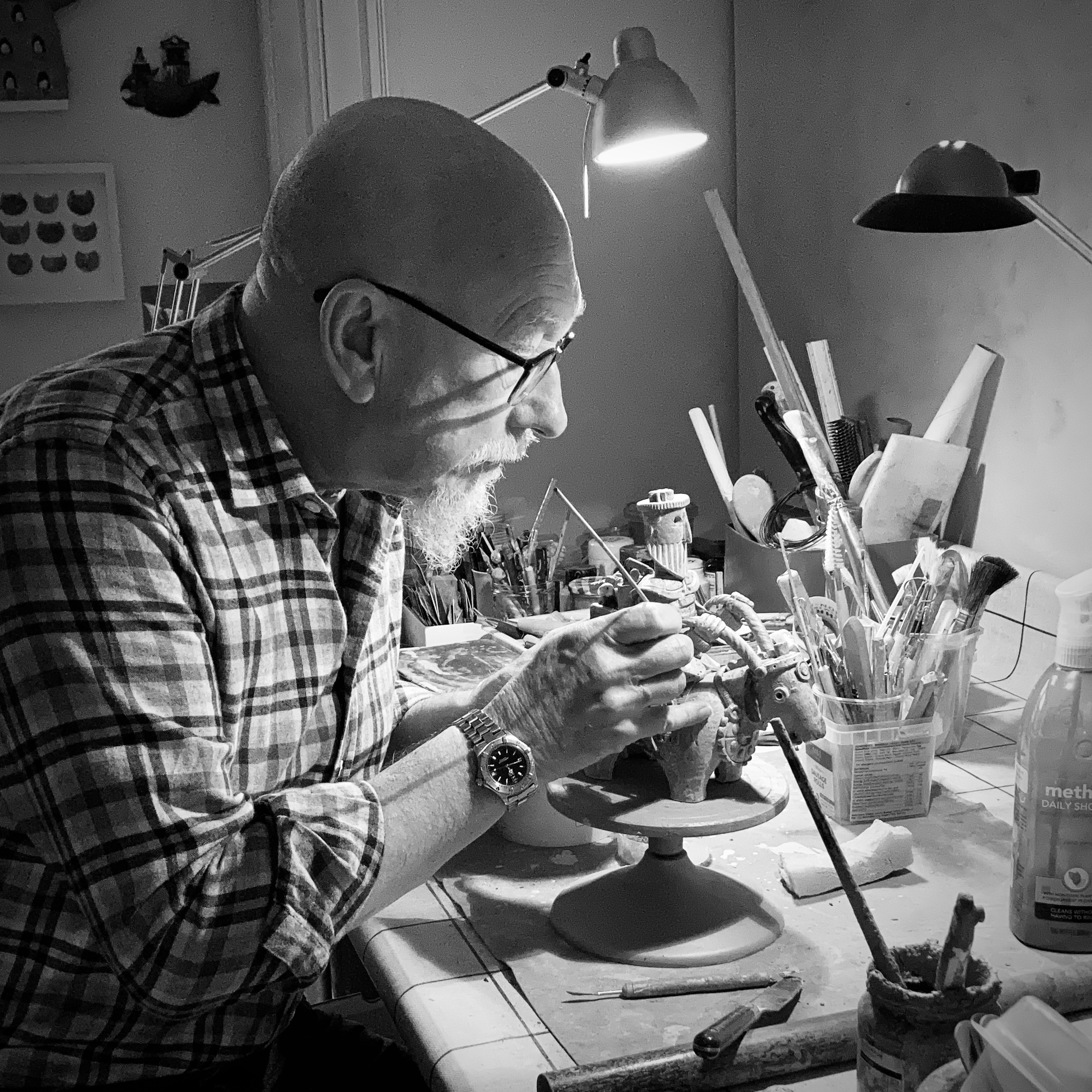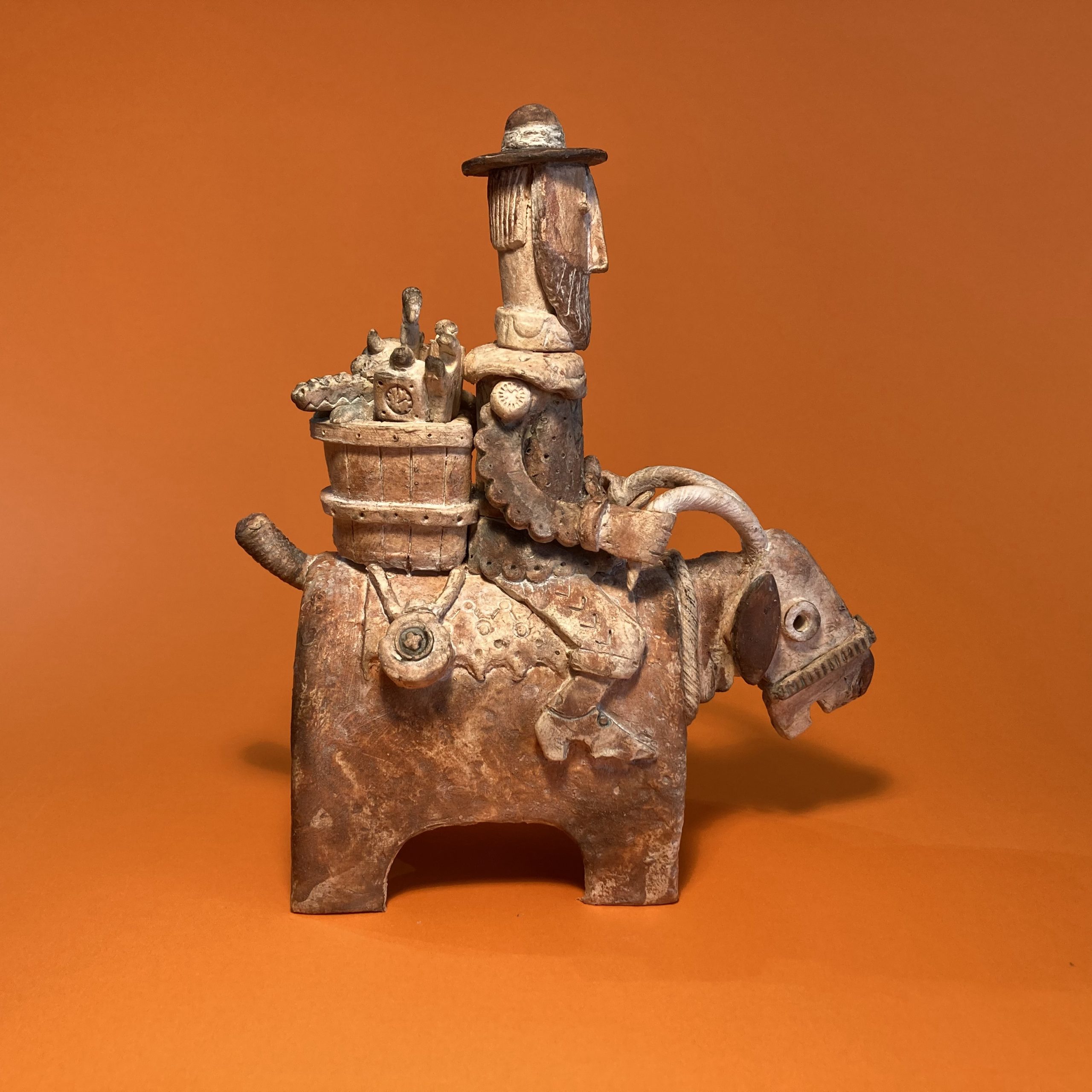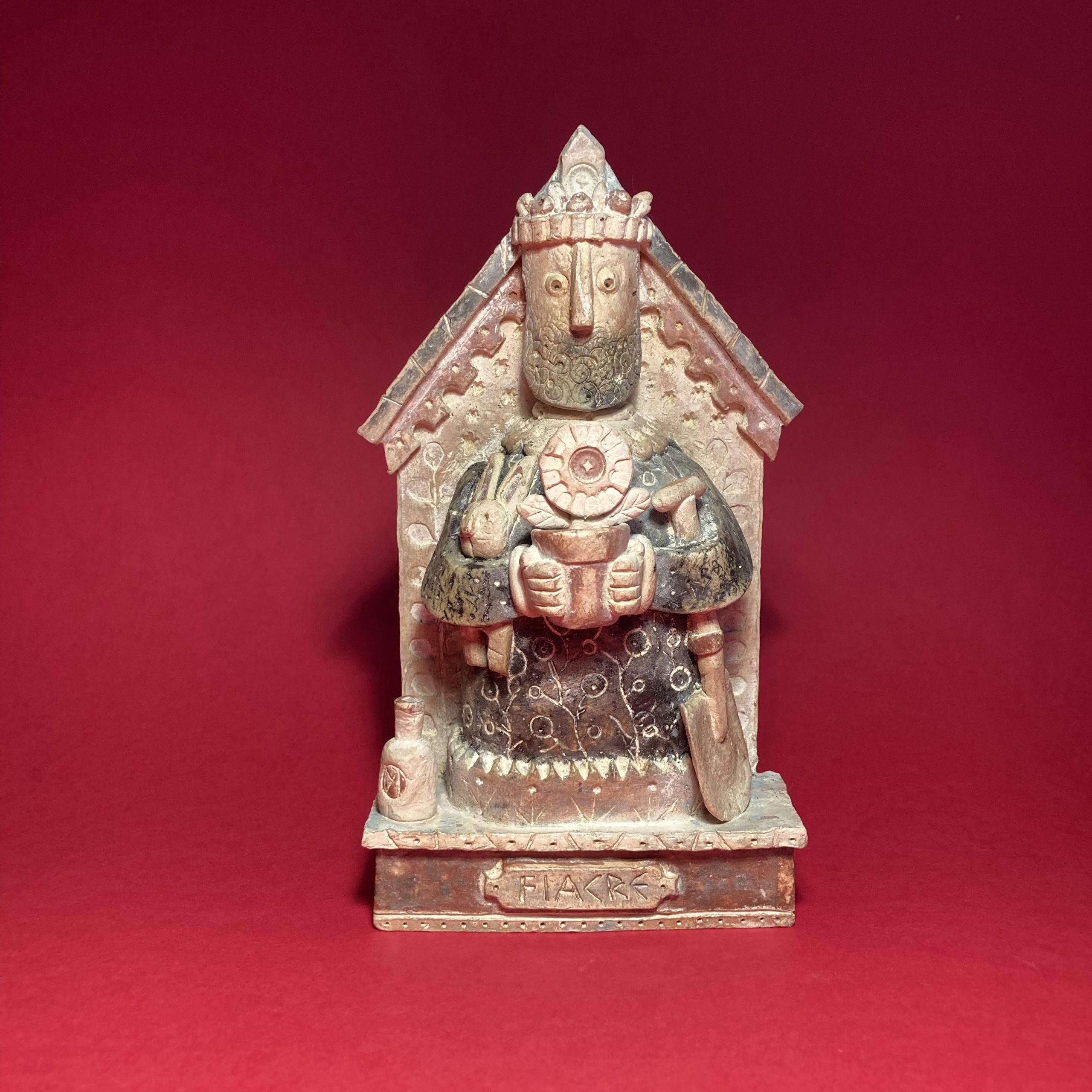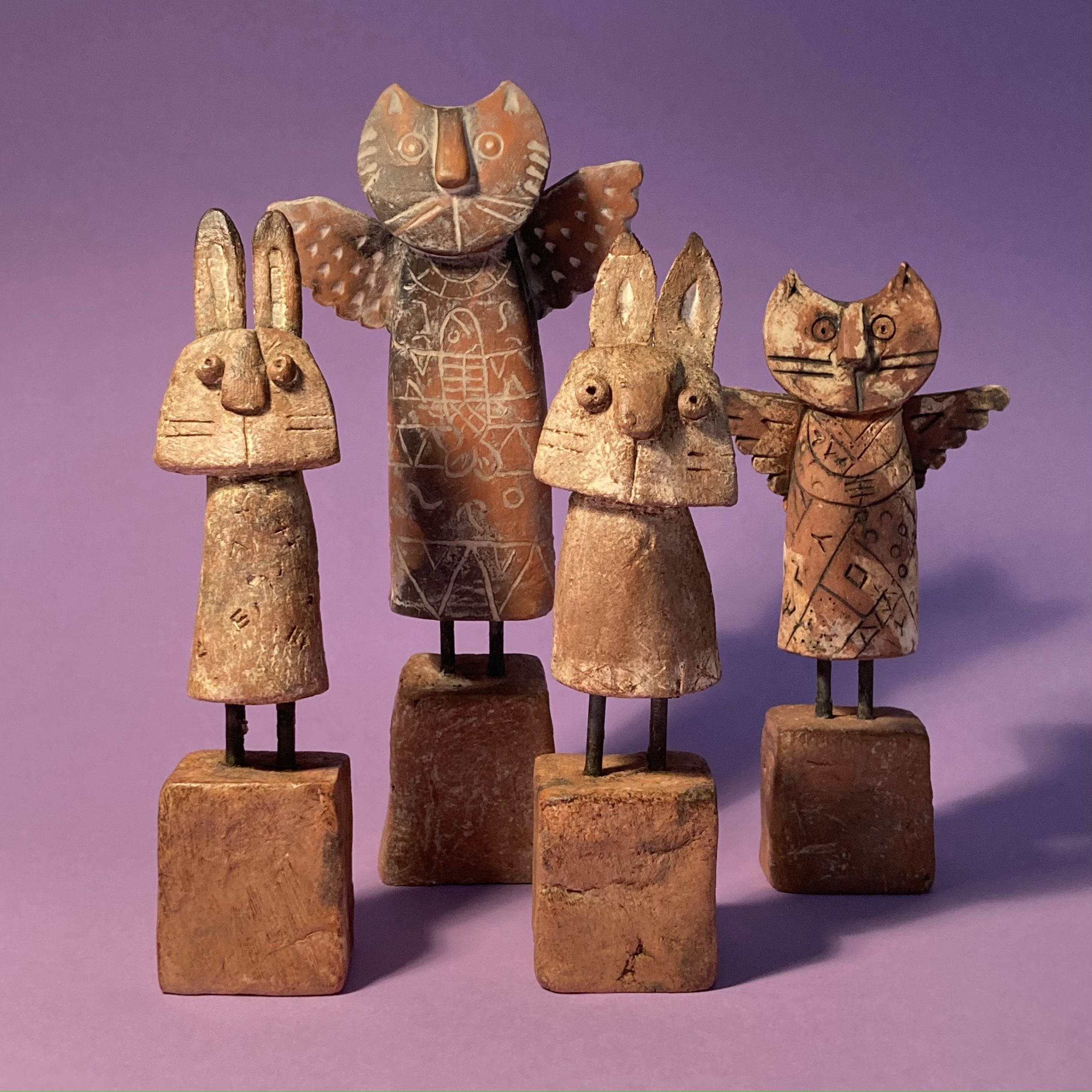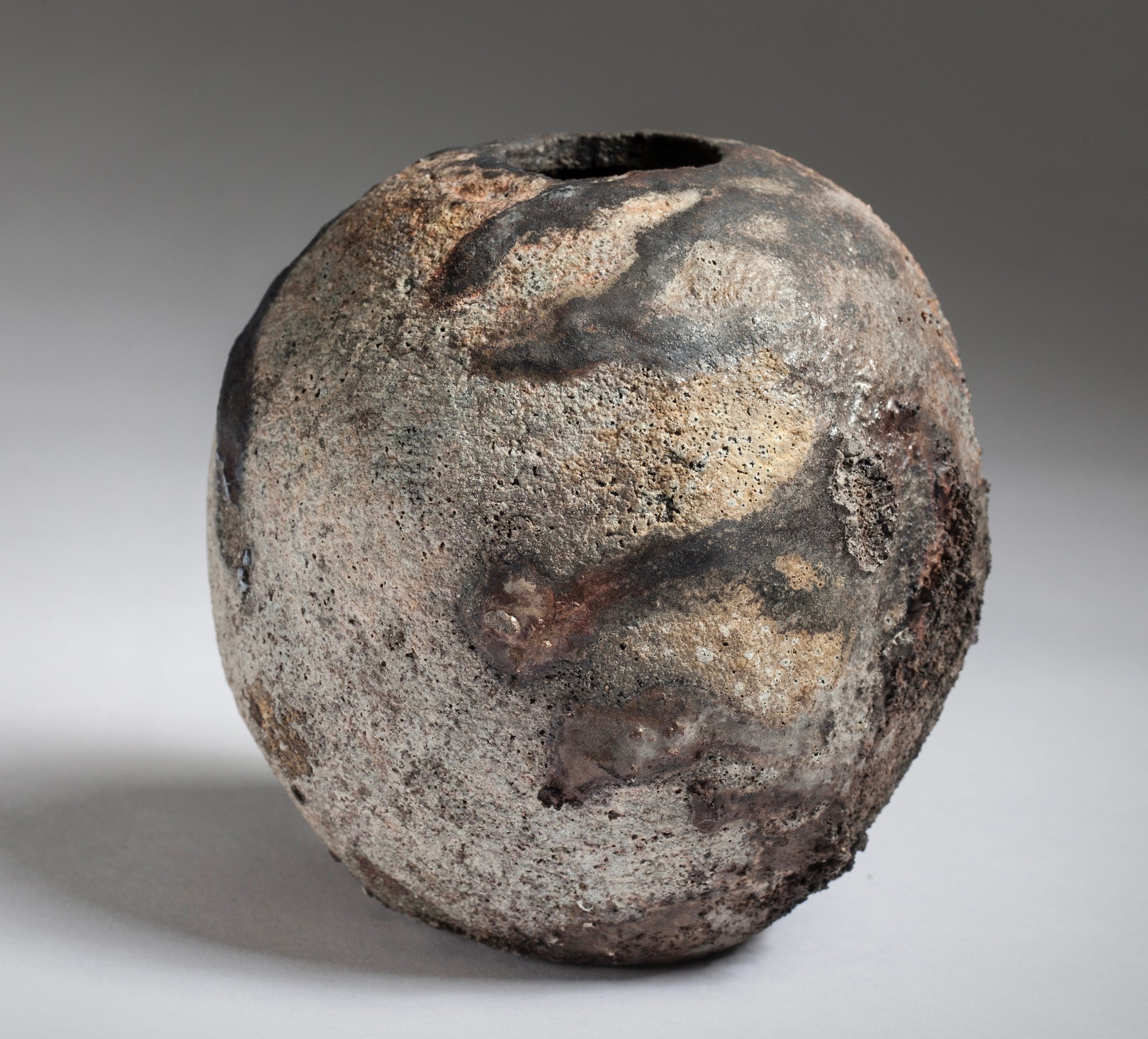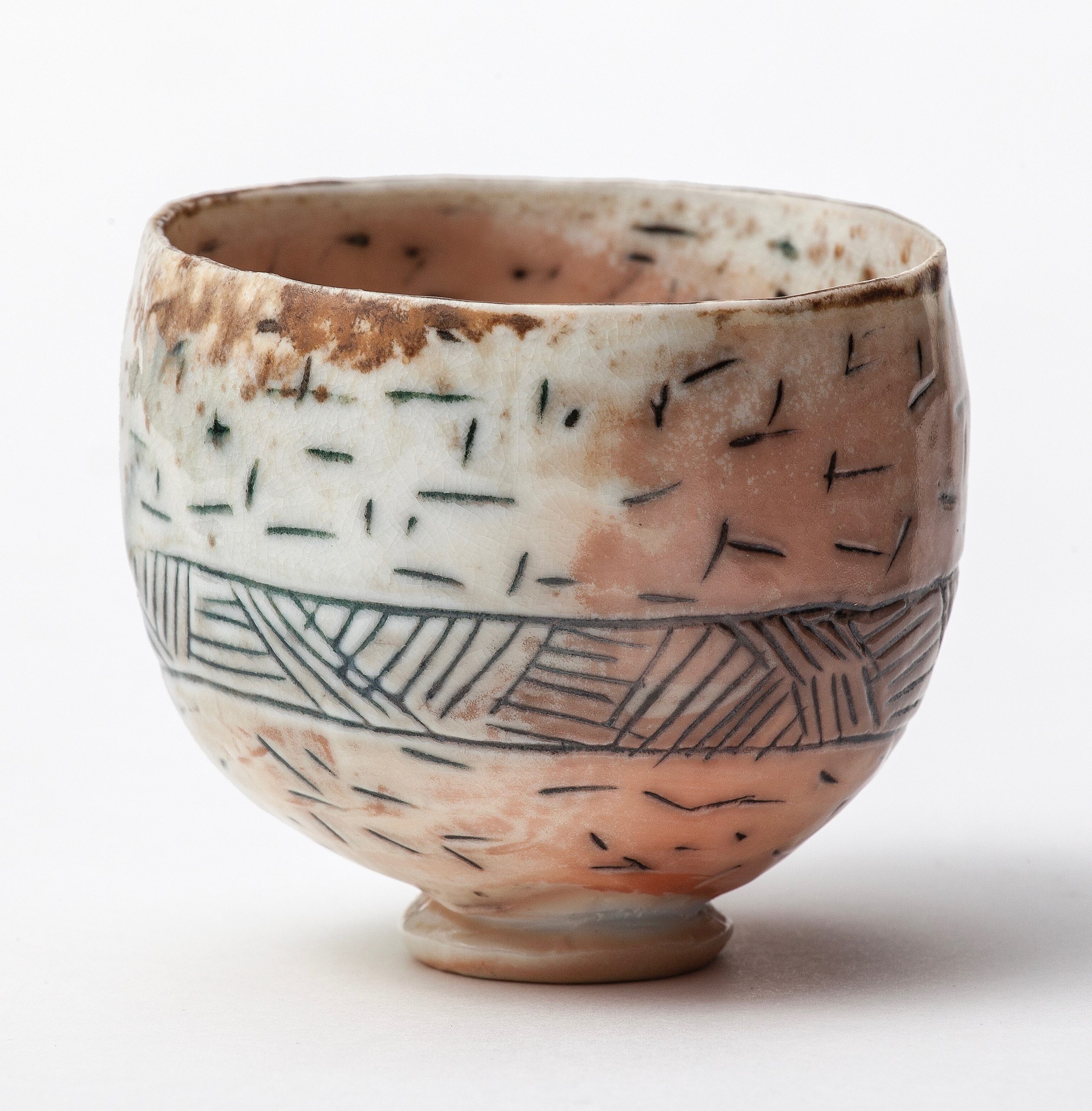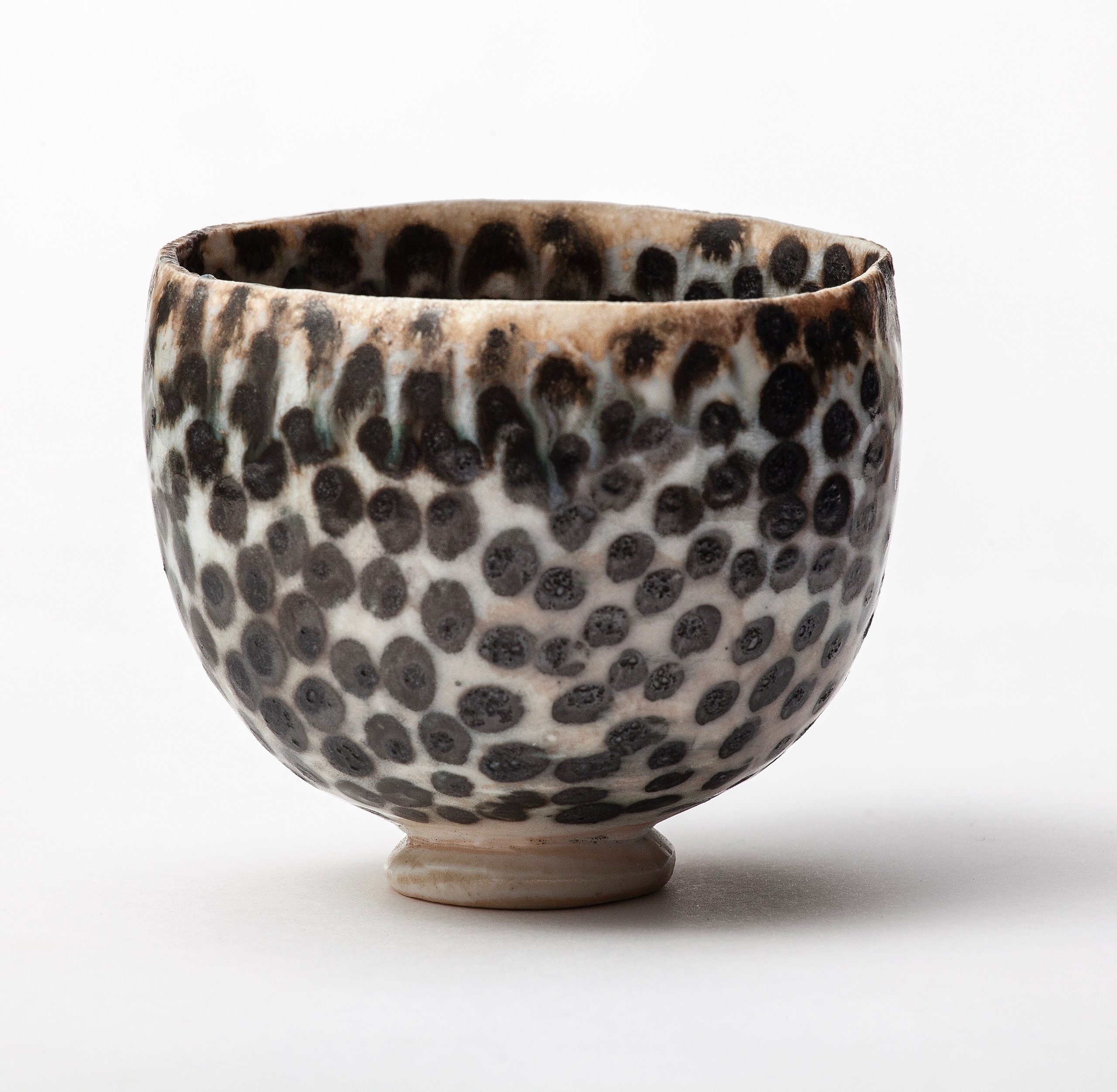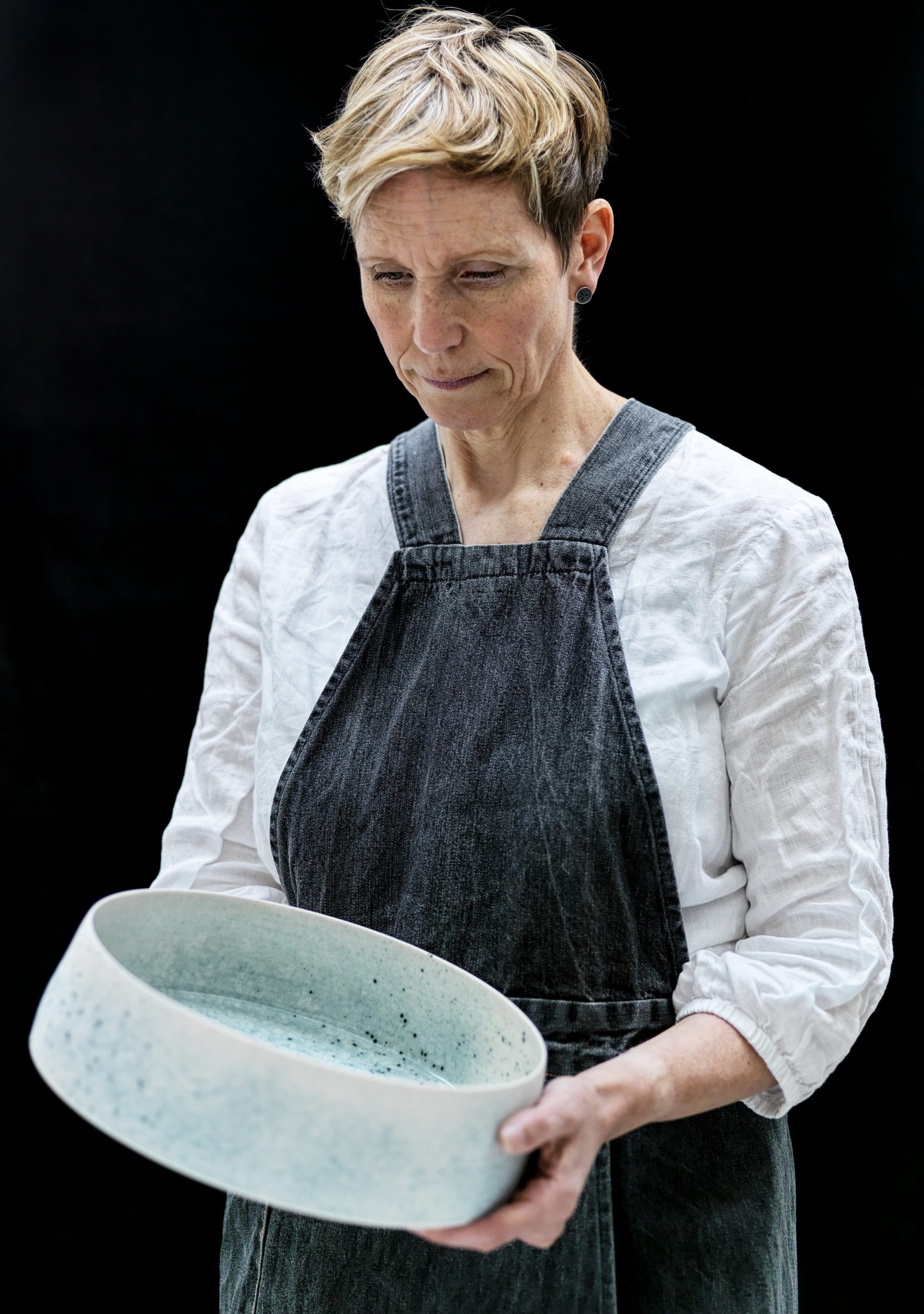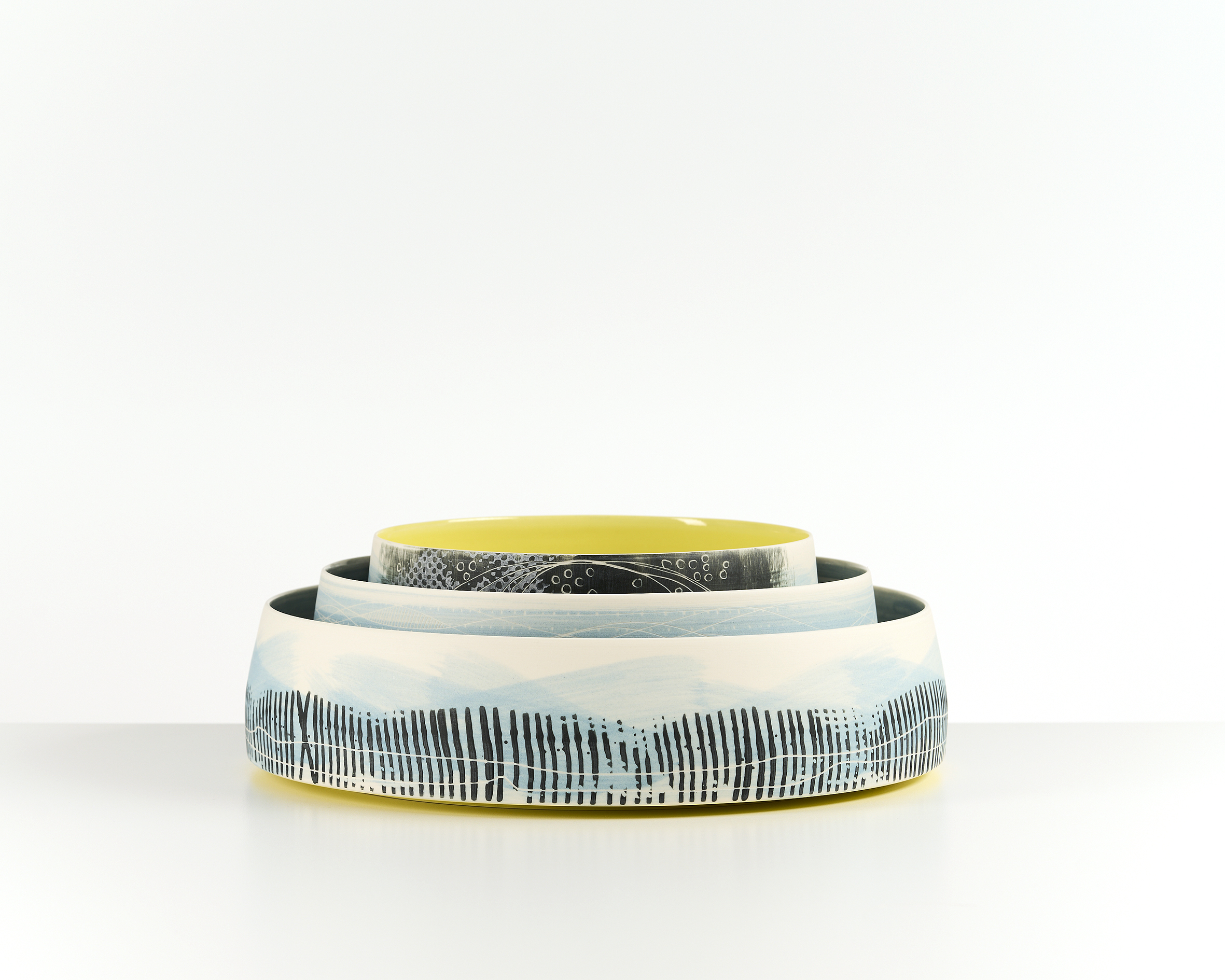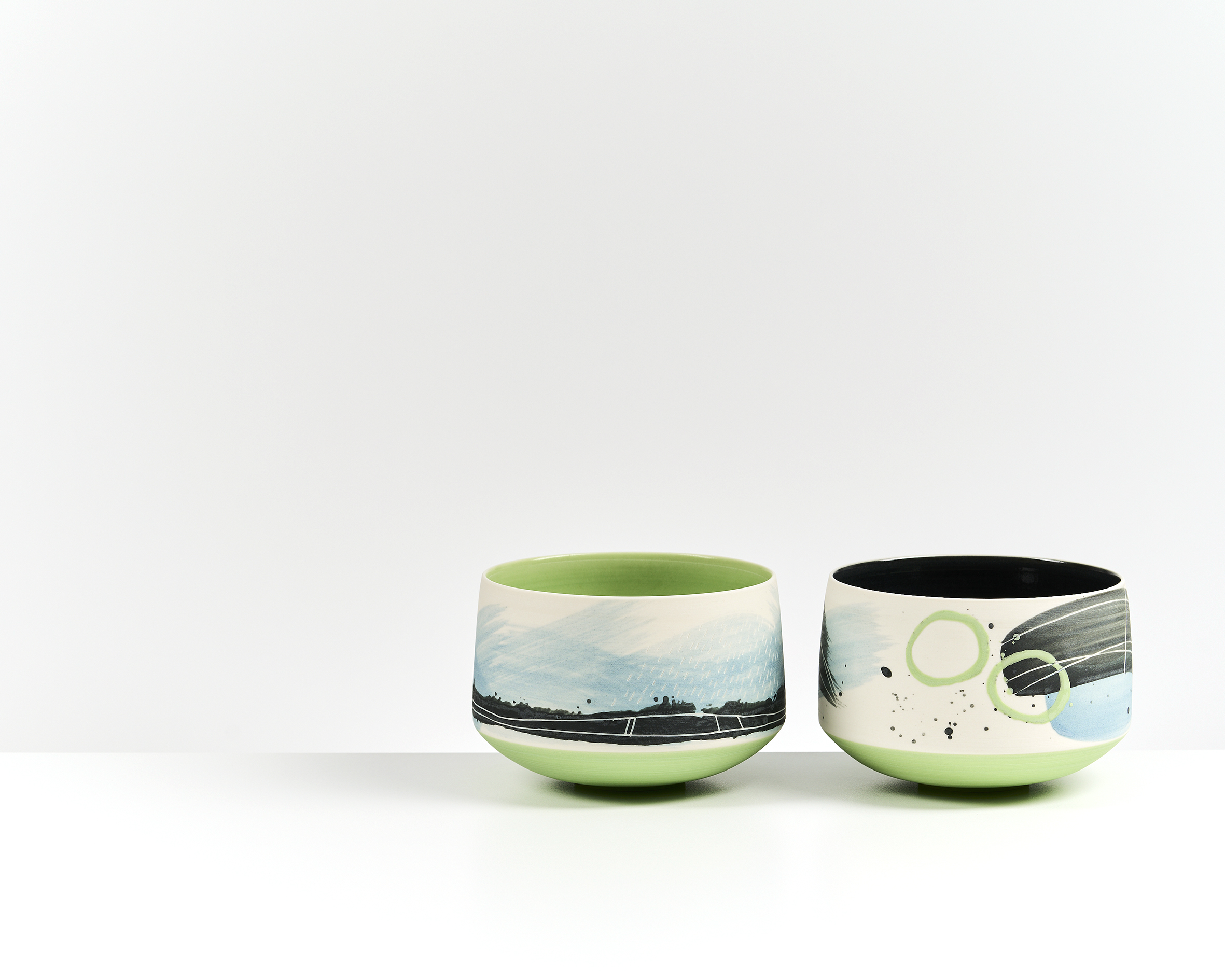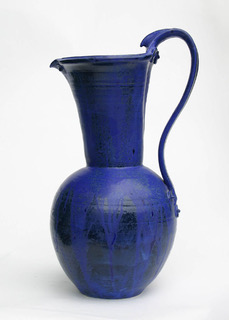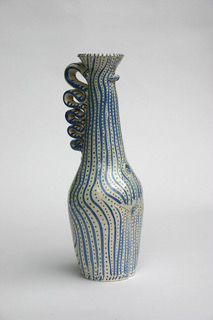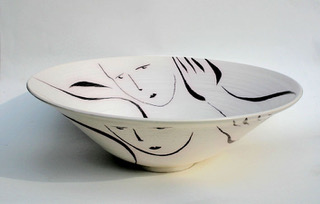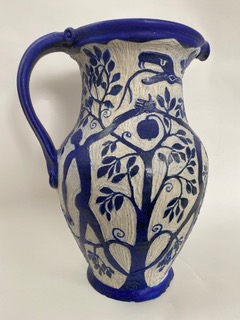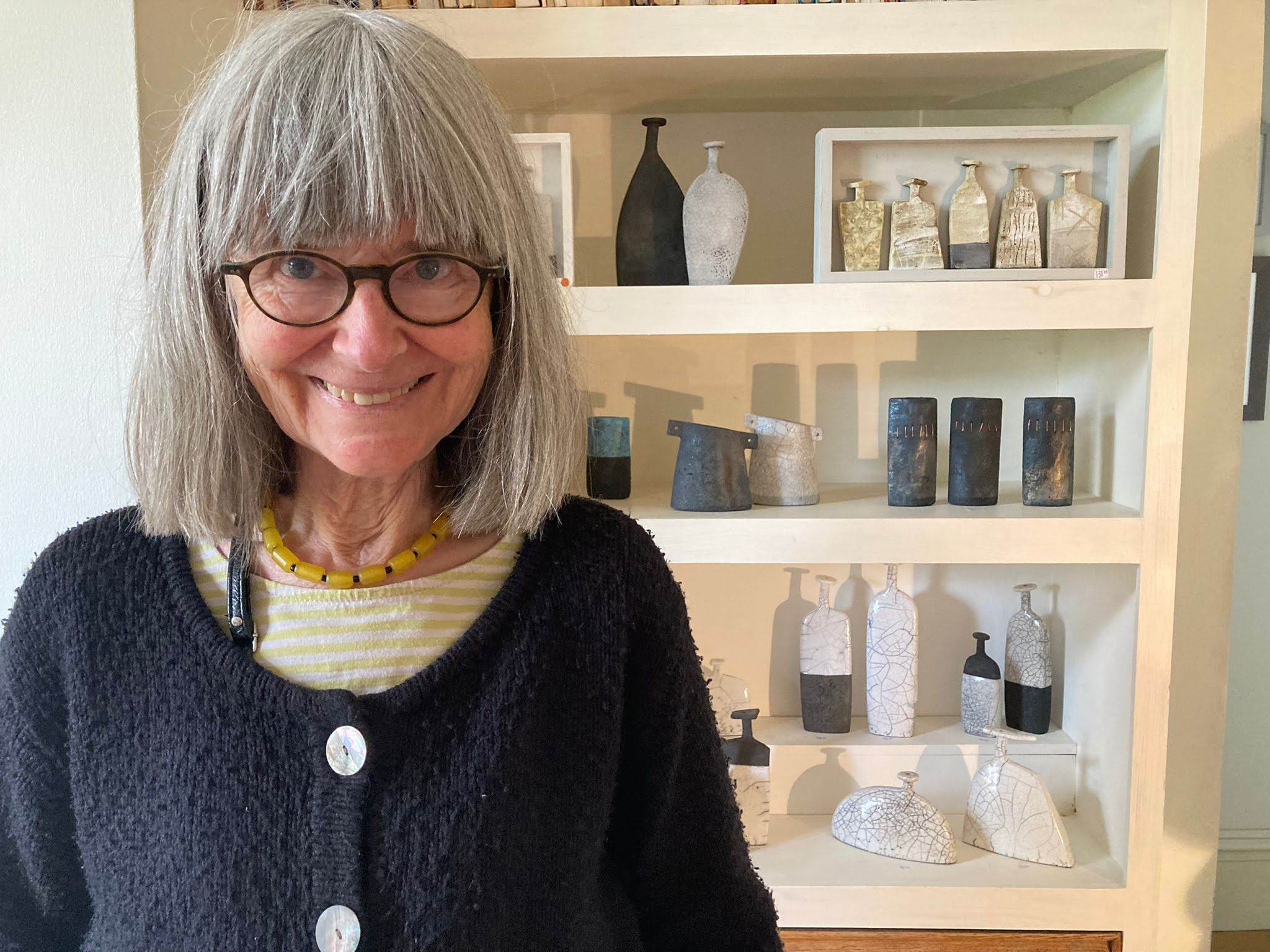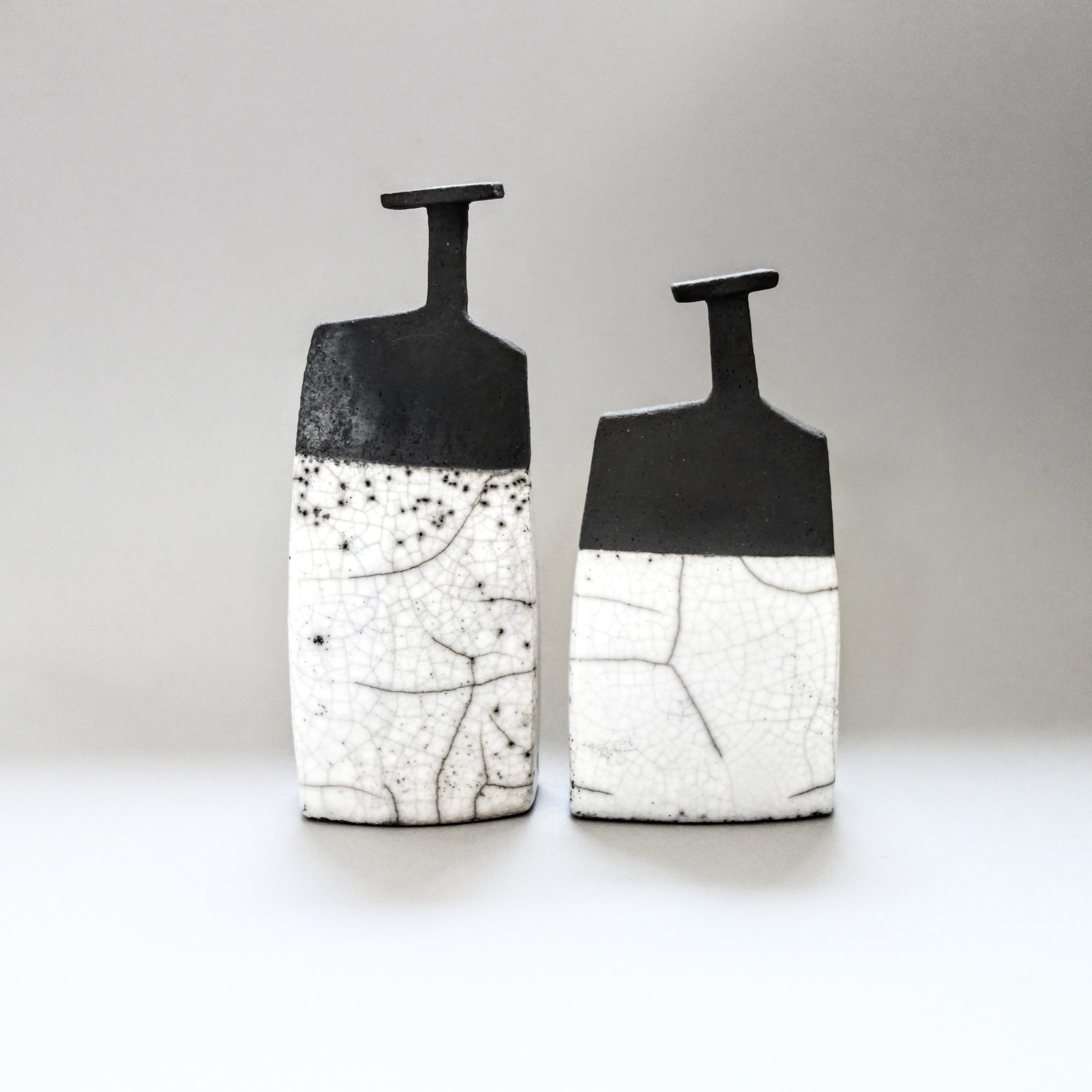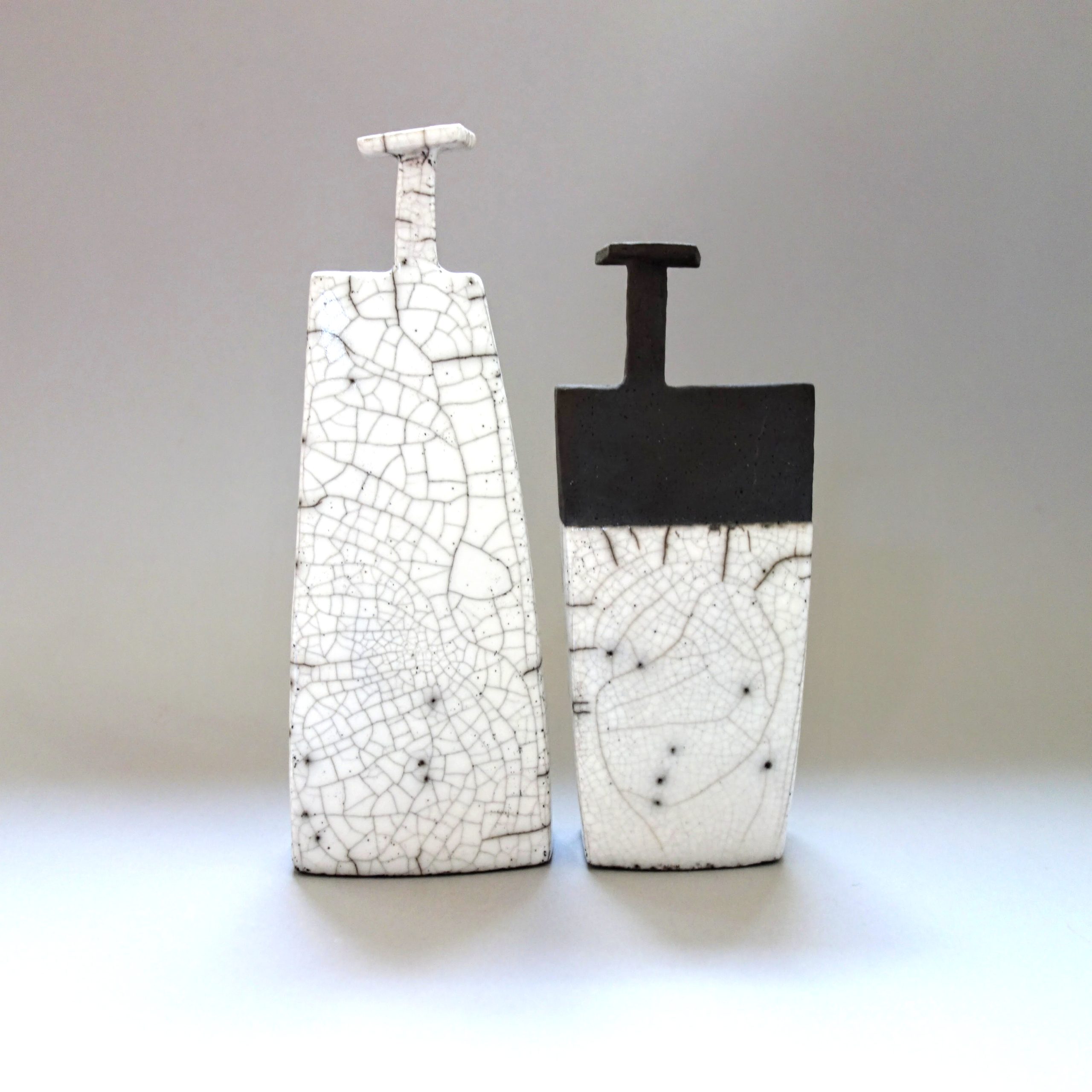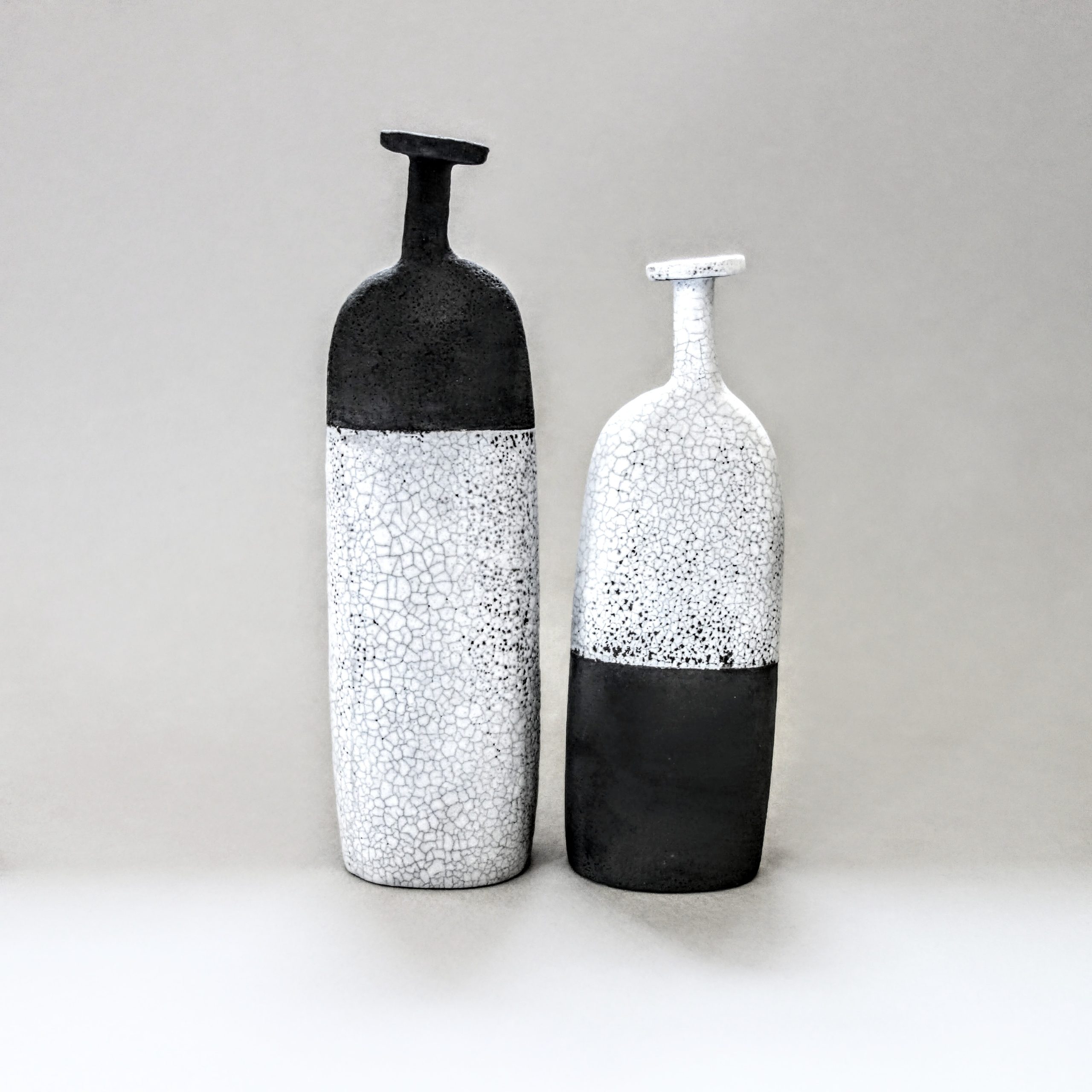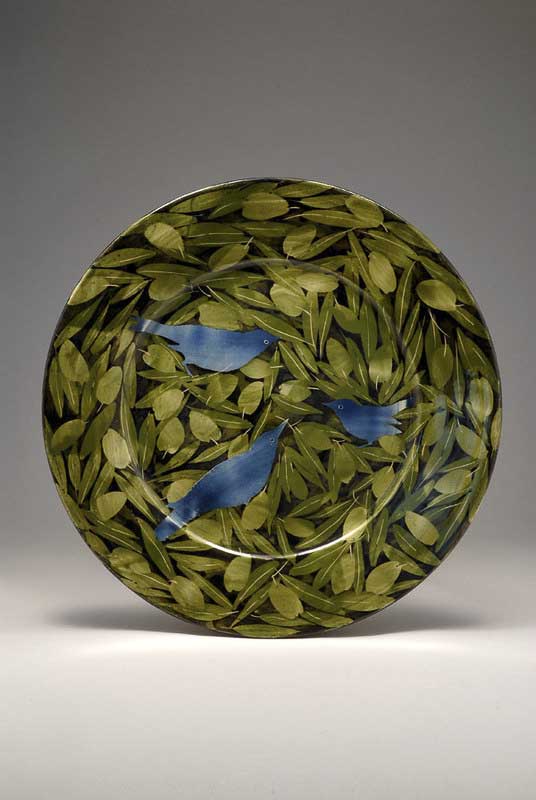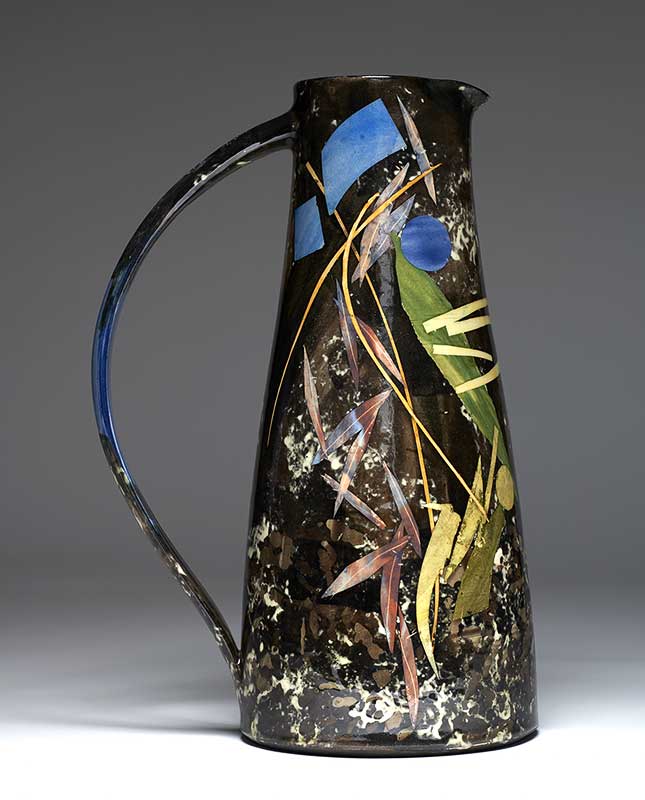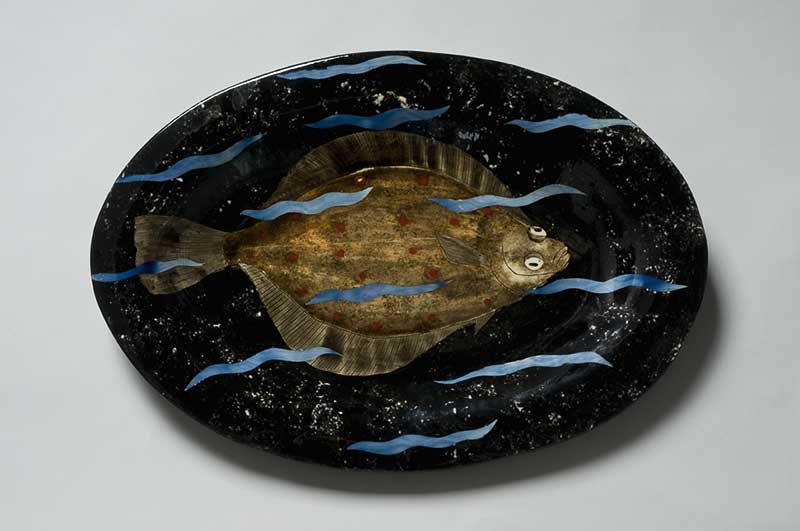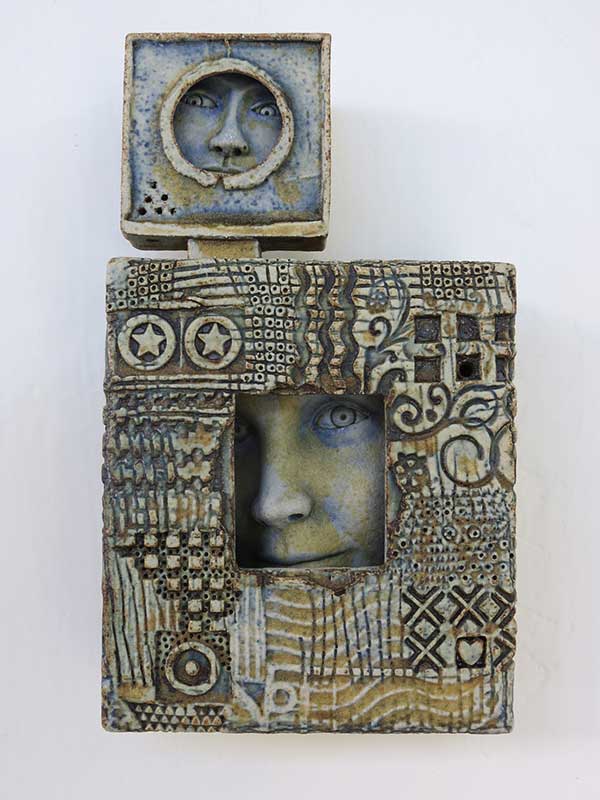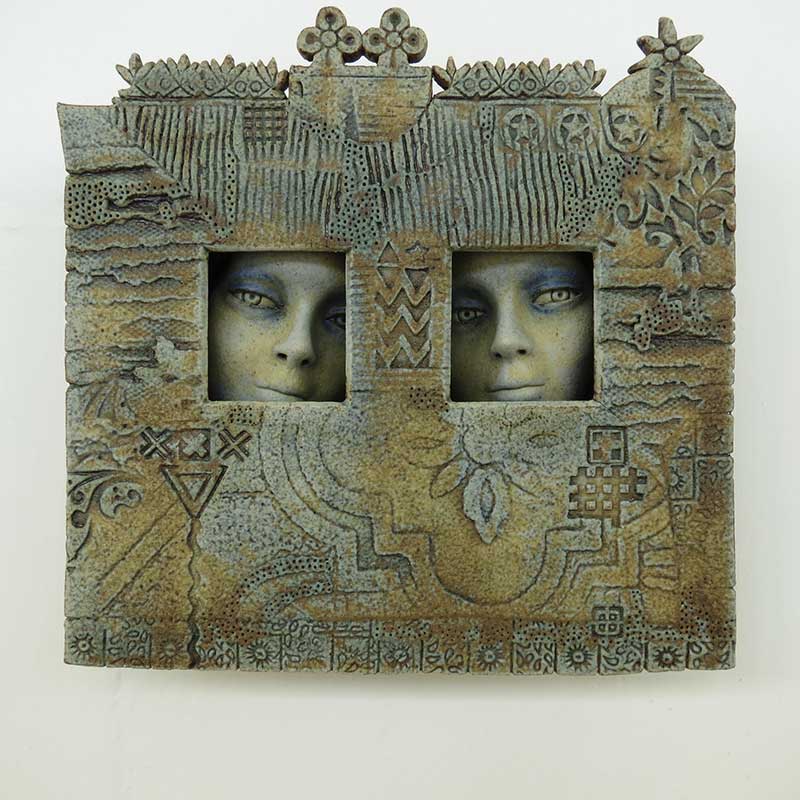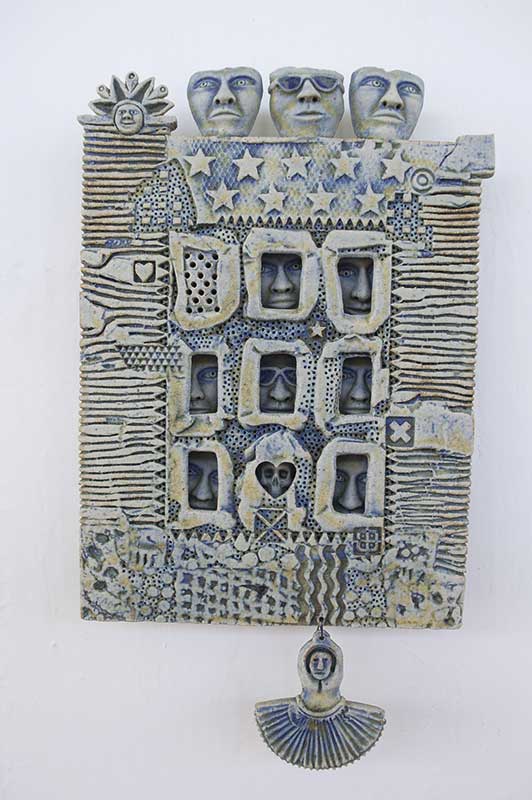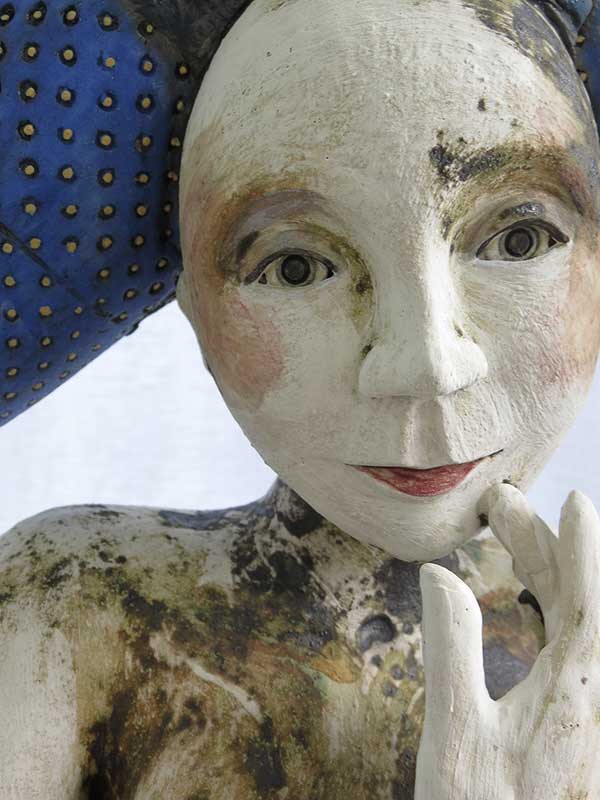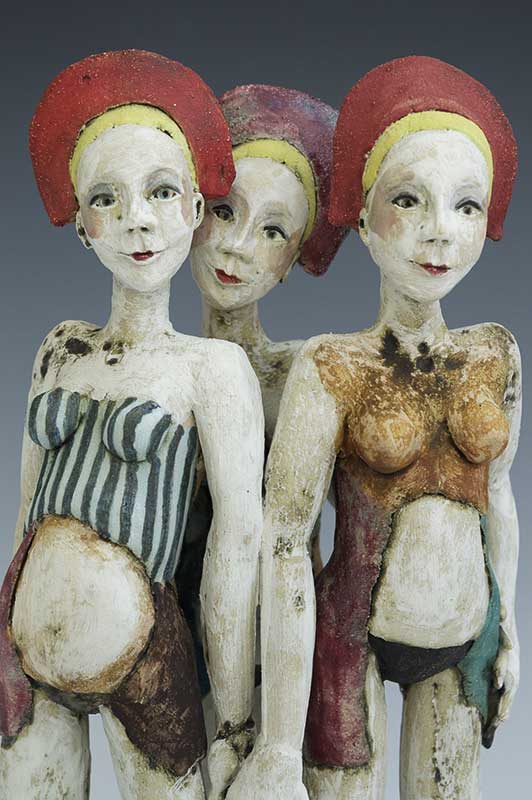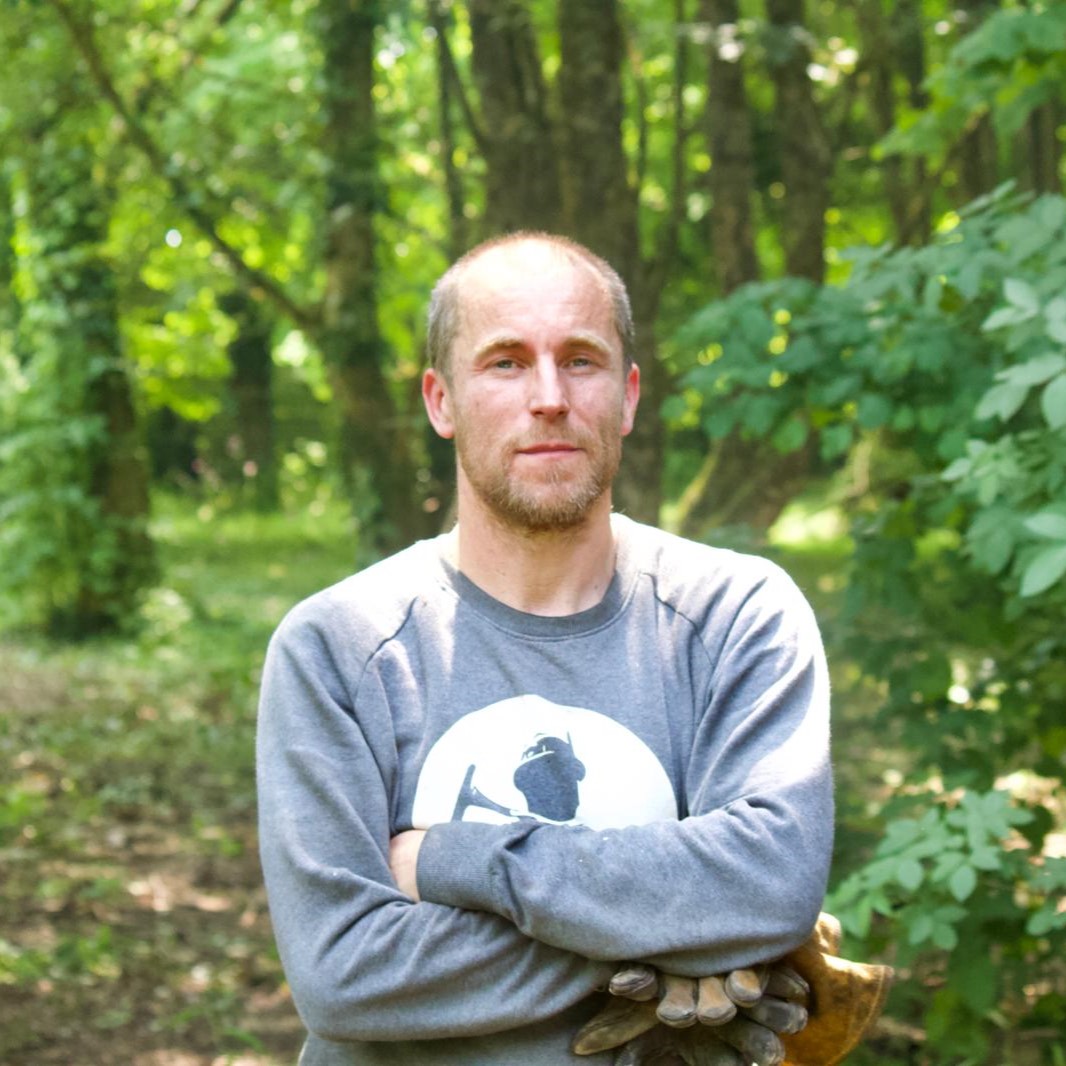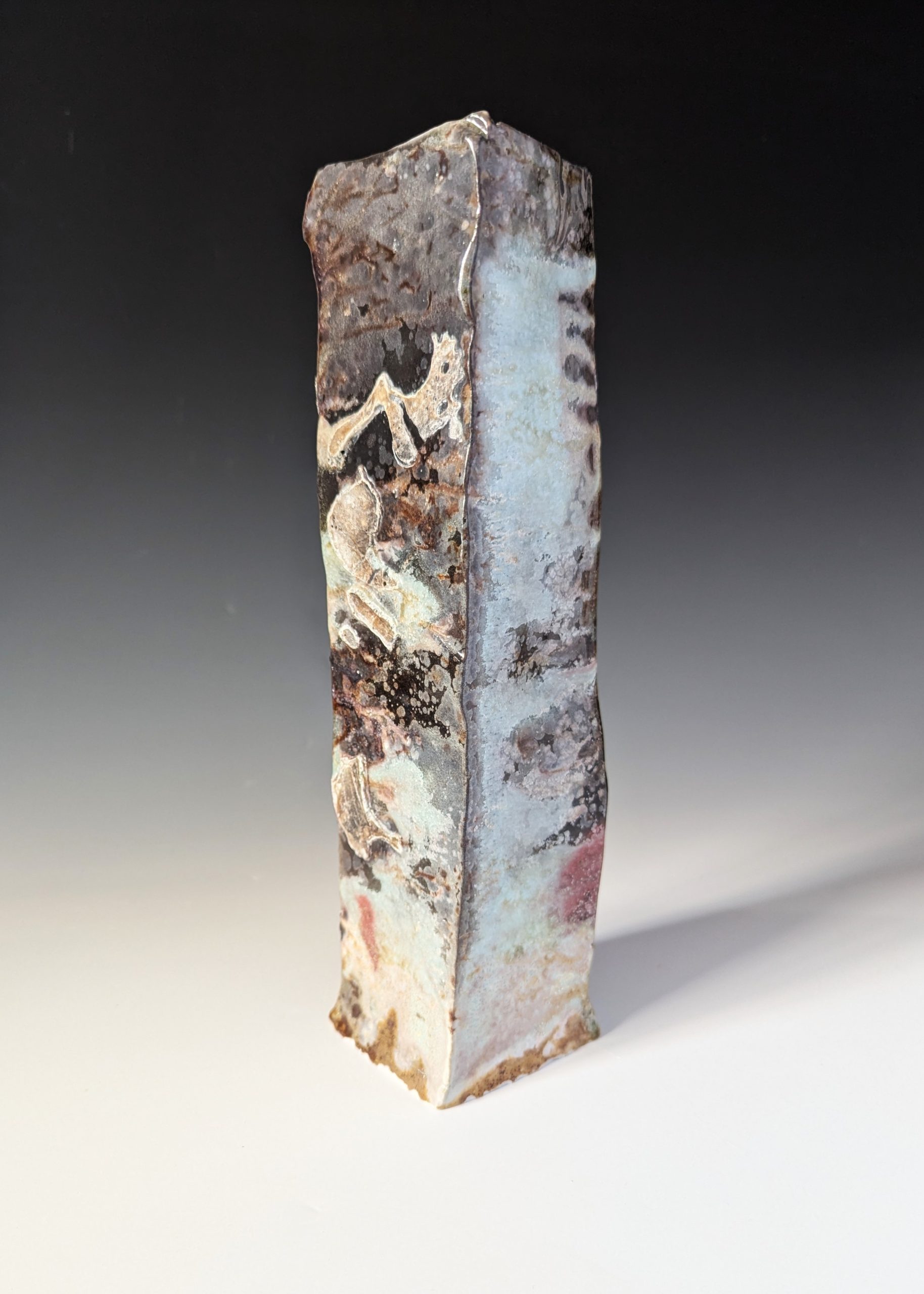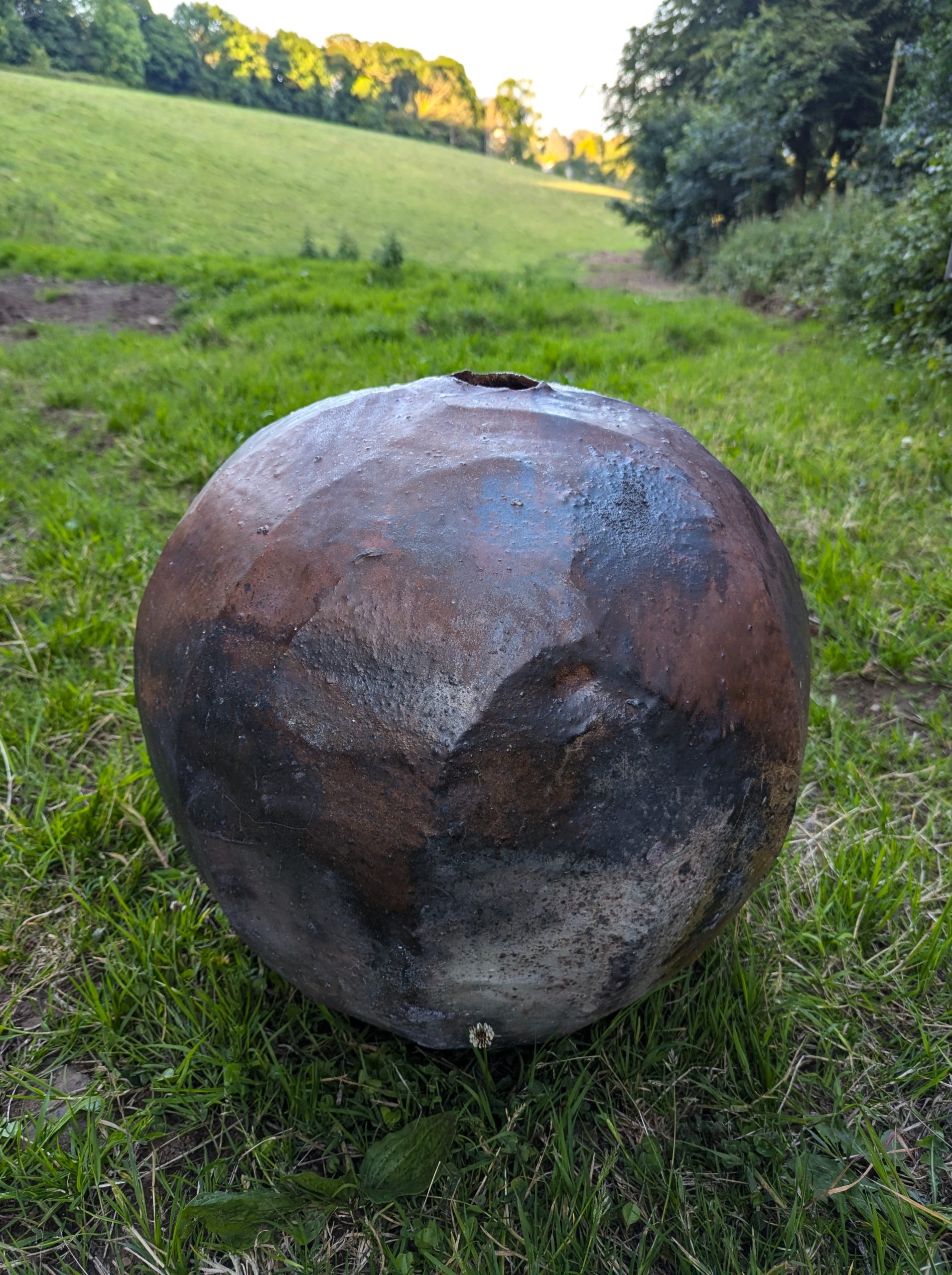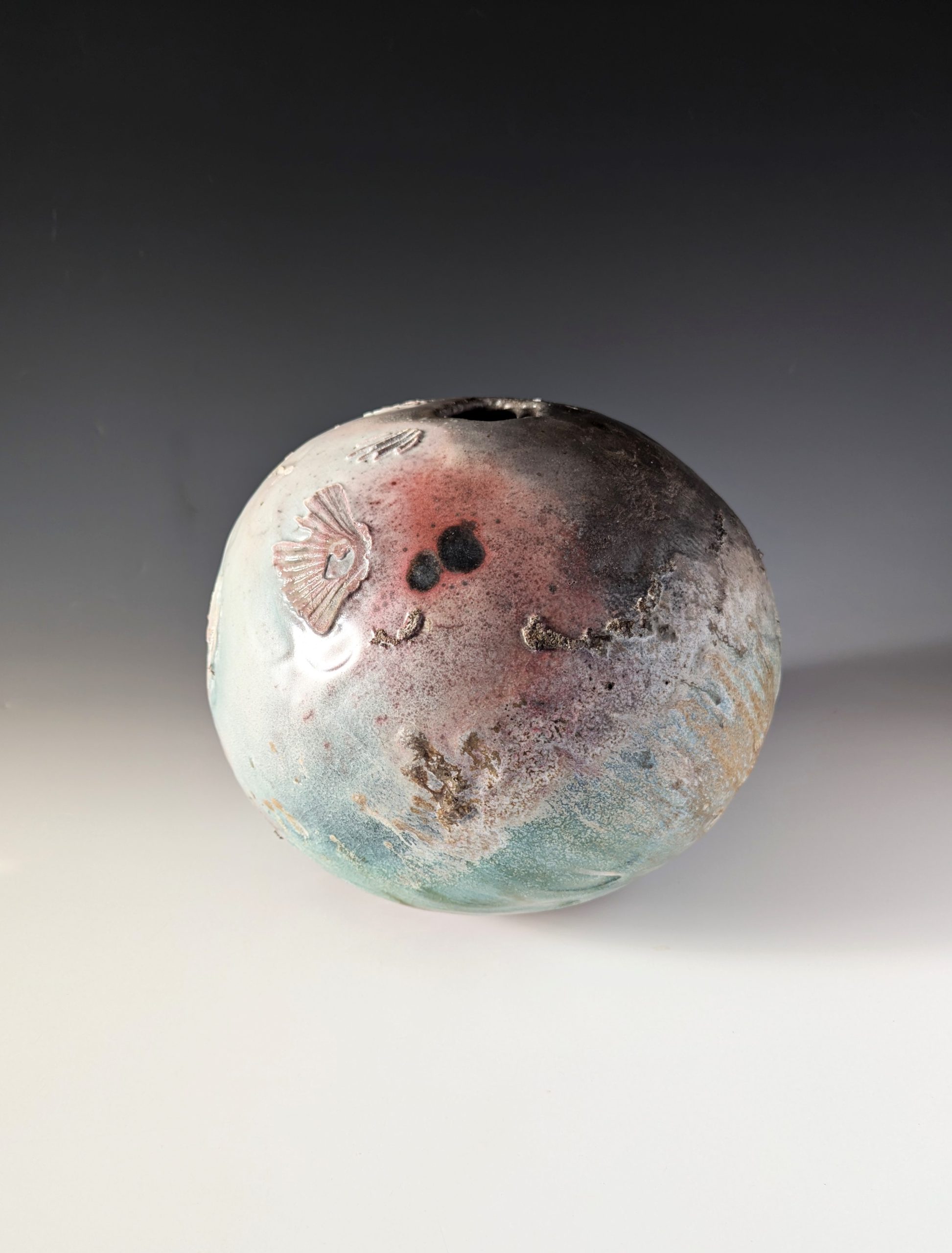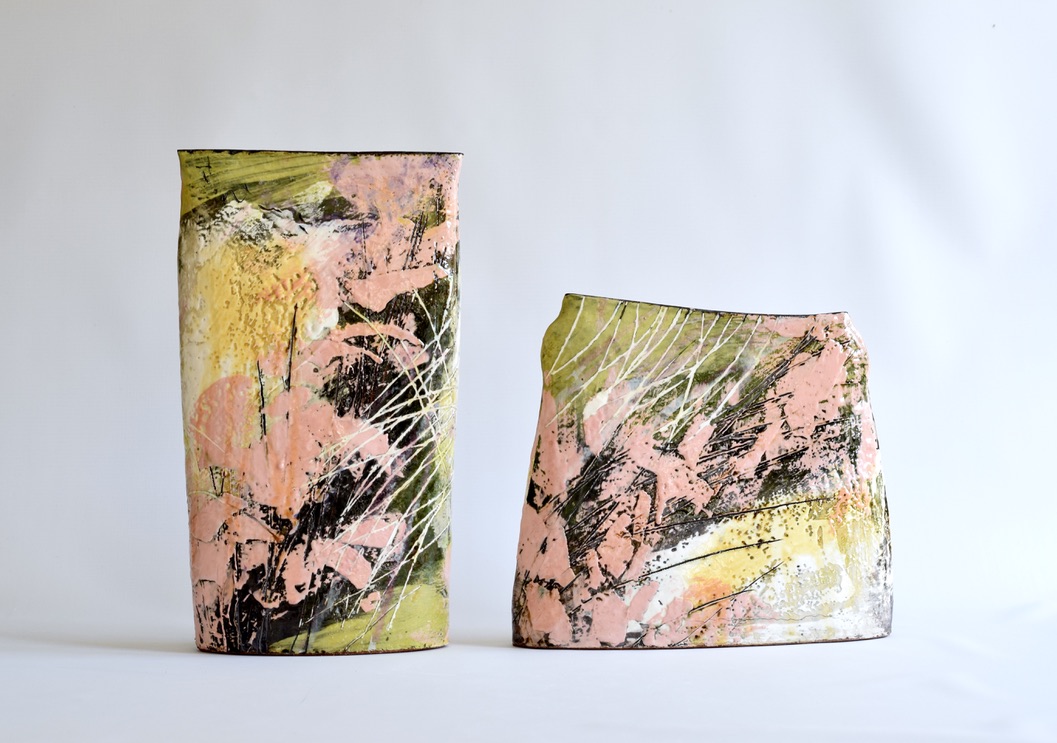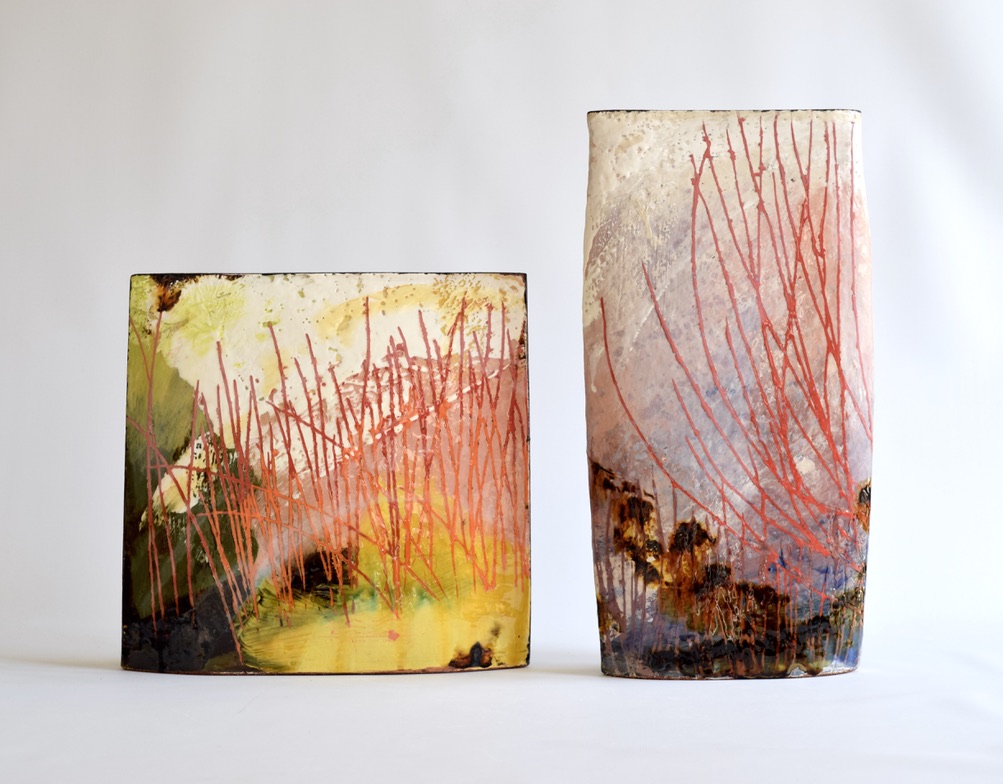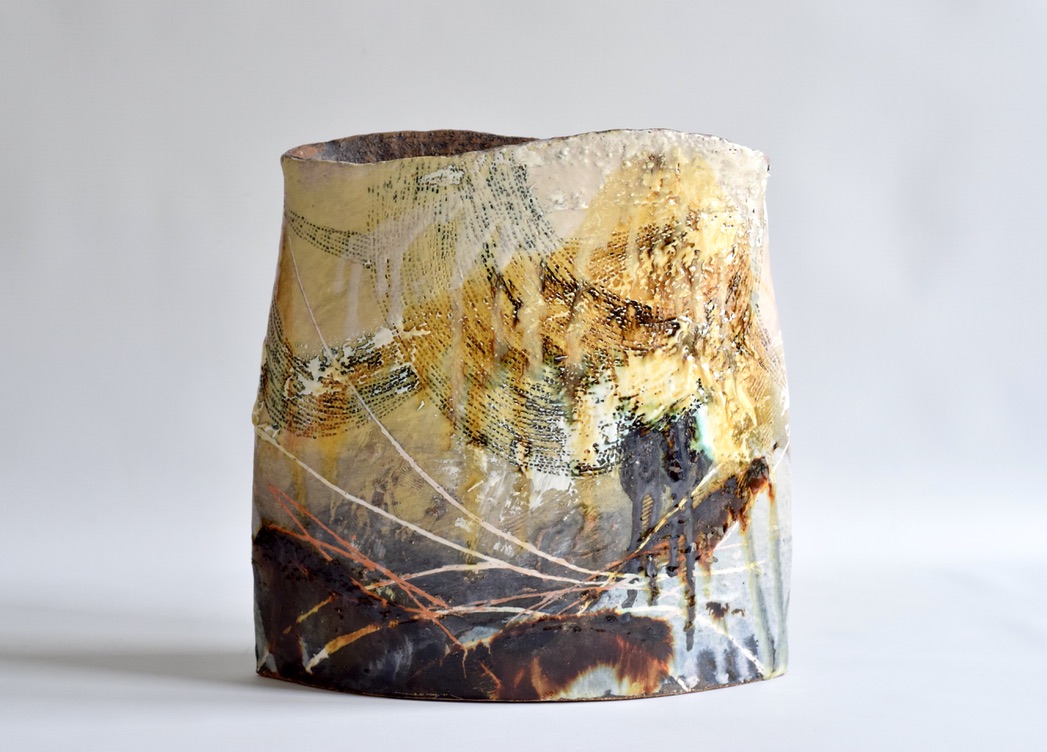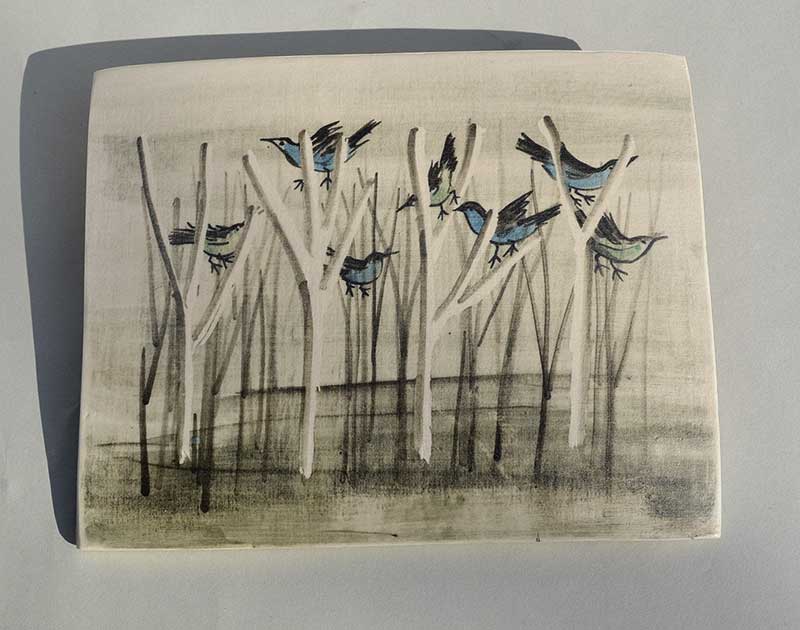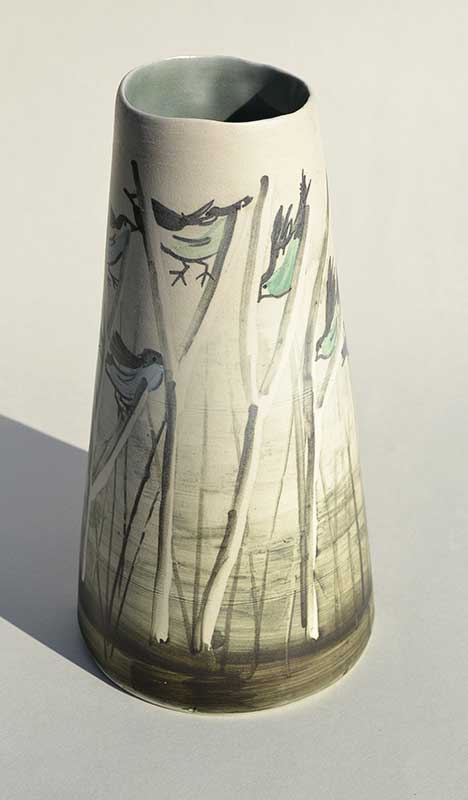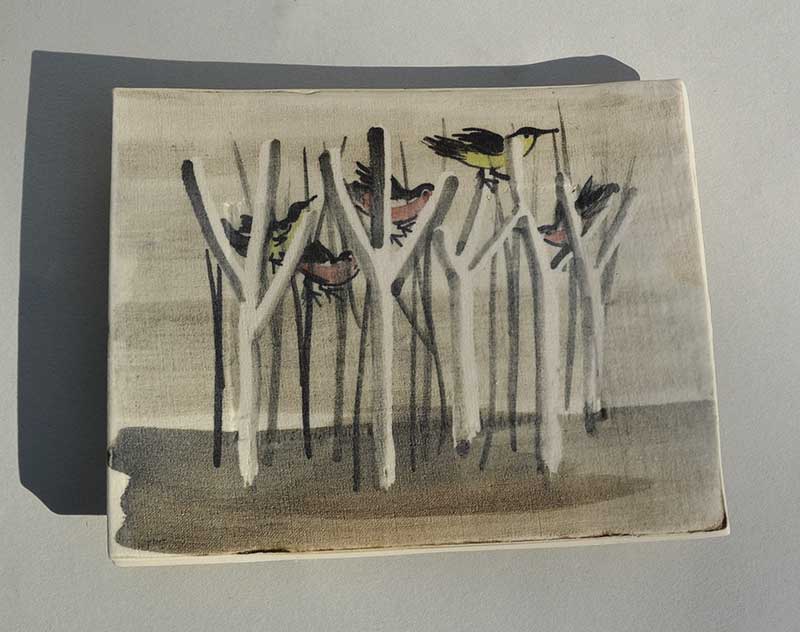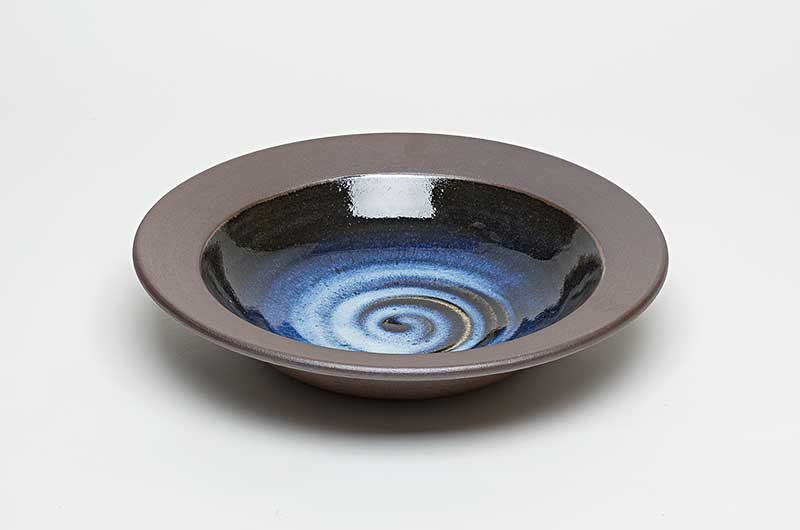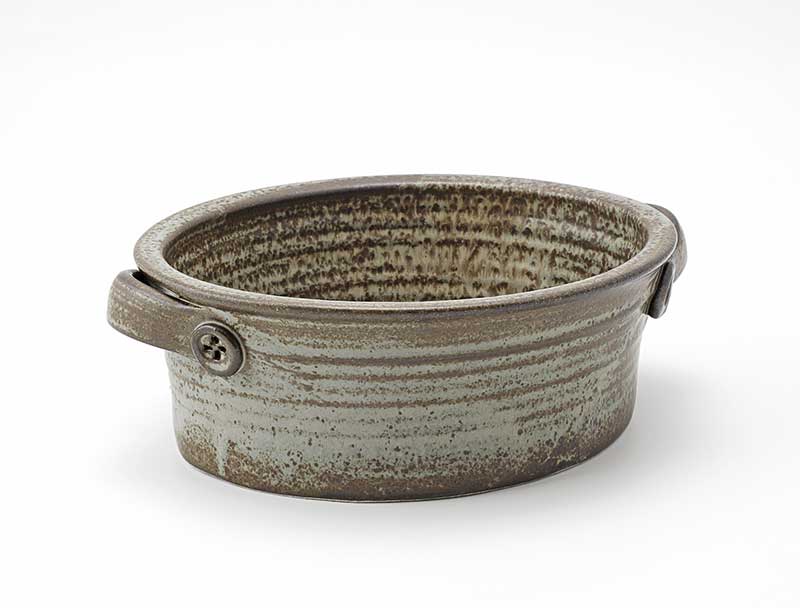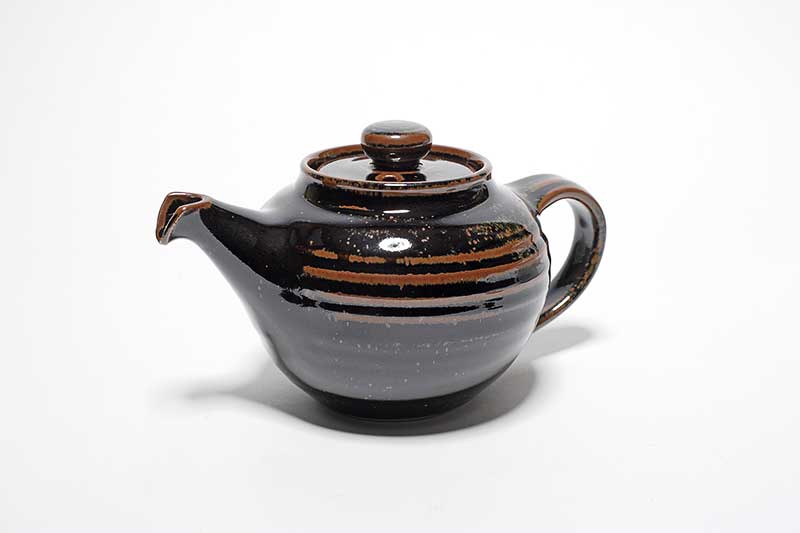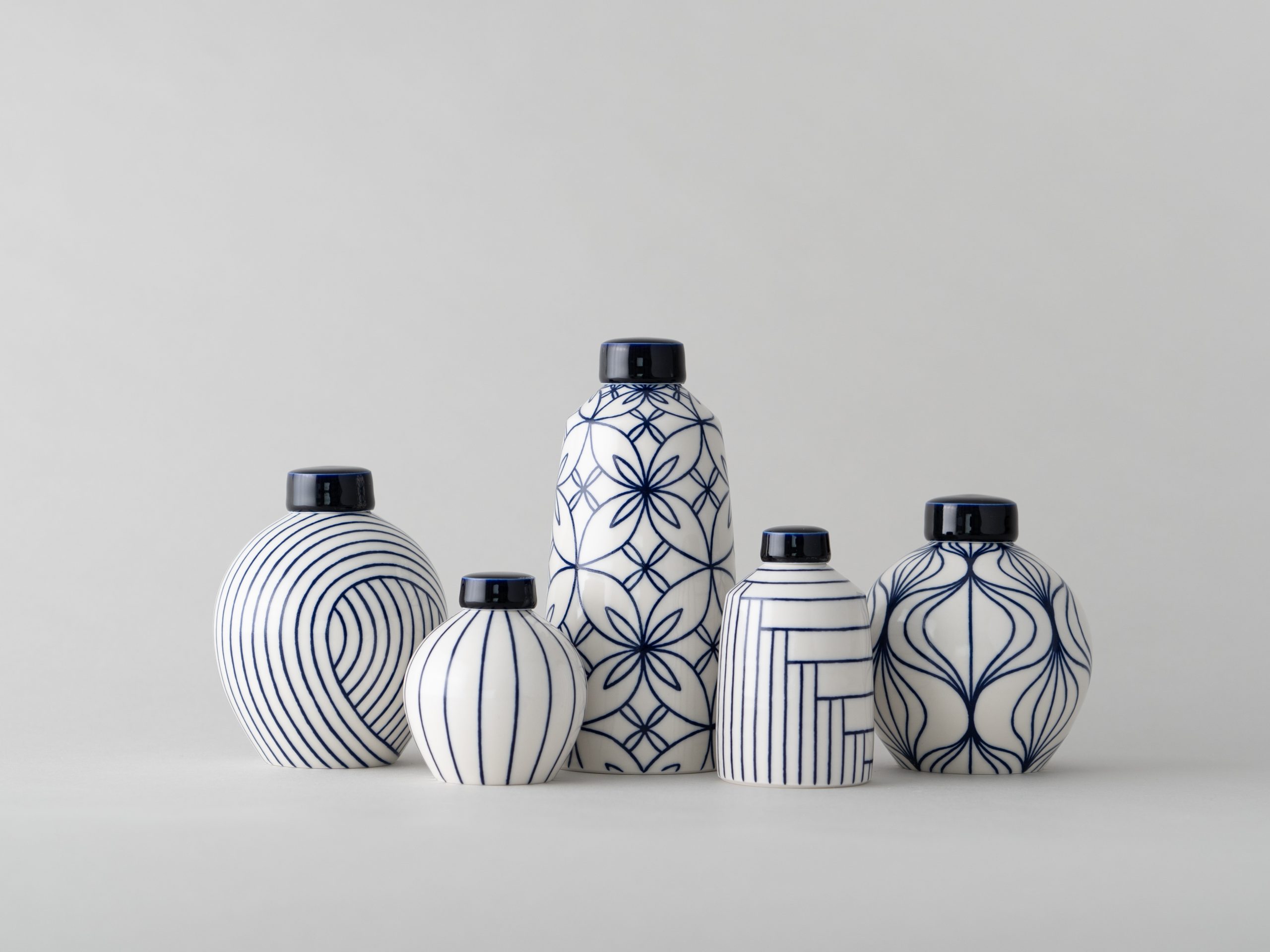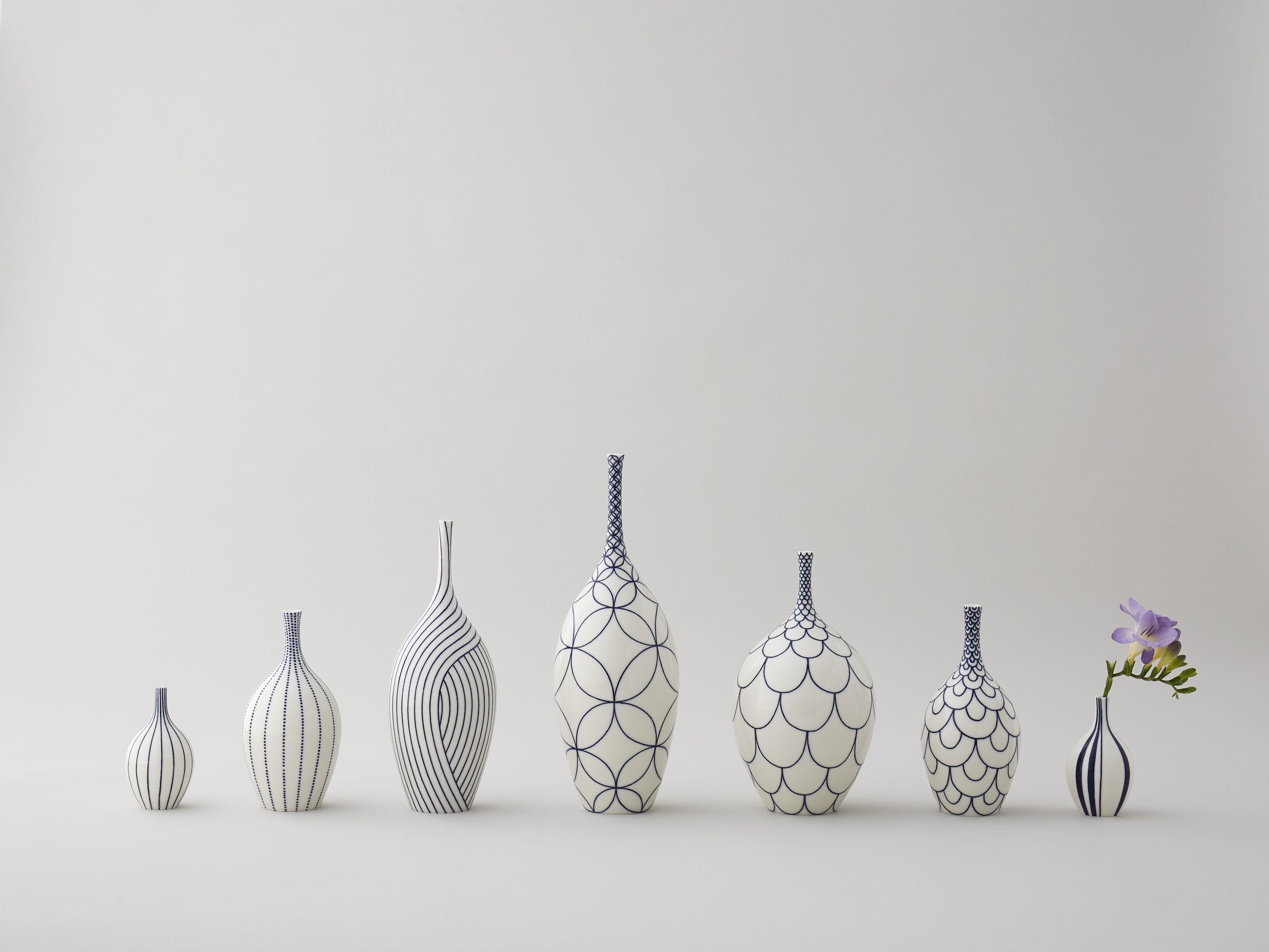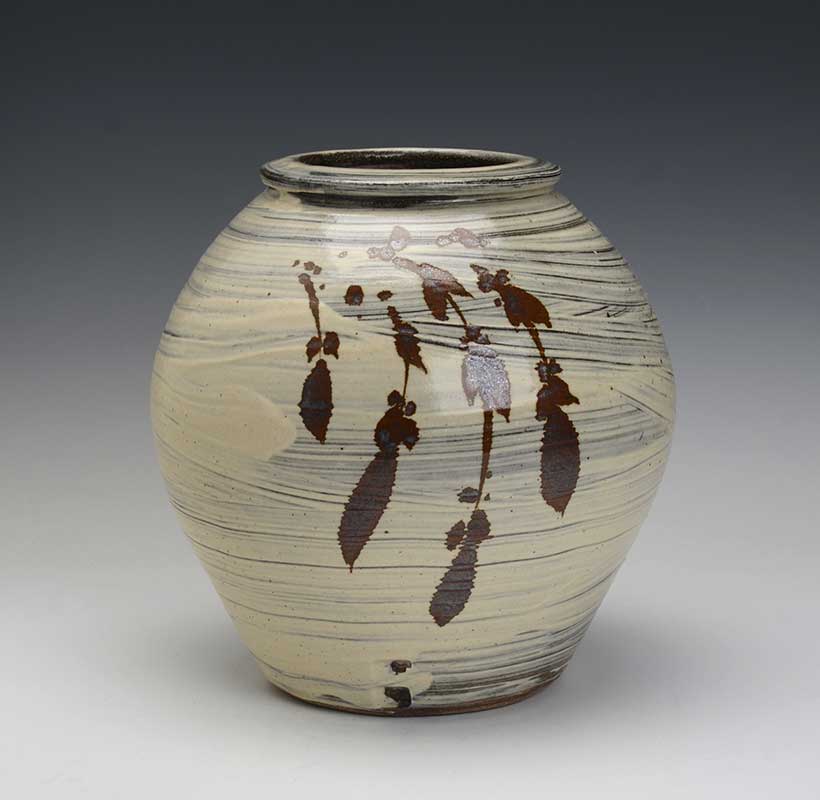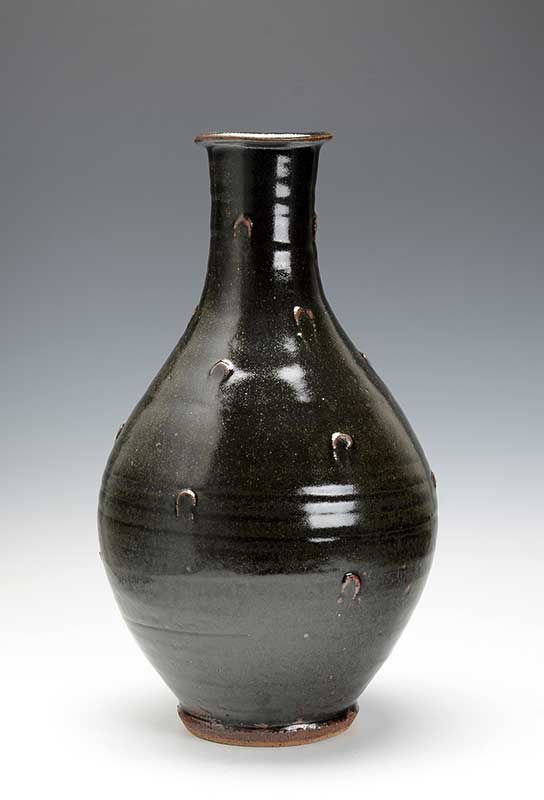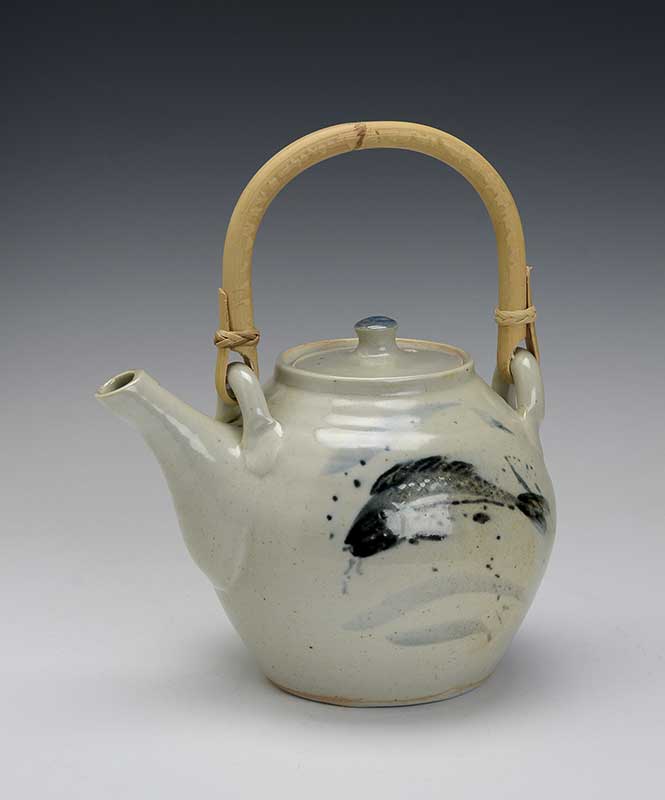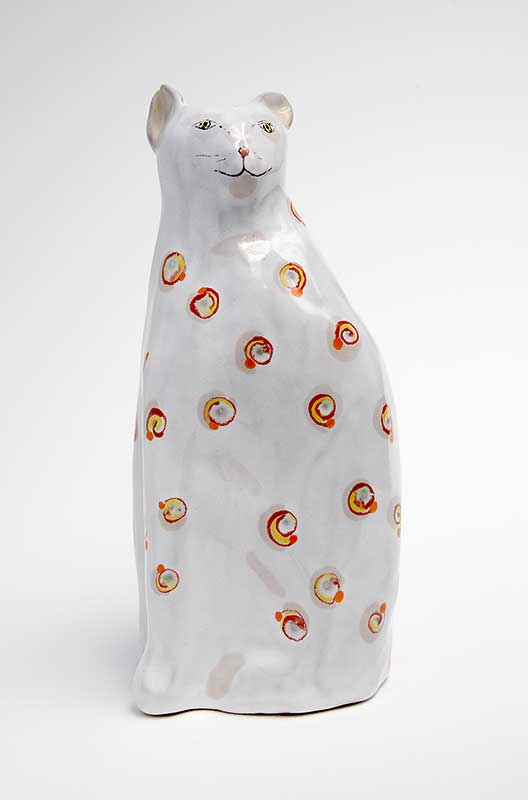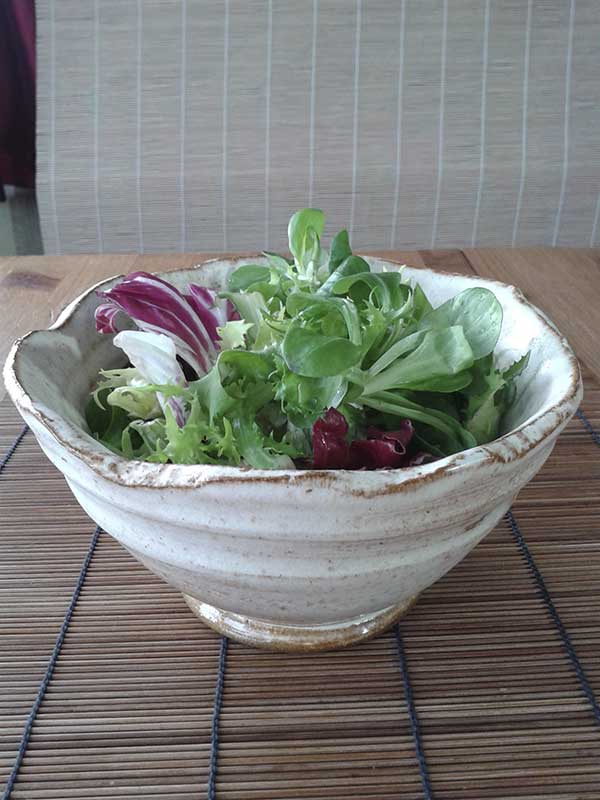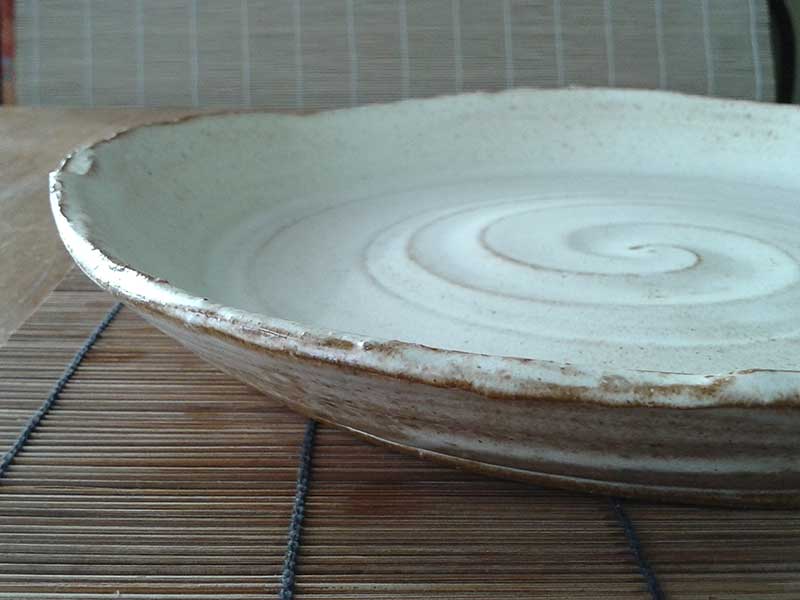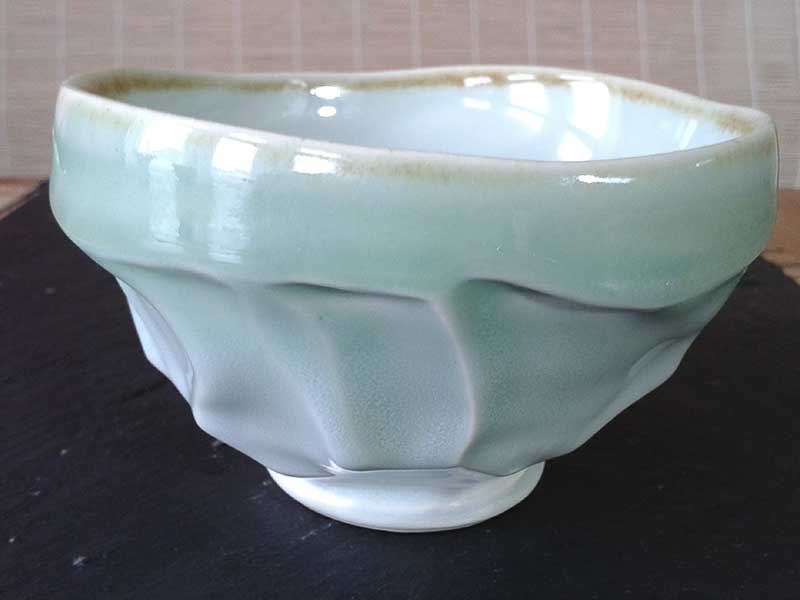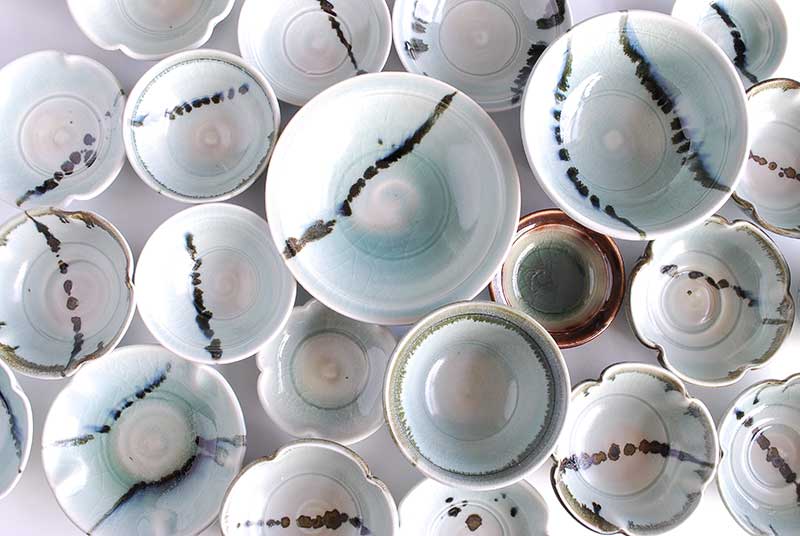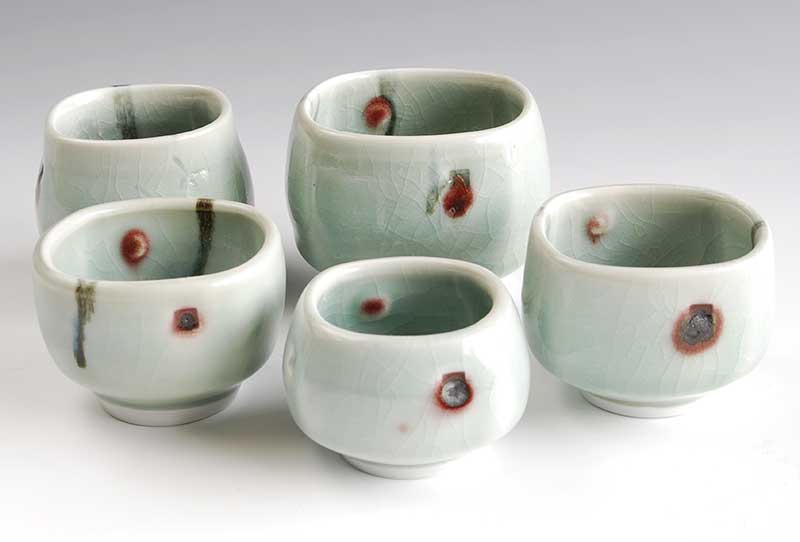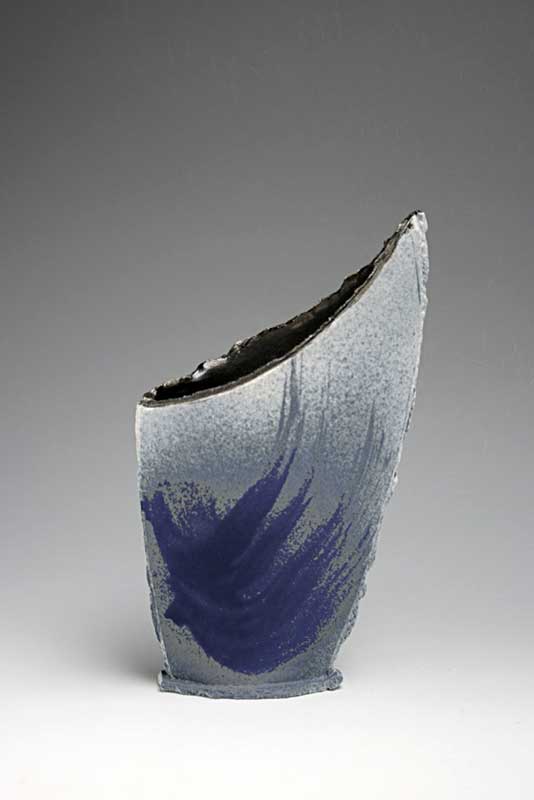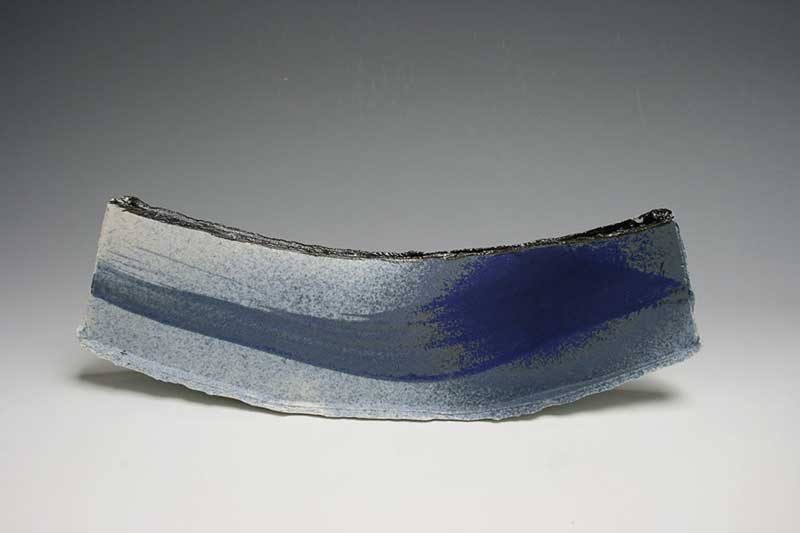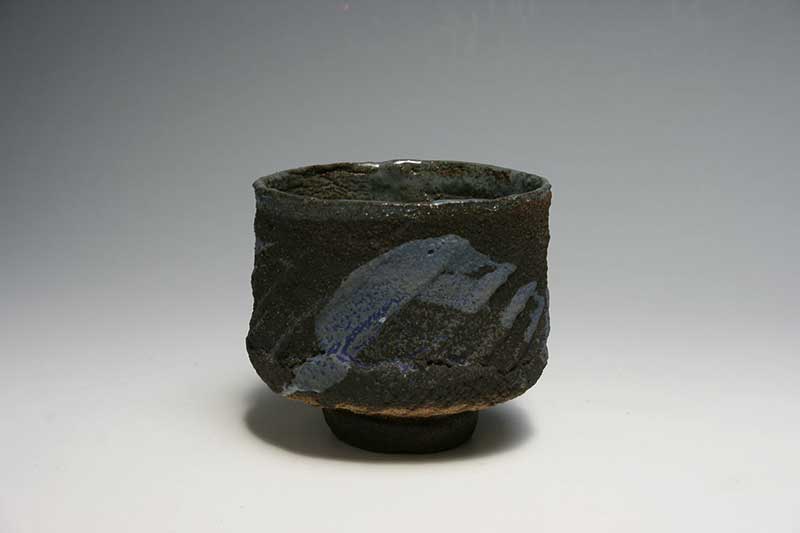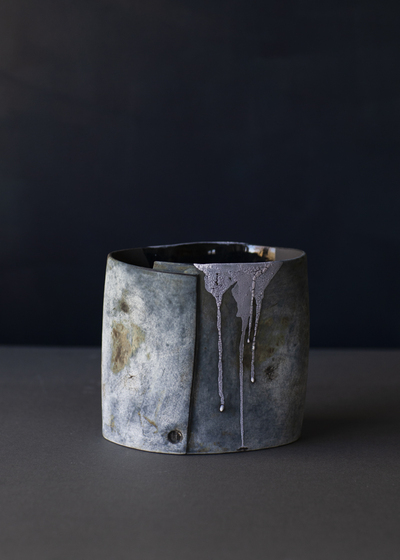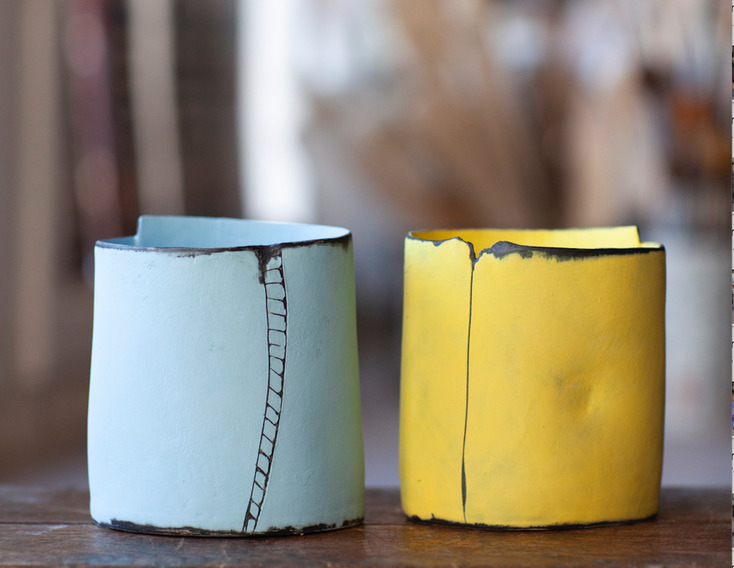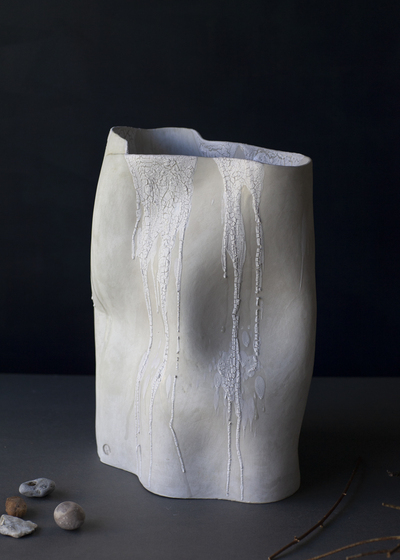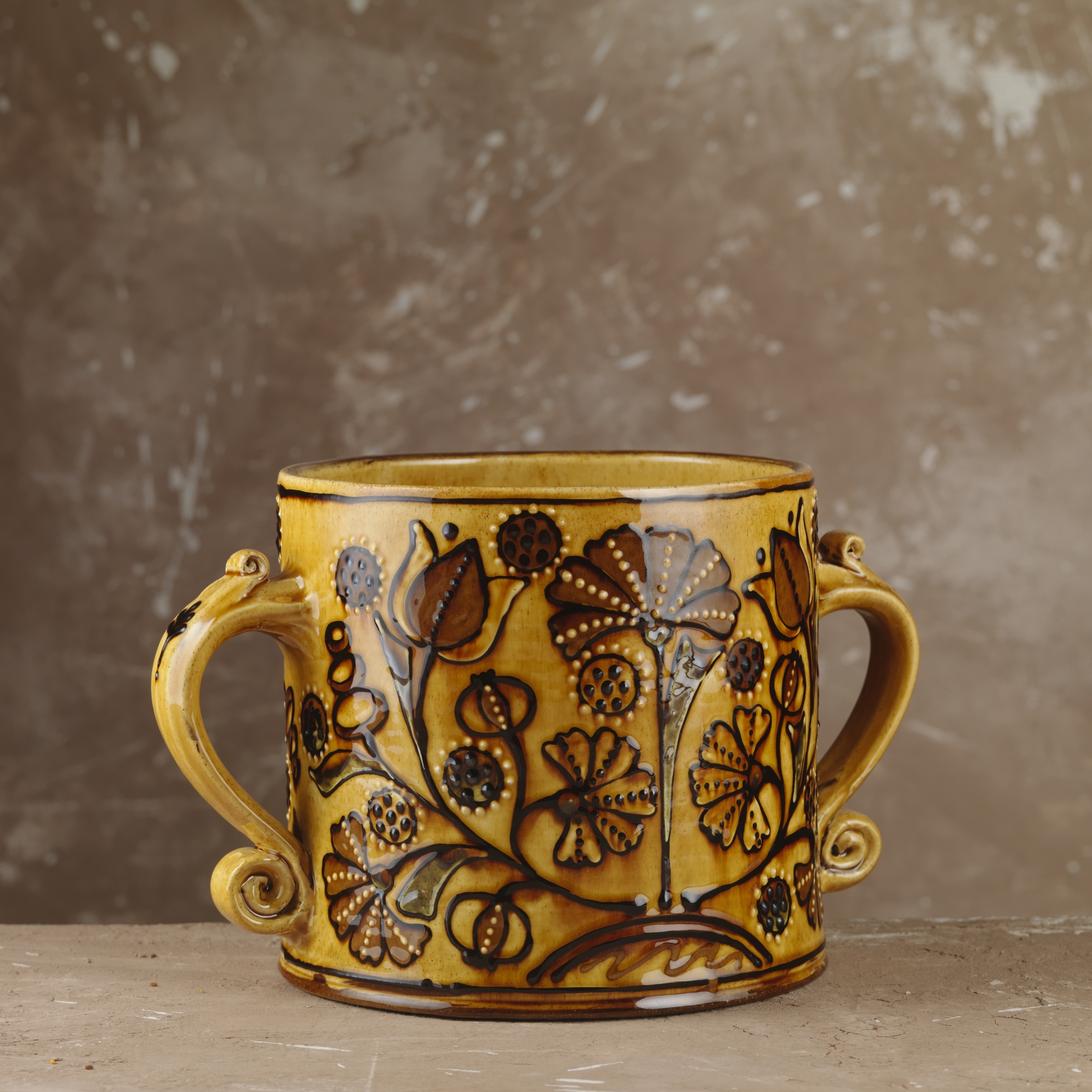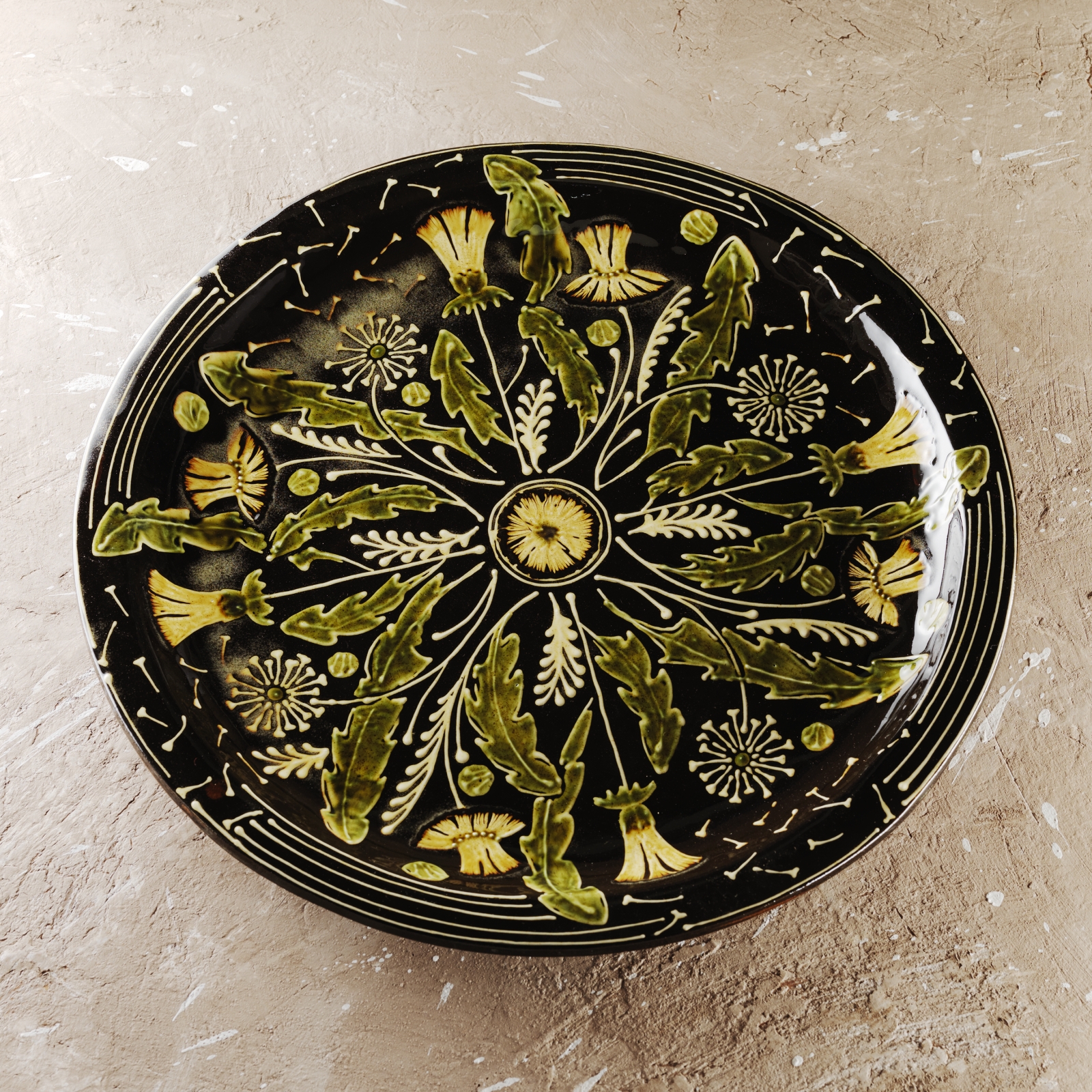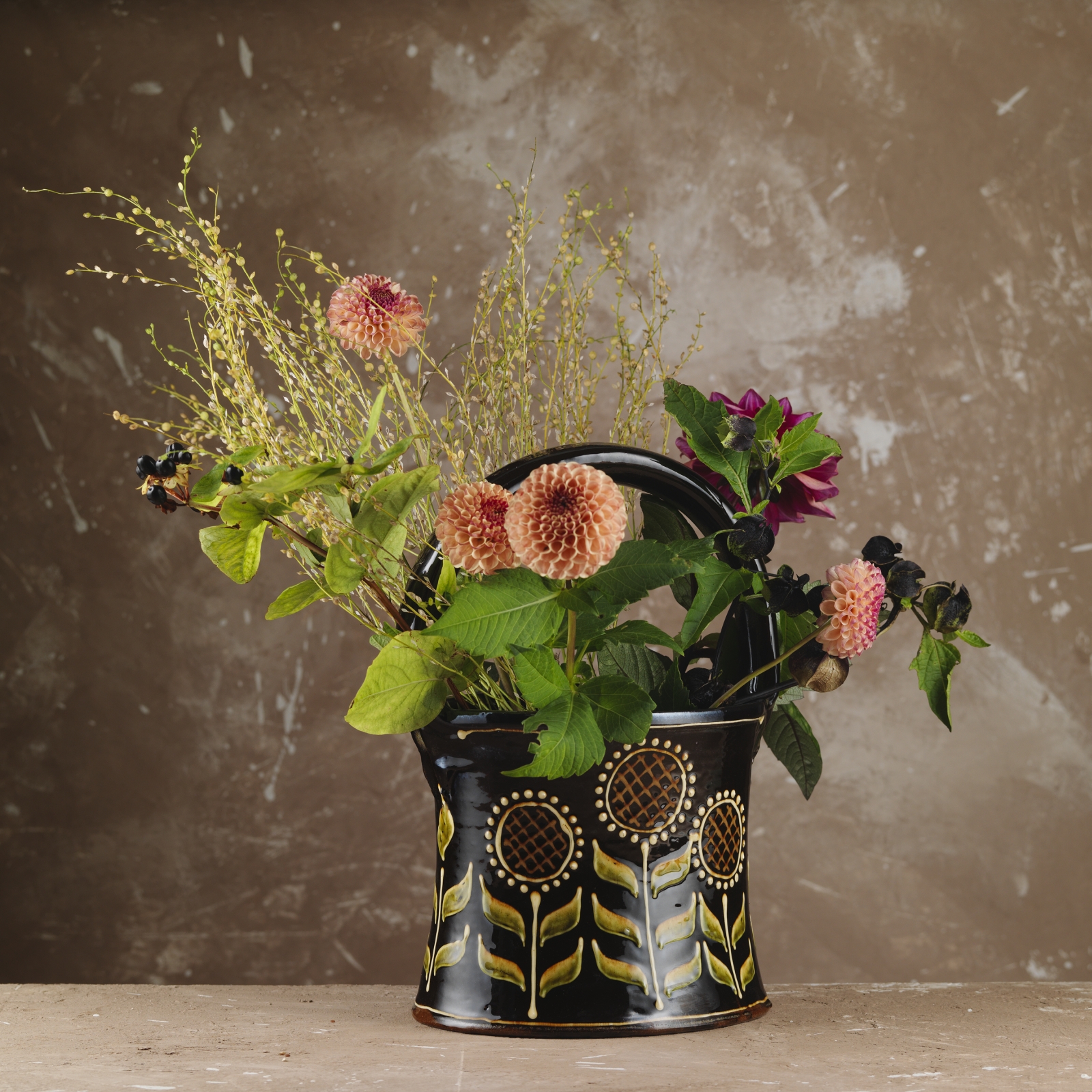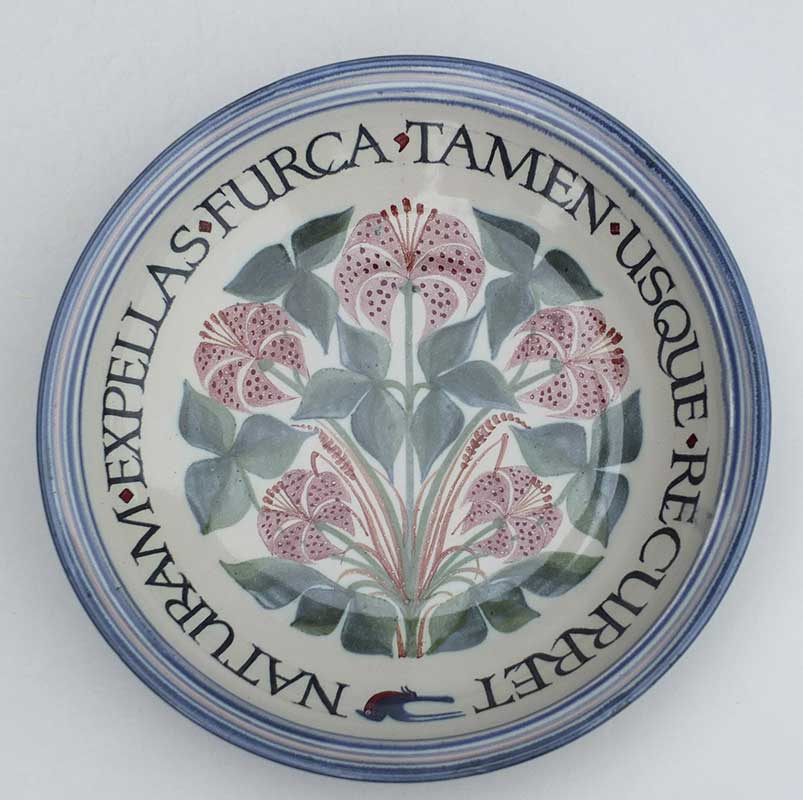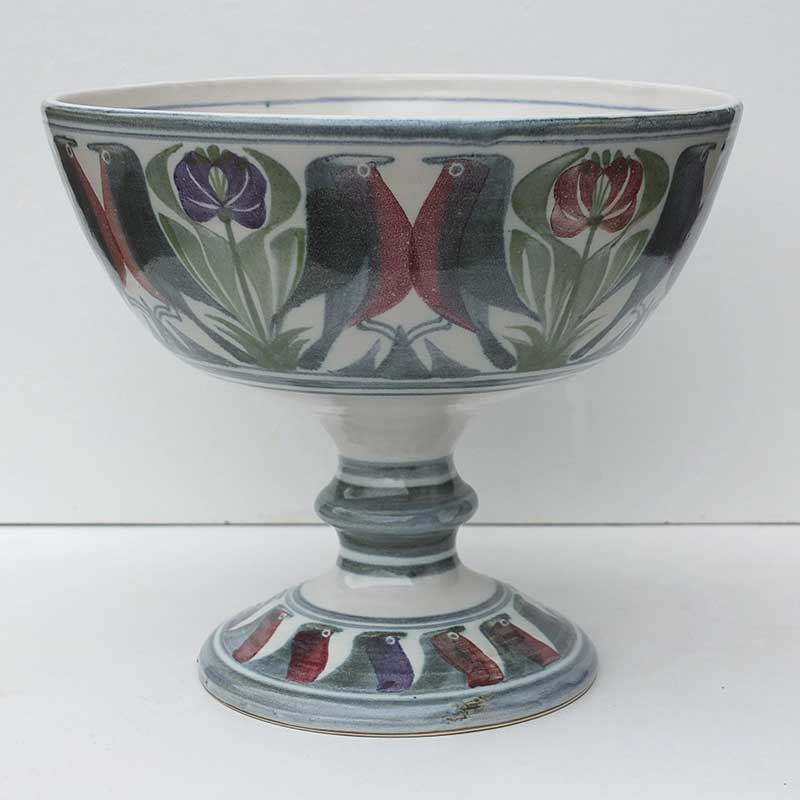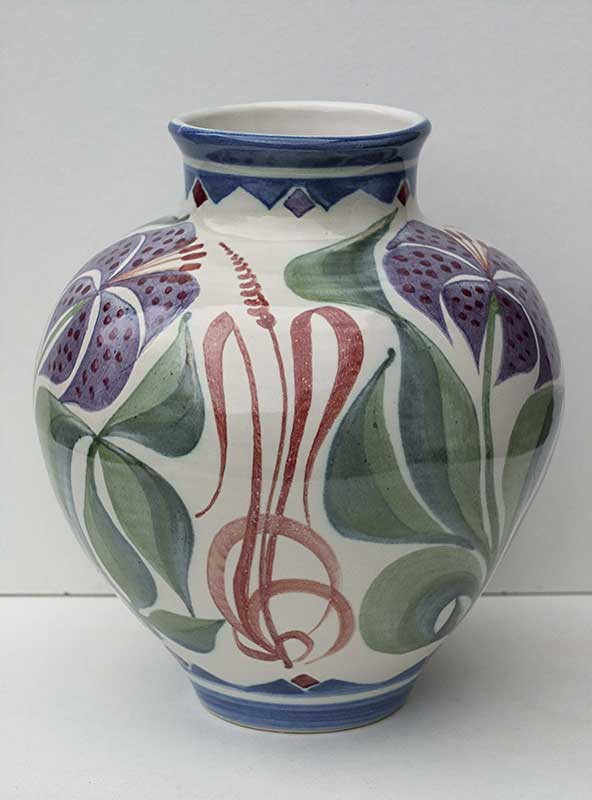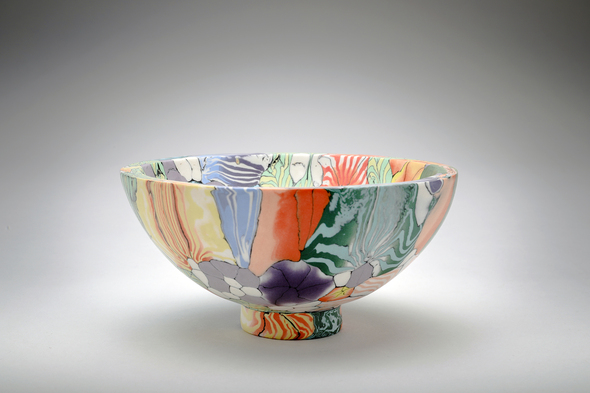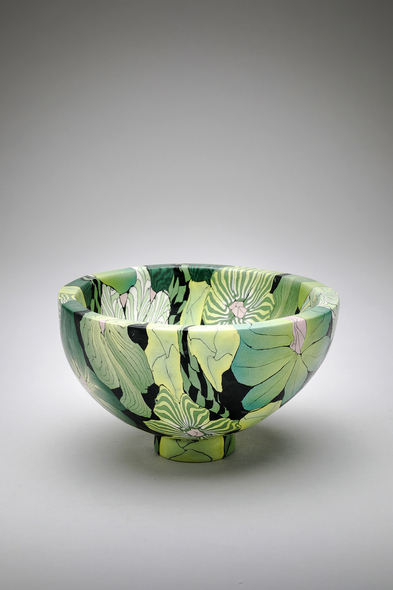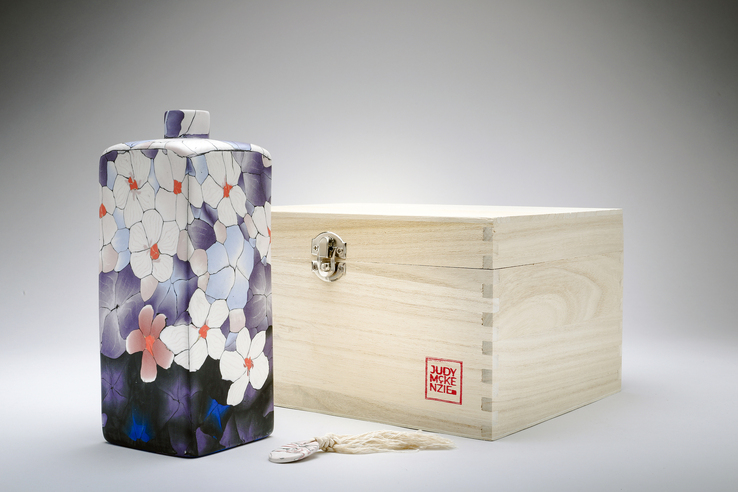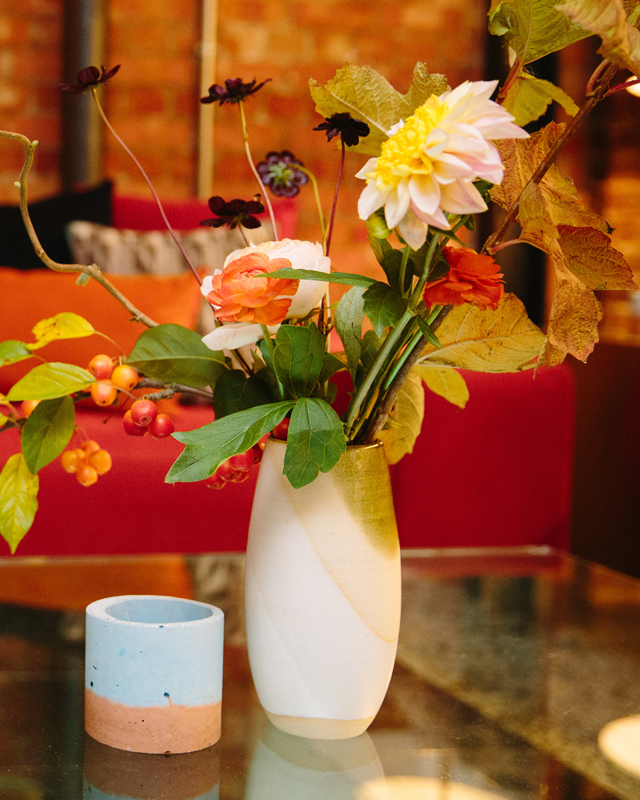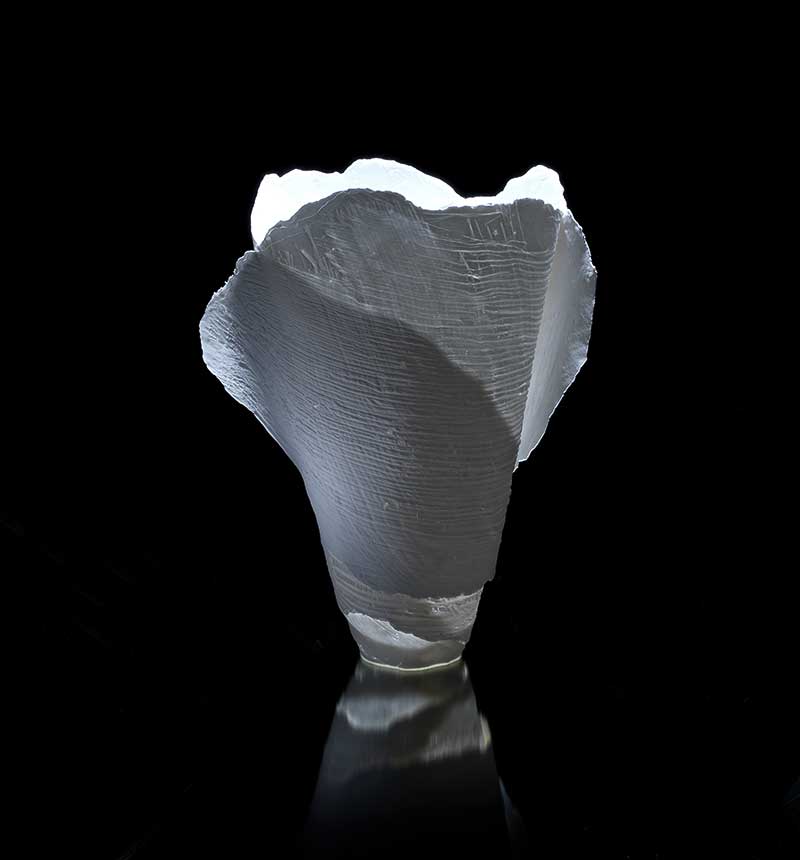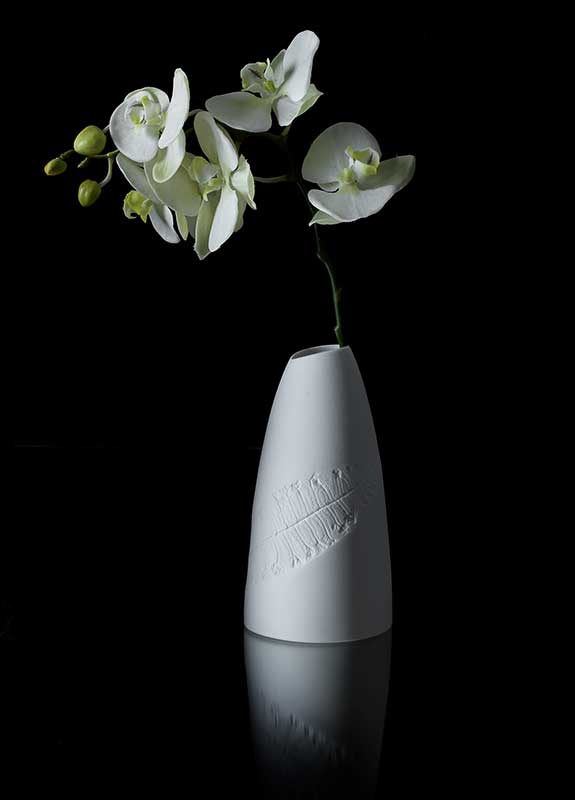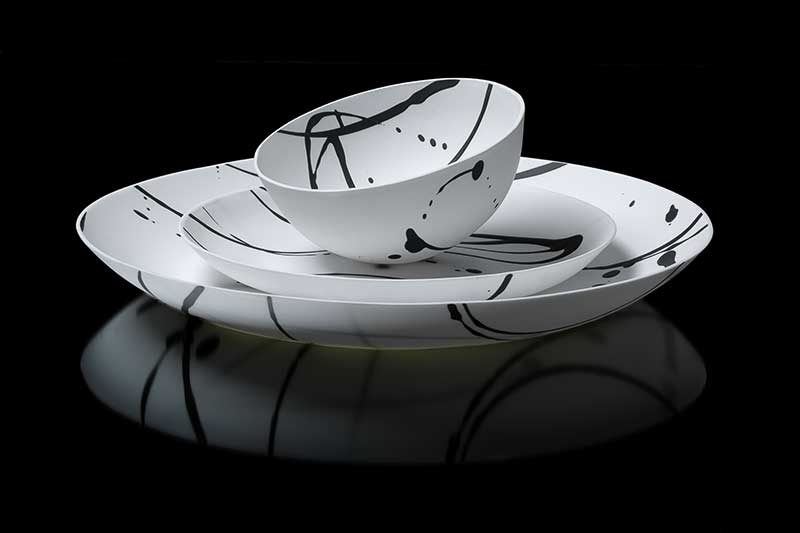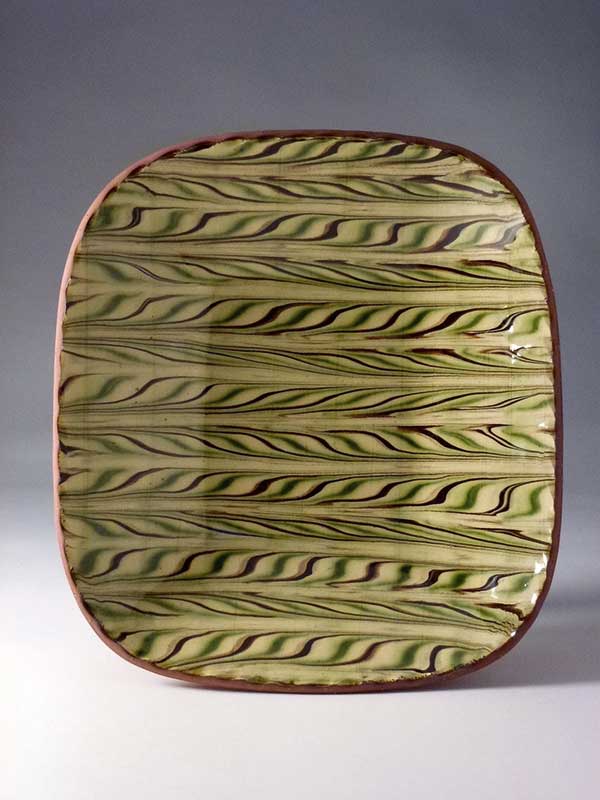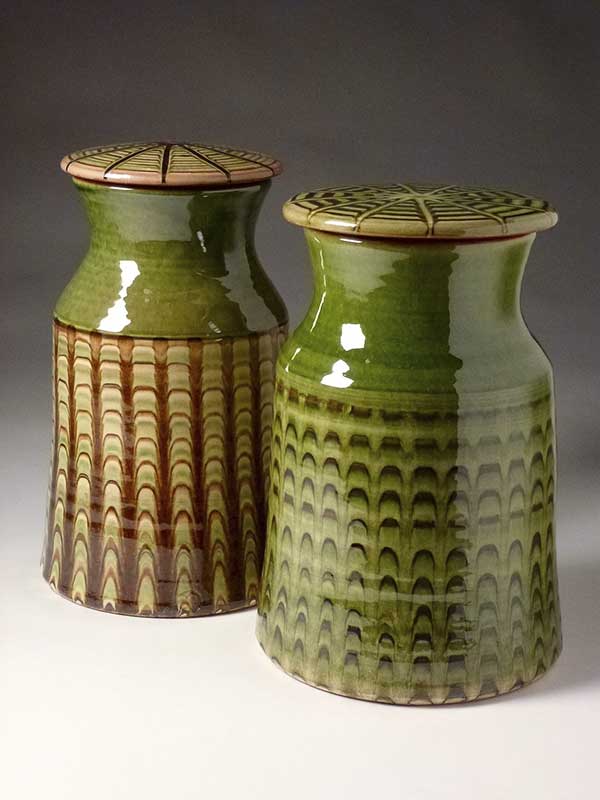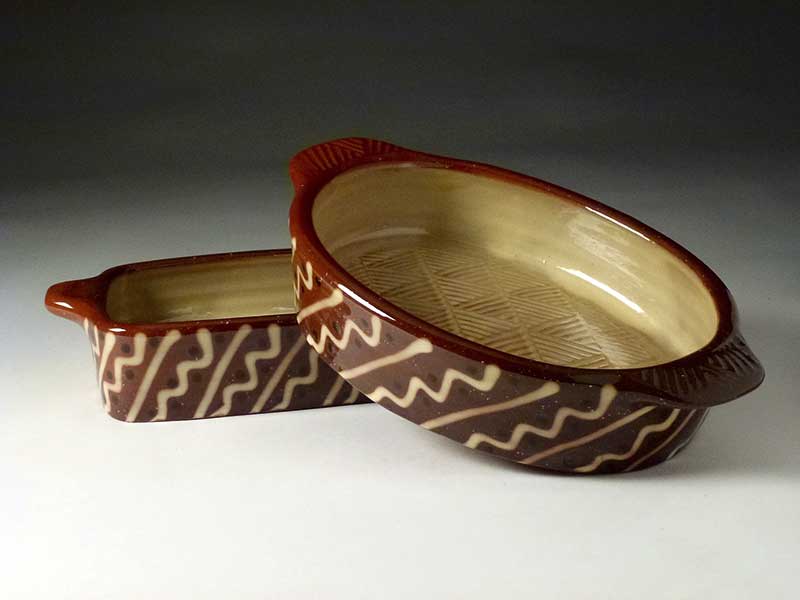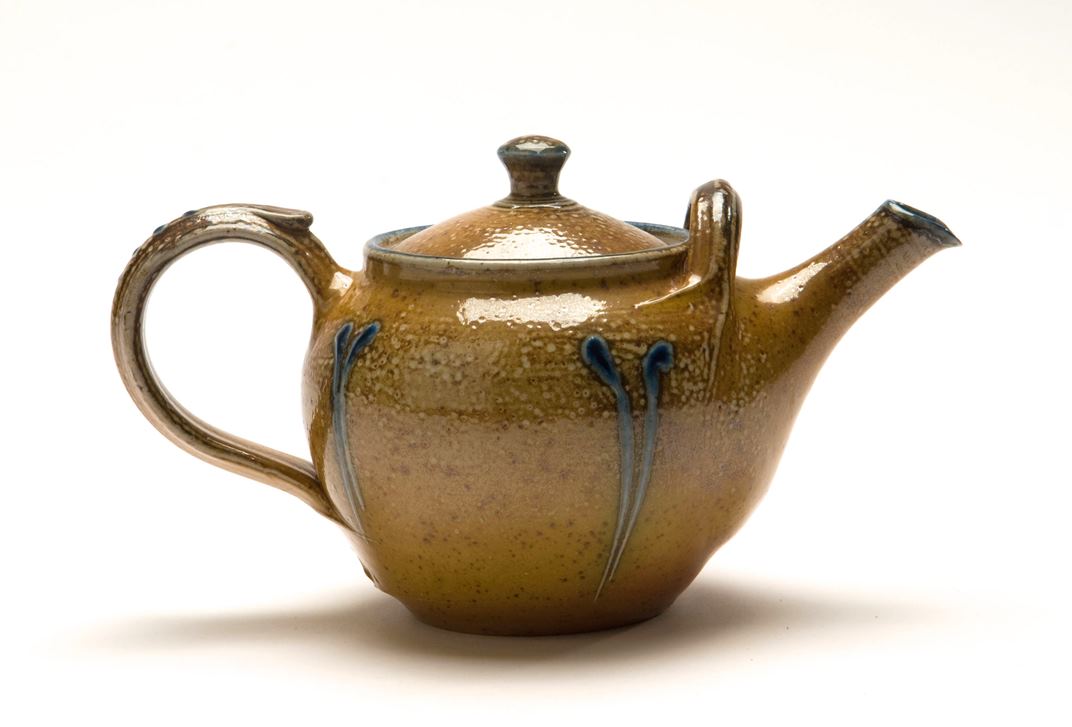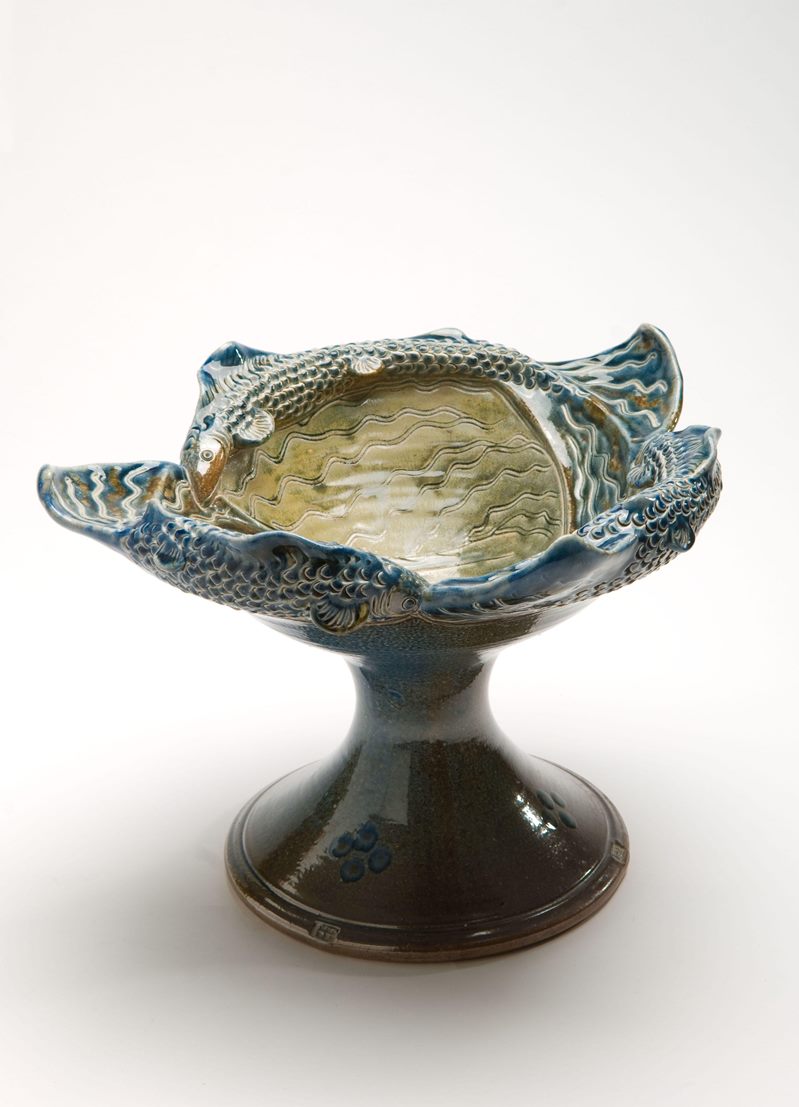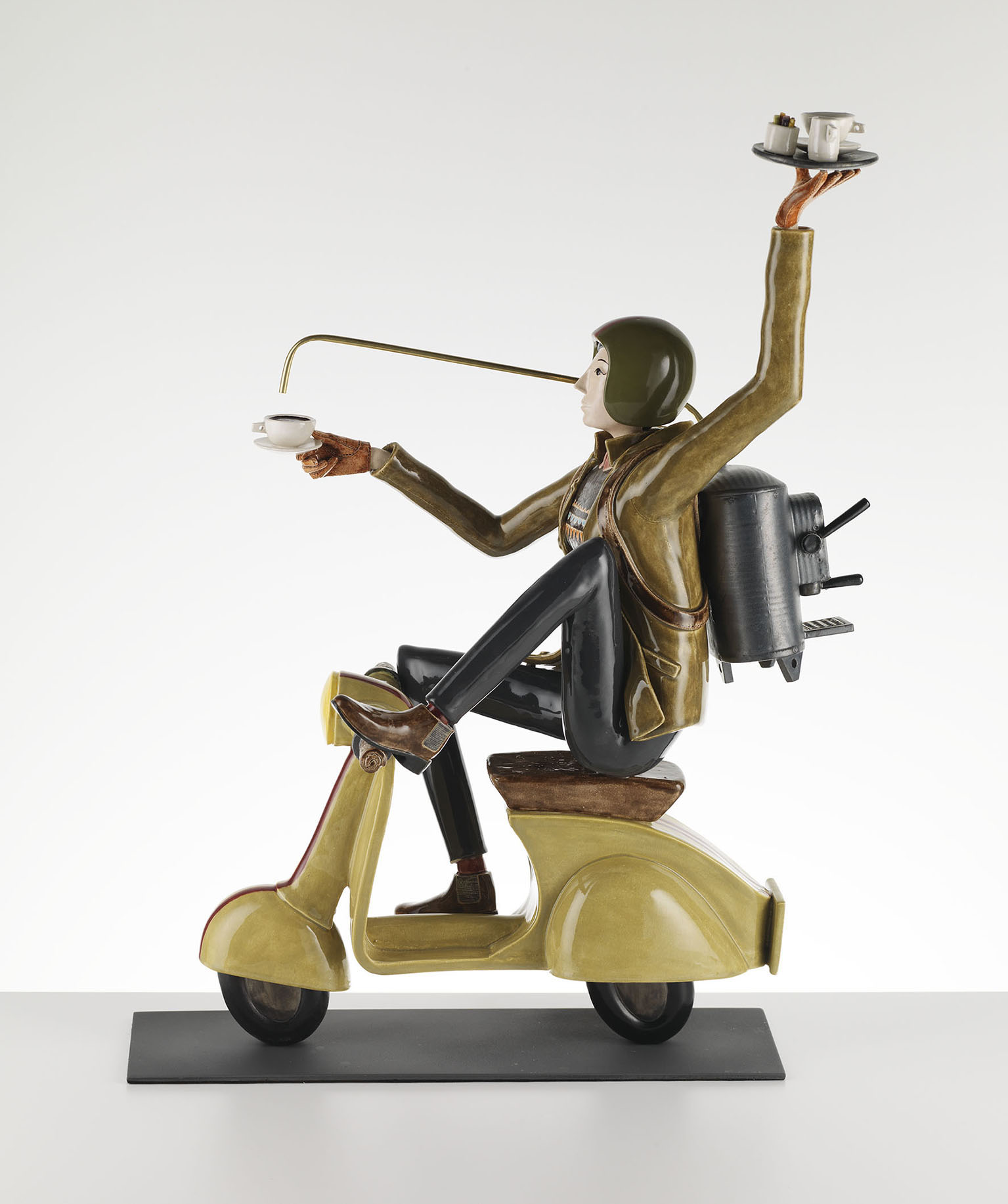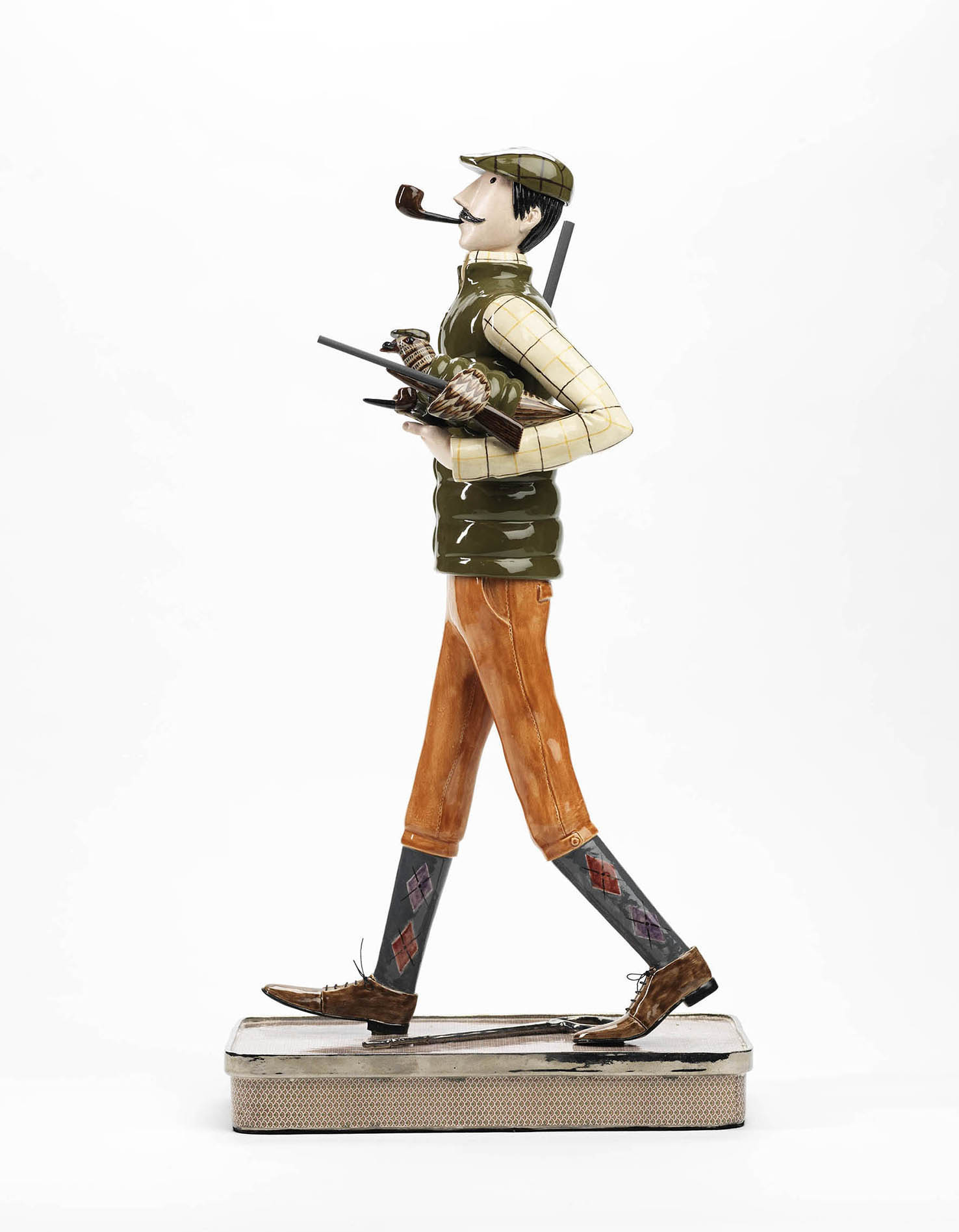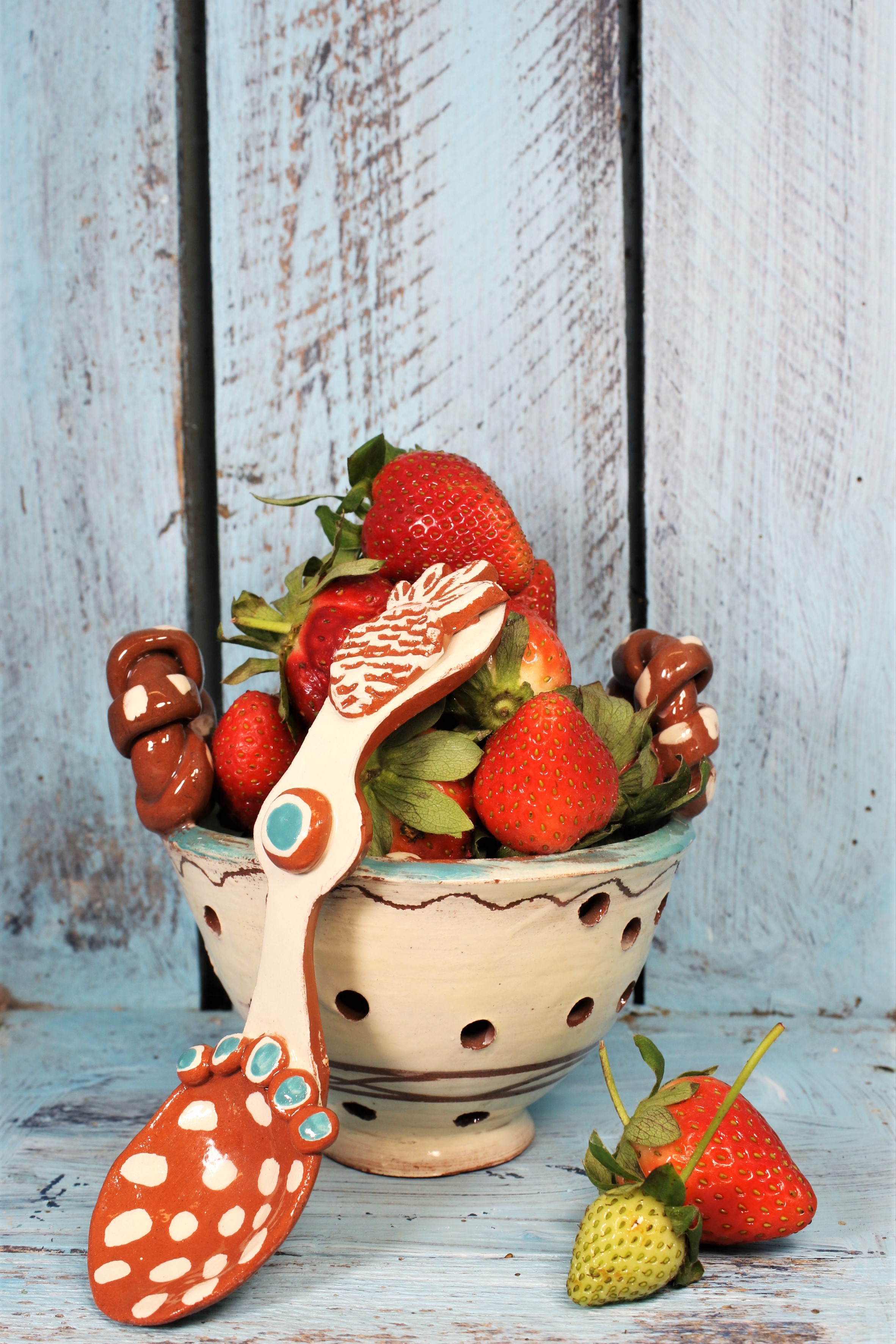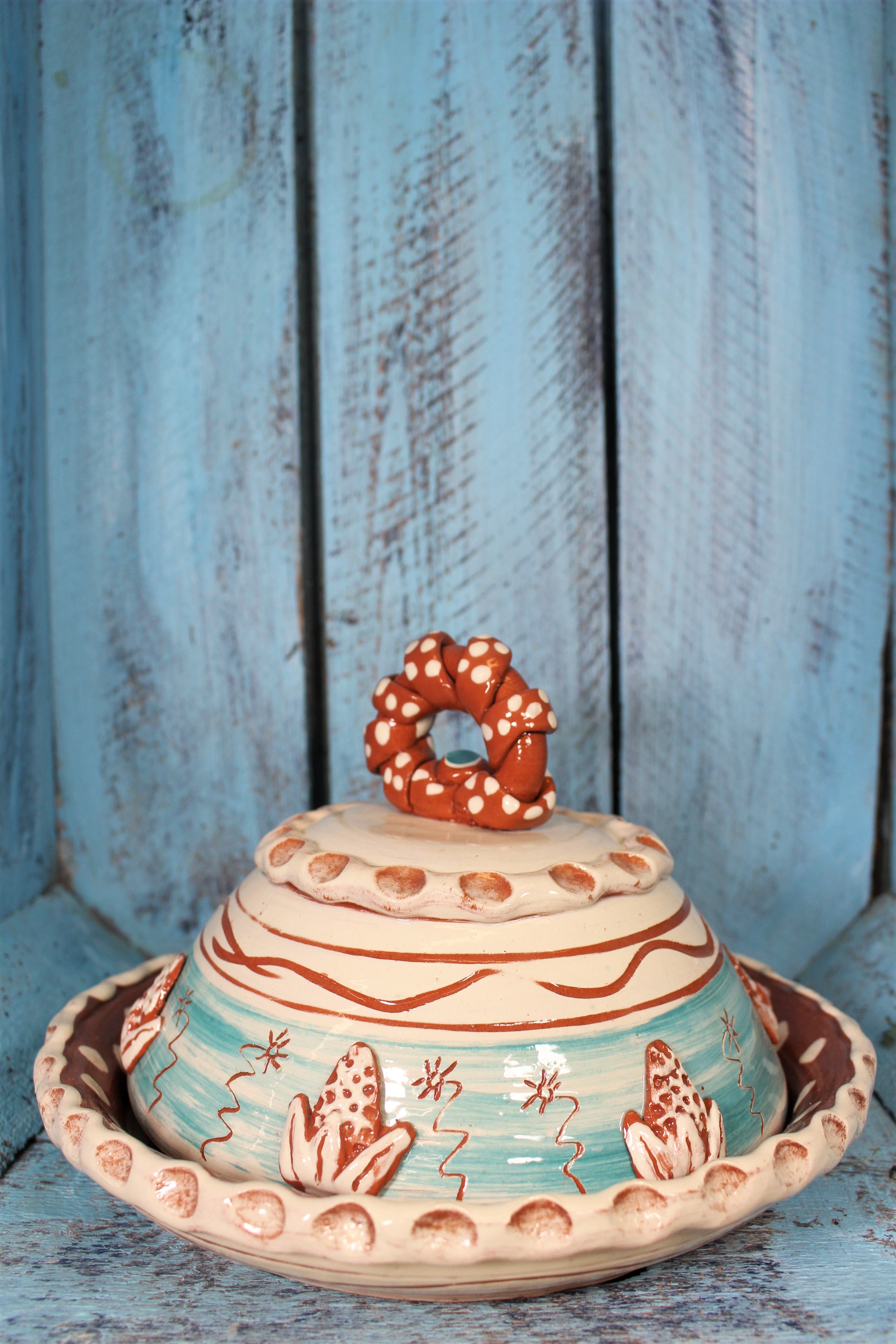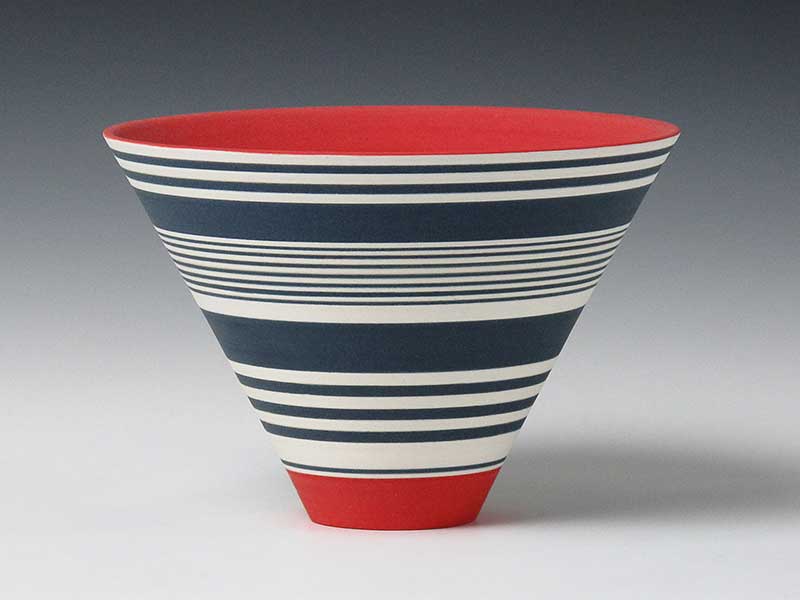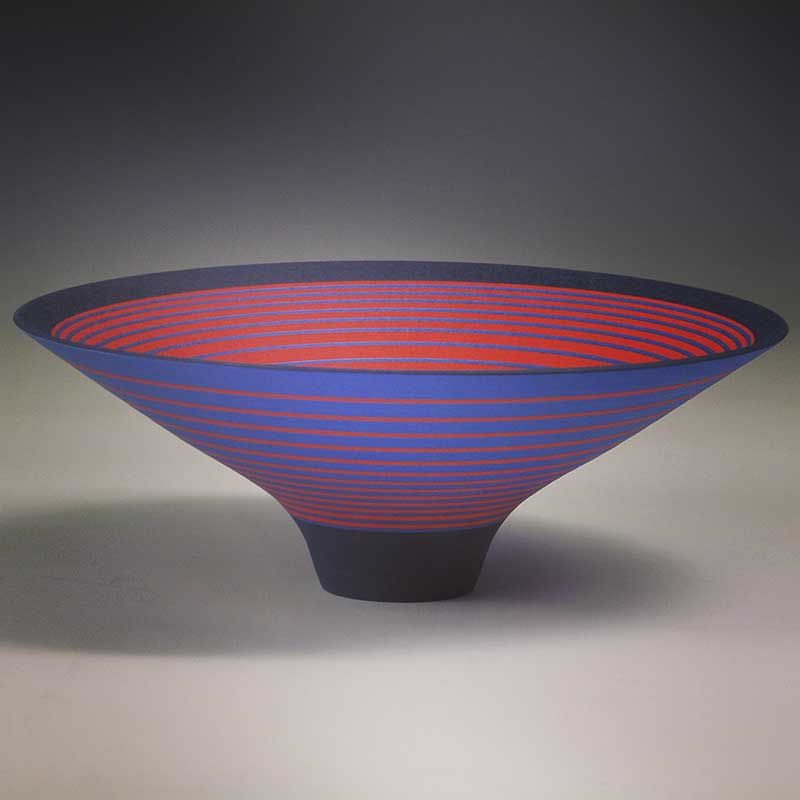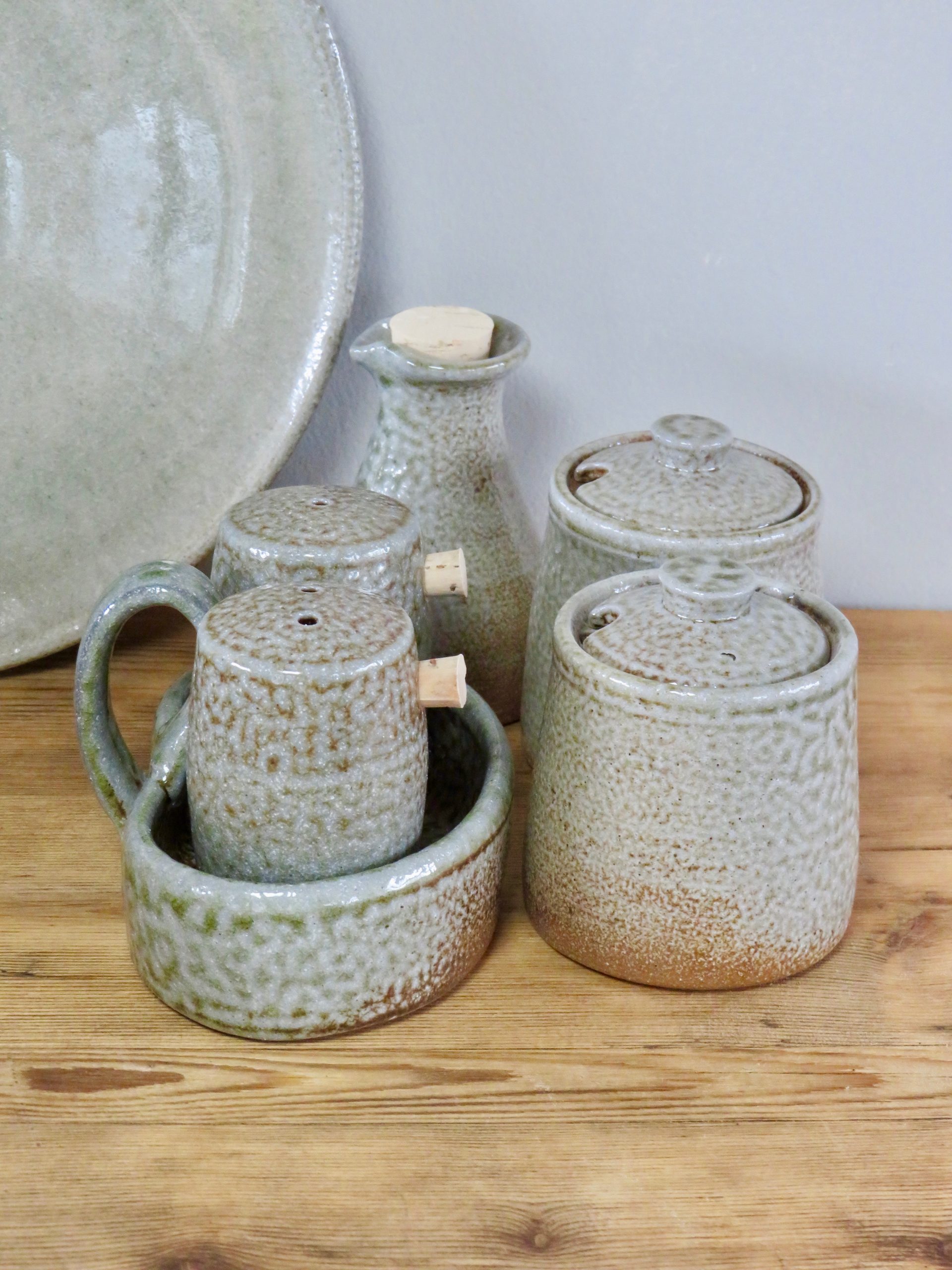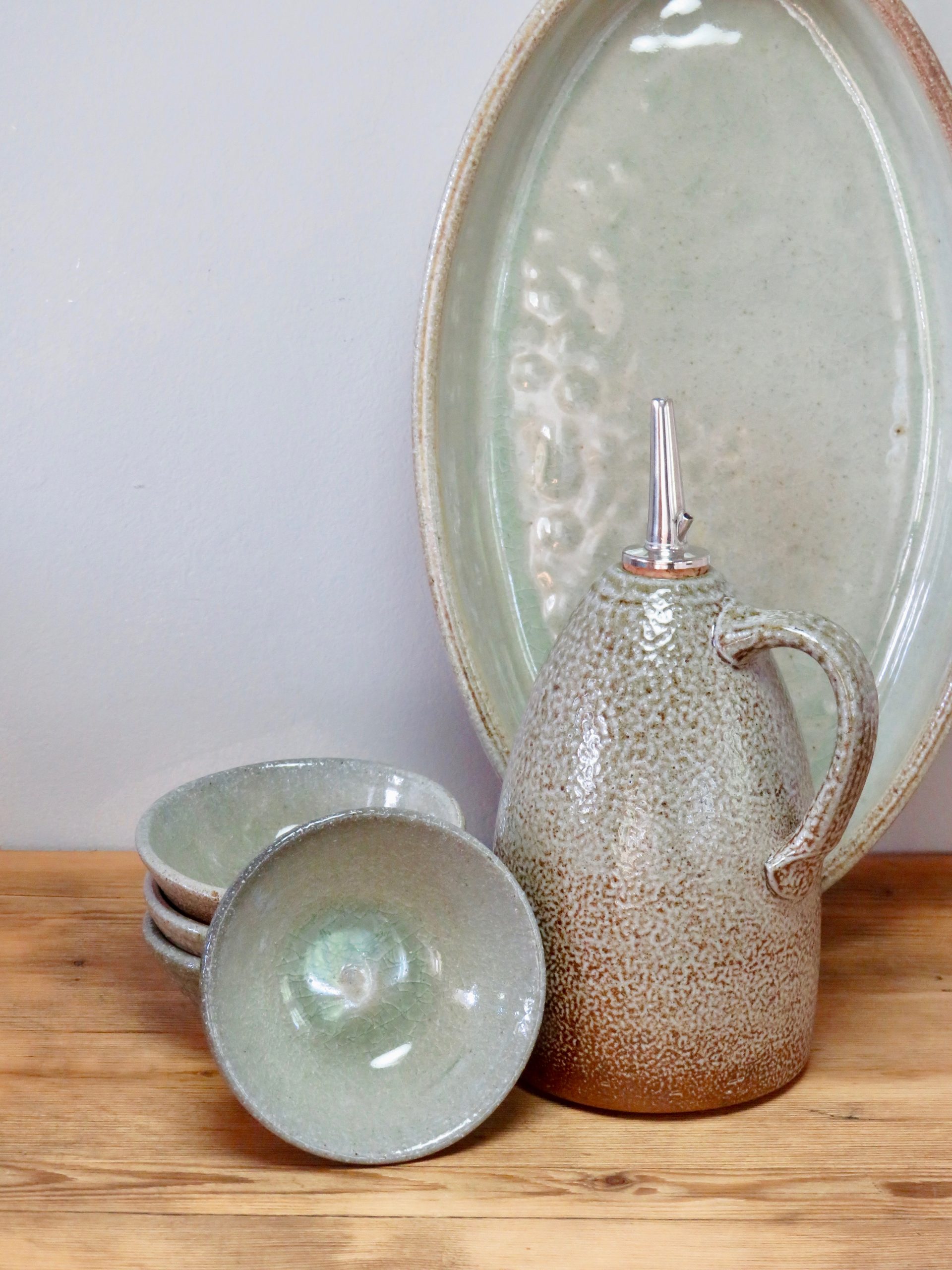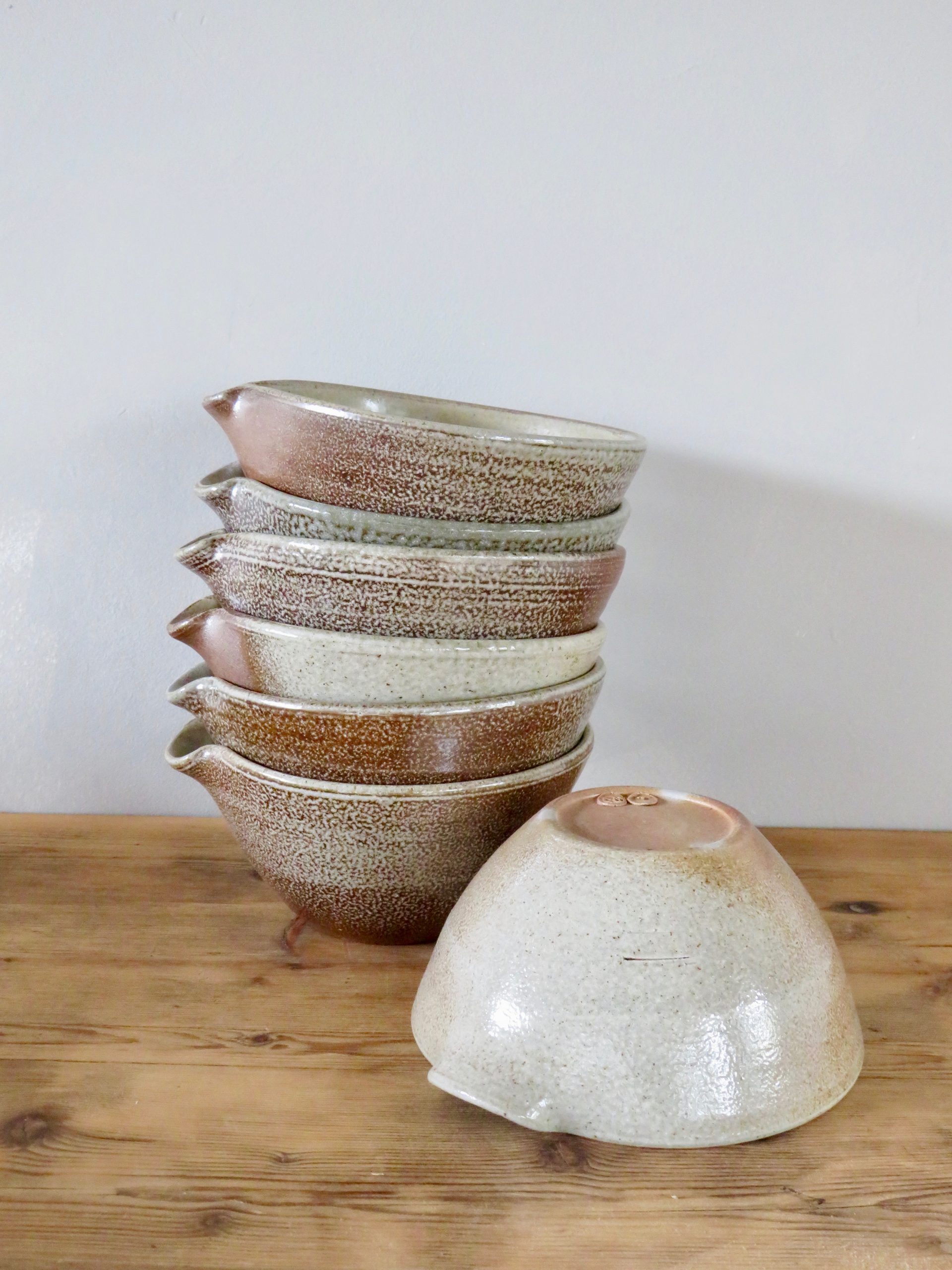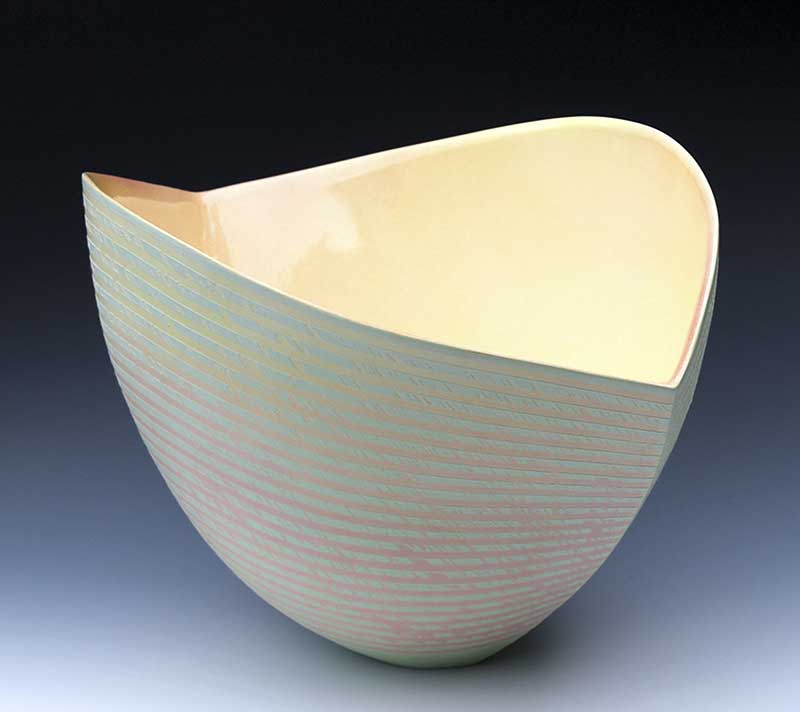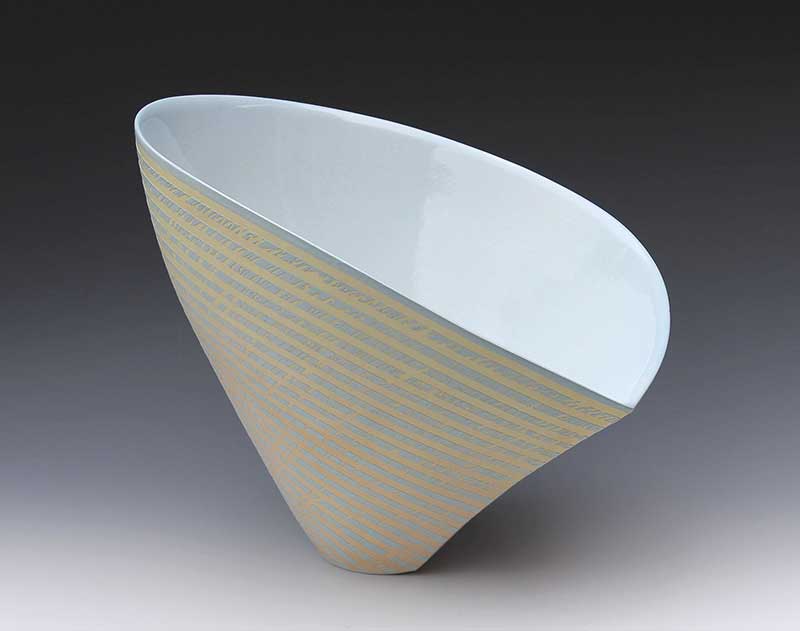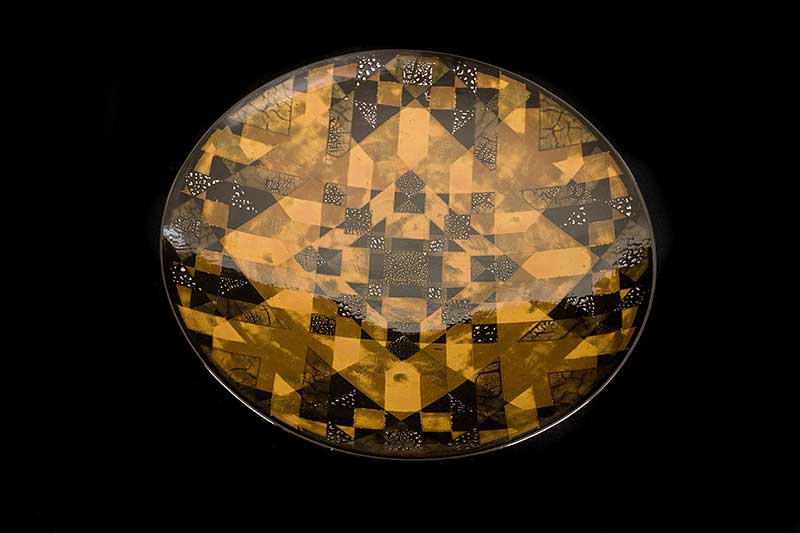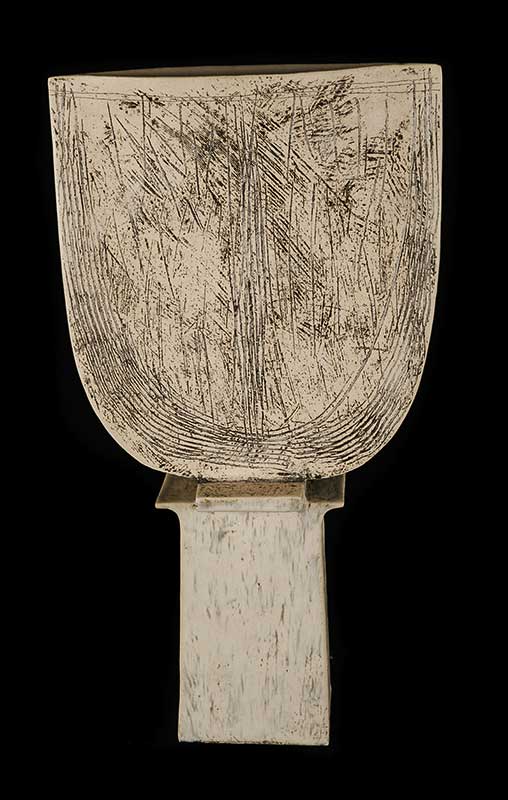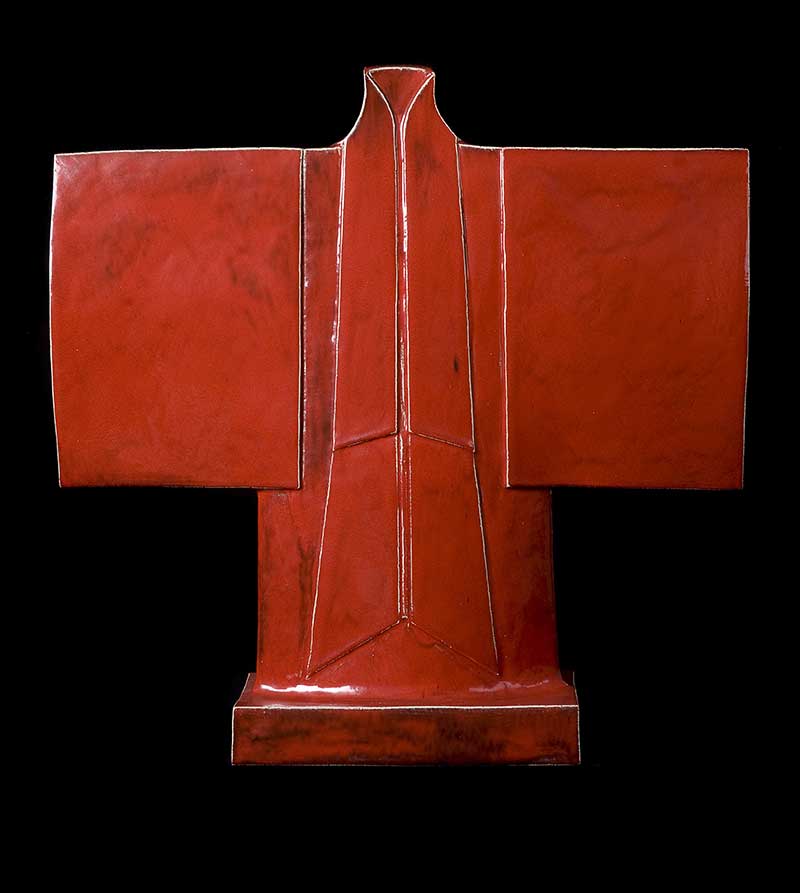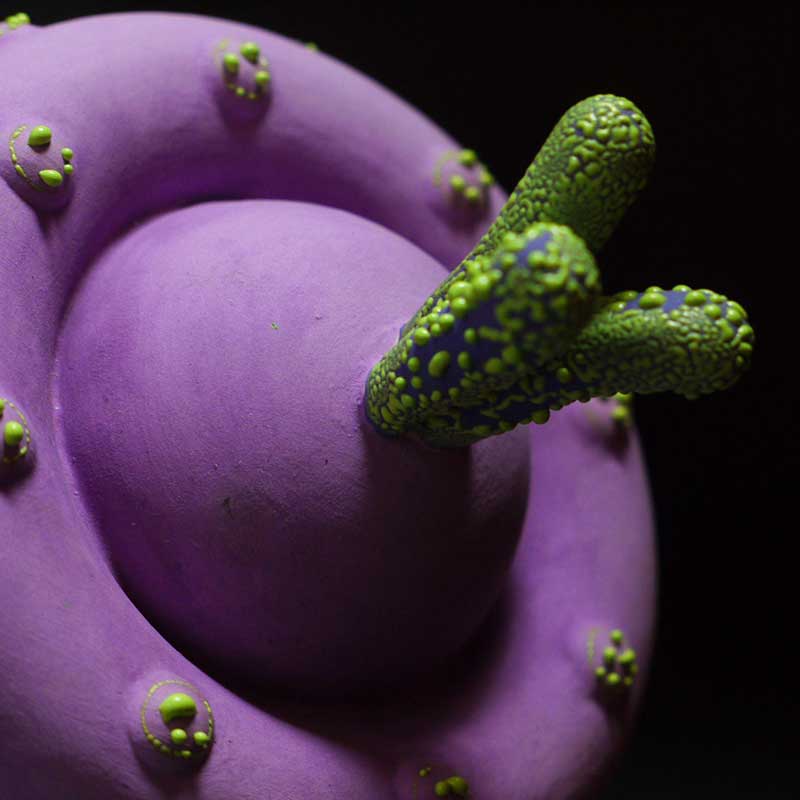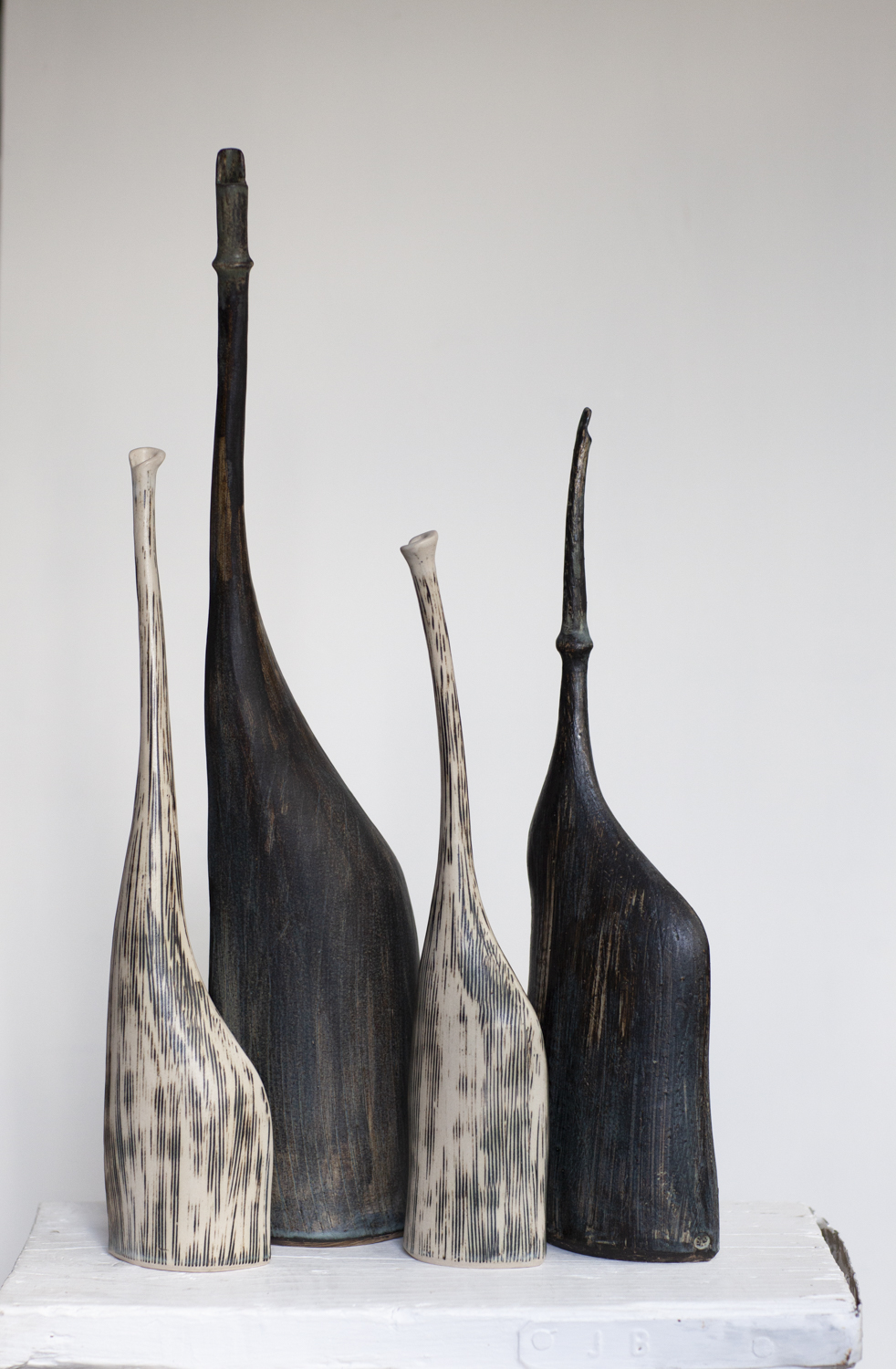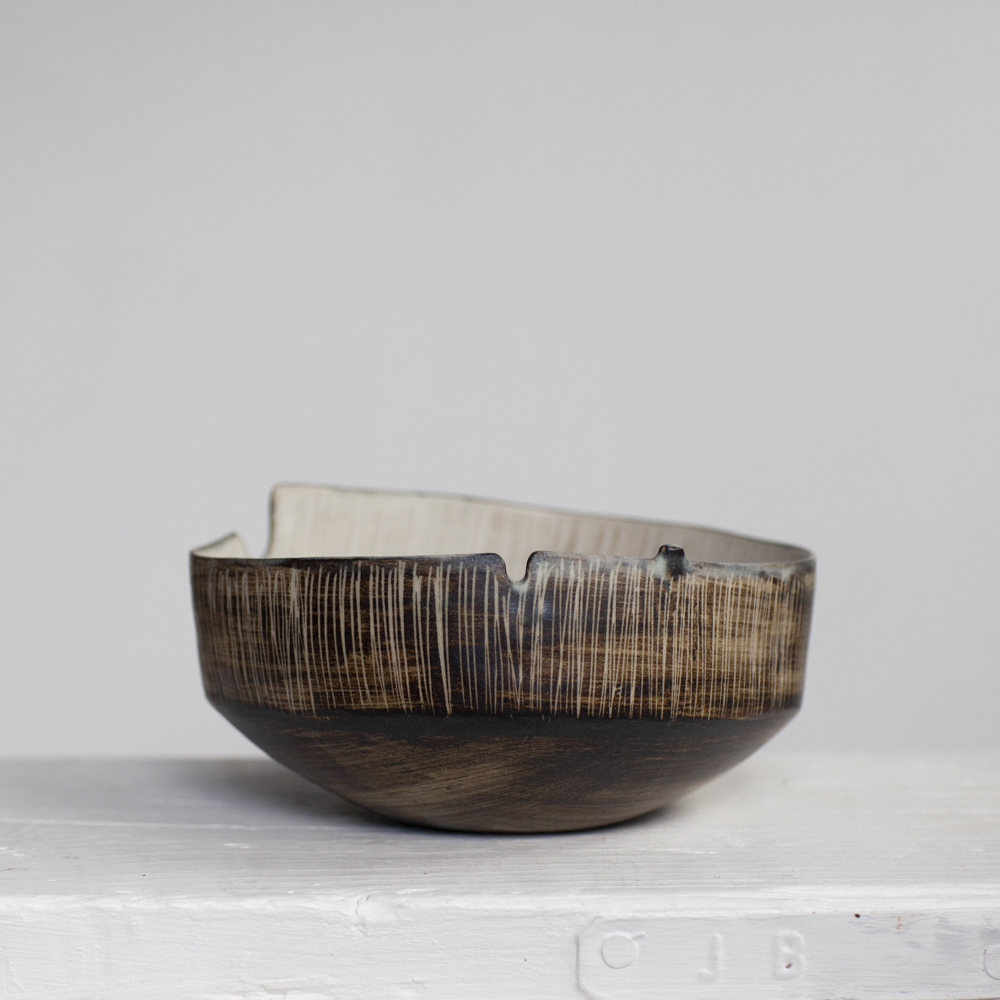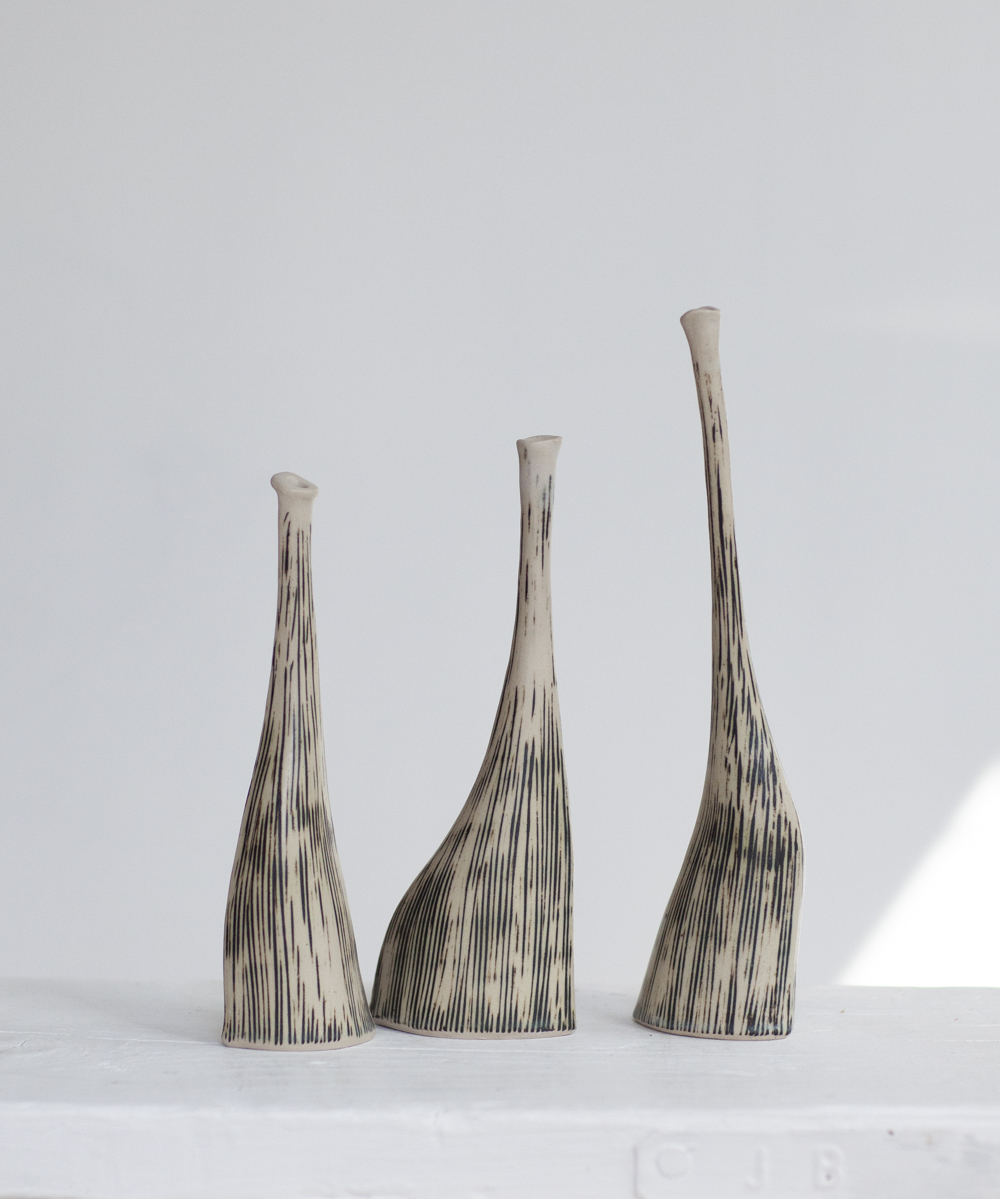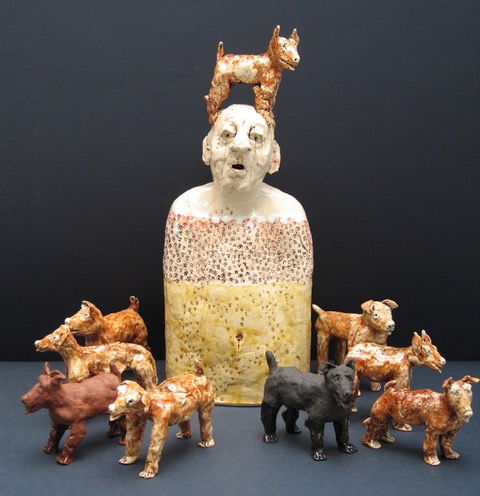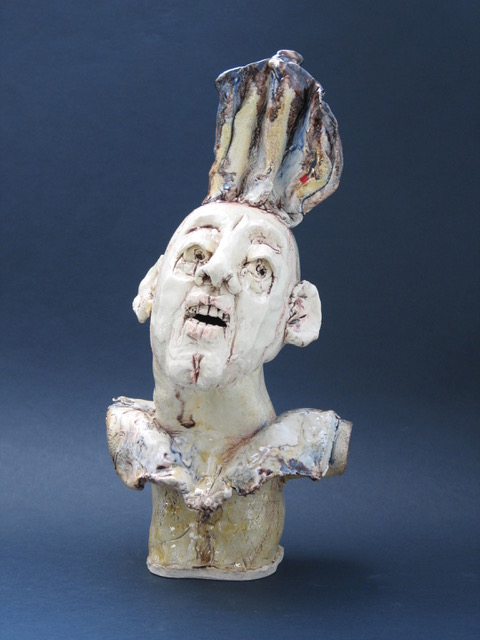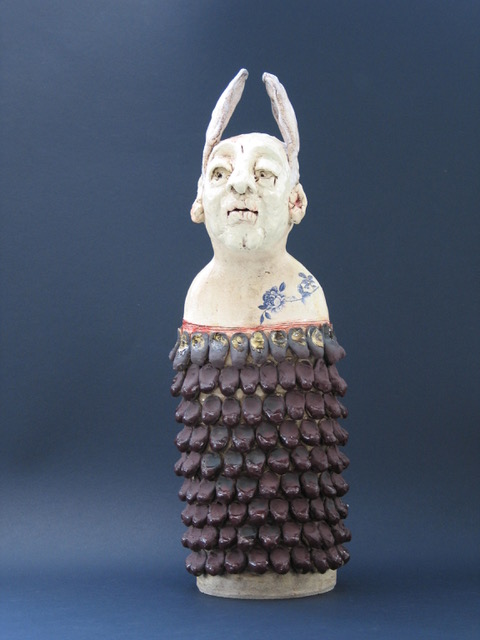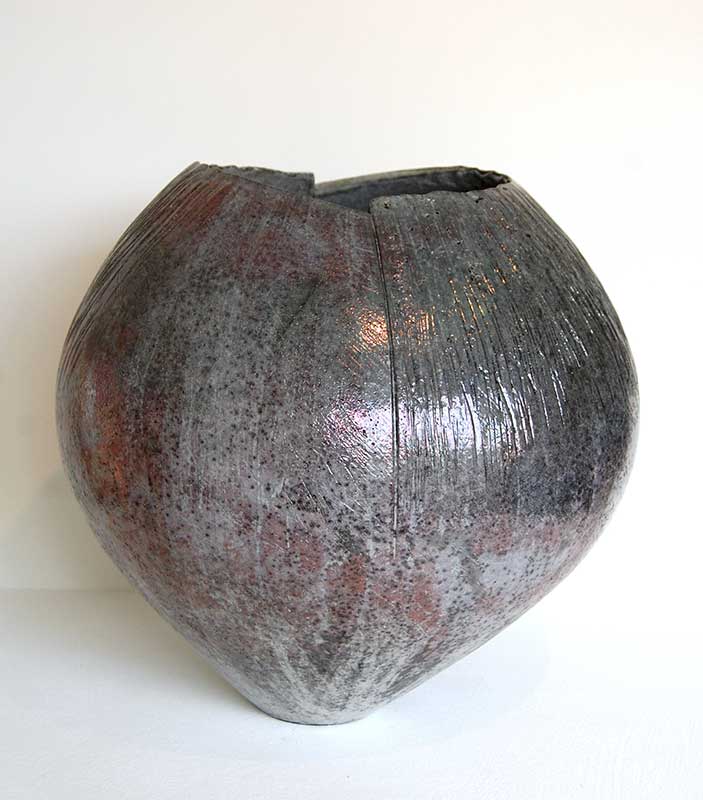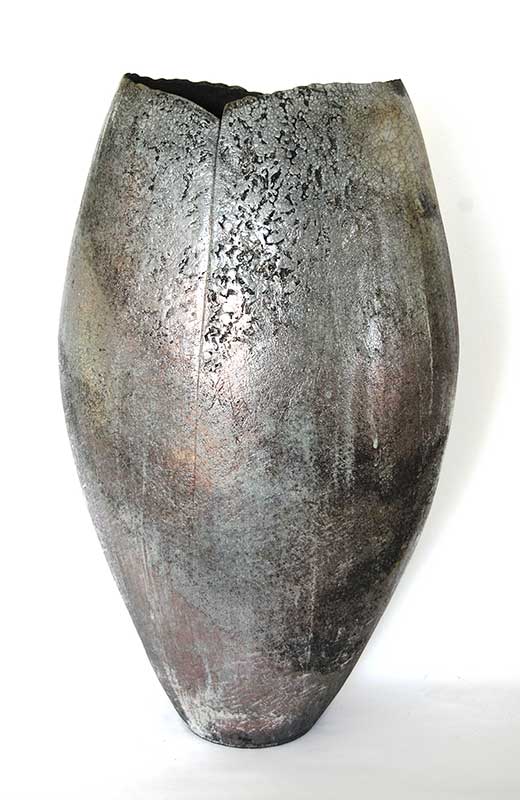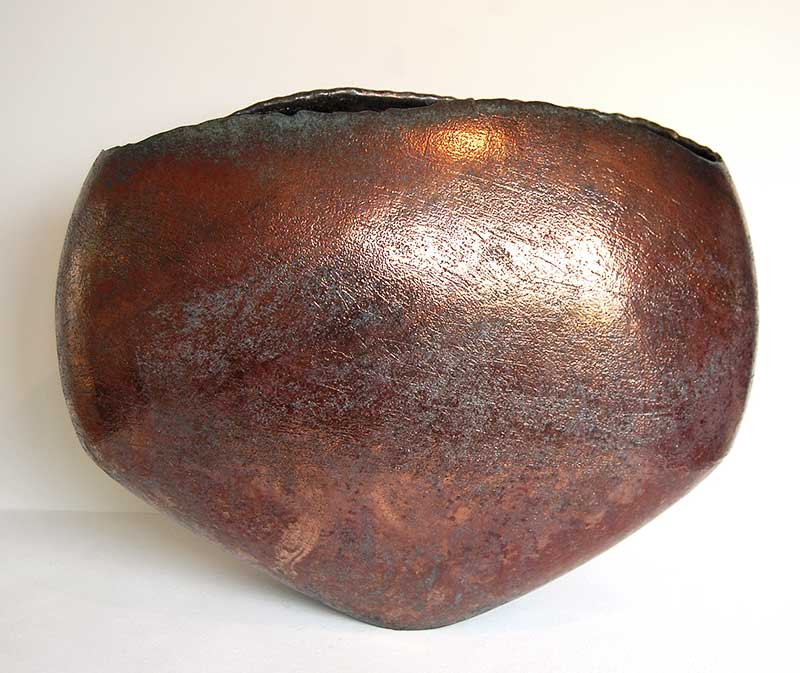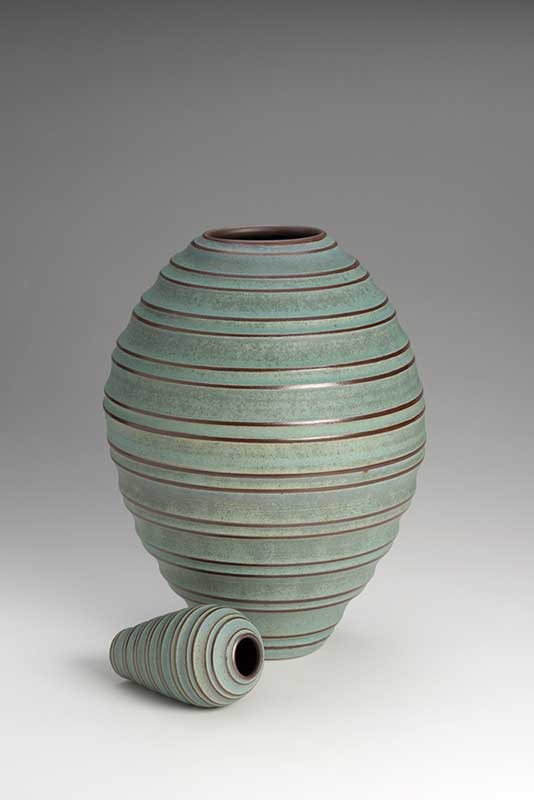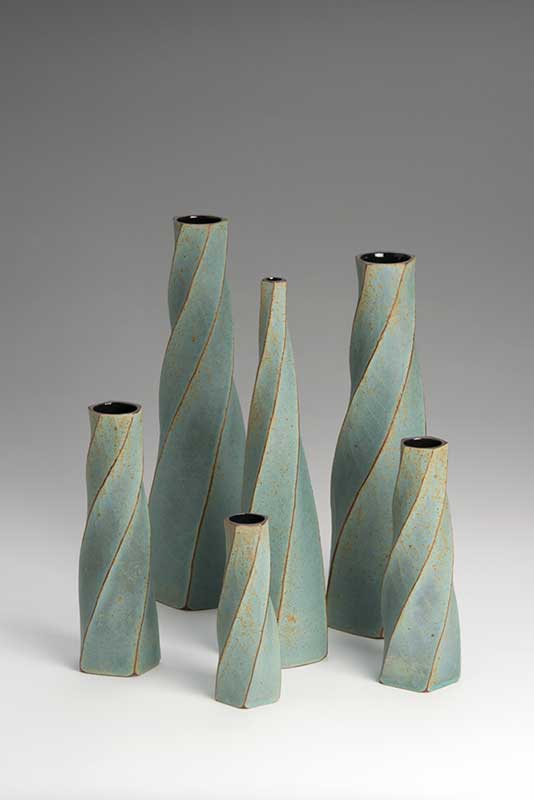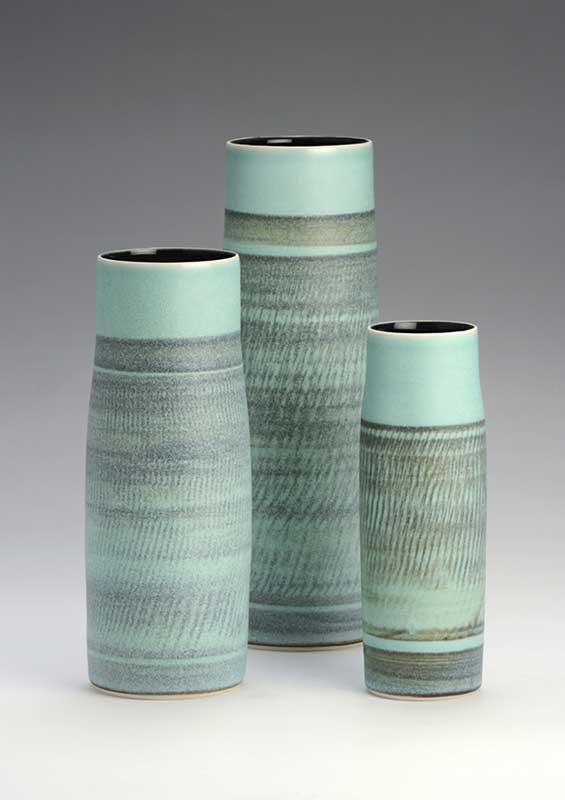CPA Members Profiles – M
For a complete list of Association members, please see our Member Listing web page.
A successful UK based freelance illustrator for more than forty years with clients from Tokyo to Toronto, Derek now directs his entire creative attention to hand built ceramics.
Priscilla Mouritzen’s small-scale works are pinched in porcelain clay and woodfired. Large works are coiled in earthenware clay, decorated with slips and pit fired. To complete the range of production she throws mugs, bowls and jugs which she sells from her studio north of Copenhagen, Denmark.
Juliet Macleod makes wheel-thrown porcelain that imparts an evocative exploration of the Scottish coast. Using a distillation of drawings and photographs made over many years, she creates contemplative pieces which hope to engage the viewer and spark their own memories.
Large figurative bowls and part thrown sculptured figures using mainly majolica tin glazes with brush-on designs.
Having specialised in making one-off slab-built pots during my college years, circumstances steered me in a different direction and I ended up making ceramic jewellery instead, which became my main source of income for many years.
A few years ago, however, a twist of fate led me back to making individual sculptural pieces again. The pots that I now make are a playful take on classic container forms, particularly the bottle. The majority of these shapes have an animated, almost human air about them and many appear to be communicating with each other. They are therefore often bought in pairs or in groups.
I paint with coloured slips directly on to the dry clay surface. This immediacy allows for spontaneity and greater tonal depth. I make a wide range of thrown and Slip-painted earthenware ceramics such as jugs, vases, bowls, platters, plates, cups and mugs.
I make a wide range of sculptural forms, mostly wall-hangings, that use textures and patterns derived from found objects, wrappings and industrial scrap.
Sally MacDonell’s fascination with people leads her to model figures with slabs of clay, forming tubes from which the work evolves.
I completed a degree in ceramics at Harrow University in 2001 where I became intrigued by wood-fired ceramics and kiln building.
My ceramics are an exploration of gesture, form, colour and place. There is a rich tradition in ceramics of painting onto the clay to document the world and to tell stories. My work is a contemporary continuation of this: specific places, memories, objects I use and the music I listen to are all referenced in my work. My vases are originally thrown and then cast. After casting I do manipulate the top edge. The image is wax resist and then oxide washed followed by a fine spray of glaze. Fired to stoneware – 1260 c . my flat ware is hand rolled and fired with the same procedure as the vases.
Made in Cley is a group of craftspeople established in 1984 in Cley next the Sea on the North Norfolk coast.
Inspired by her Grandmother’s Willow Pattern collection, Rhian Malin continues the long historic tradition of hand-painting porcelain with cobalt-blue decoration. Her elegant wheel-thrown porcelain vessels are the chosen surface, created to stretch this tradition into the 21st Century. Jim Malone has been making high fired stoneware pottery since the early seventies and also makes some porcelain. He works alone producing a wide range of individual pottery forms.
My work lies within the tradition of maiolica and celebrates this rich historical medium through many diverse influences ranging from the sophistication of Italian Istoriato dishes through to the simplicity of humble folk wares.
Handmade ceramics including decorative and functional items, tableware, and original works of artistic expression.
John started making pots at evening class in London and was instantly captivated by clay. A year later he began teaching pottery at secondary level, and has since taken a degree in ceramics.
“Being a musician as well as a potter, I bring into my ceramic work the same creative process which lies behind Improvisation in music: the spontaneity and intuitive ‘free-ness’ of the moment of creation.
I make collectable, hand built sculptural vessels in my North London studio. Clay has been my passion since I was 13 and following an earlier career at the BBC, I trained, then launched my ceramics career in 2012.
The essential elements of my work come from my love of pots with a purpose, pots for use in the home. In particular I spend a lot of time looking at and where possible handling old English country pottery and medieval earthenwares. My work is thrown in red earthenware, decorated with coloured slips and finished with rich honey glazes. Most of the decoration is applied to the surface of the pot whilst the slipped surface is still glistening wet. The nature of this means that any patterns and imagery applied must be free and fluid to take full advantage of this state. Firing in both wood and electric kilns allows me to fully exploit my deliberately narrow palette of materials. After a successful career in the design and printing industry, Judy McKenzie changed direction to follow her passion for ceramics. She gained her BA in 3D Craft and Design and went on to study for her MA at the Royal College of Art where she discovered the joys and frustrations of working with coloured clay. Her investigations led her to the fascinating process of Nerikomi.
In making reduction-fired functional-ware, my art finds its roots in the rich traditions of the Far East and the rustic pottery of Britain and Europe. Influenced by the timeless philosophy of wabi-sabi, I seek beauty in imperfection, simplicity, and the passage of time. Each piece is a harmonious blend of cultural influences, a dialogue between Eastern serenity and Western practicality.
Ceramics is my life-long passion and I have been perfecting my craft for over 25 years.
My chosen medium is bone china. The work is a combination of slipcasting and handbuilding with paperslip, with an oxidized firing to 1260. I aim to explore the delicacy and whiteness of bone china and its potential for the transmission of light, a quality which first drew me to it in 1991.
I make a range of functional domestic slipware fired to approximately 1070 degrees centigrade either in an electric or wood fired kiln. My work is mostly thrown or sometimes slab built and aside from some more individual decorative pieces is mostly intended for everyday use as table or ovenware.
I have been making pots for over fifty years and I am still enthusiastic about making pots for everyday use and am constantly inspired to make pots to put food on the table. The longer I make pots the more I see the possibilities in the clay I use and get even more excited when I discover new textures and colours from the same few basic materials that I work with. Saltglaze stoneware is a beautiful medium for my type of work, yielding so much subtlety from the clay with all kinds of variation in surface texture which truly enhance the food that goes on it. I create slightly surreal cartoon-like figures in clay. It is my intention to make simplistic appearing figures with an elegance from a bygone era. Exaggerated movements or proportions and ridiculous juxtapositions are informed by the work of cartoonists and illustrators from the 1950’s and 60’s.
My figurative clay sculptures are intended to be visual puns about the human condition. I like my work to be ambiguous and offer the viewer visual clues and use titles as a way in to the true meaning. Narratives based on personal experiences and cultural observations draw the reader in a with a smile before titles or symbols suggest alternative, sometimes darker interpretations. The characters that I make explore the constant unravelling of events in contemporary culture as well as universal themes such as love, loss and the different roles people play in society. I respond to events in my personal life and in the wider world; snippets of conversation or words and phrases that I hear spark an image in my imagination. Nothing escapes scrutiny, chance comments, potentially insignificant interactions and day-to-day life get refracted through my imagination and is my way of relating to the increasingly bizarre reality which forms the fabric of our daily lives. At the core of each work is a message, for example I might ridicule conspicuous consumption, send-up pretentious behaviour, myself included or react to new technology with a nostalgic enjoyment of the vintage to create contemporary fables in clay. I am a designer-maker specializing in functional ceramics to fit comfortably in the home, particularly the kitchen (my favourite room in our house). Breakfast has been my starting point; berry bowls and spoons, toast racks and knife rests, egg cups with decorative storage boxes and bowls of all shapes and sizes. The whole range is mix and match. When making my own work, my approach is relaxed and playful, and I hope this translates through to the finished pieces. Slips are brushed on, sgraffito designs drawn into the surface and spriggs applied, making the pieces tactile, a deliberate consideration. I restrict my pallet to blue and white slip on terracotta clay; it links everything together and has a country cottage appeal. All making happens at the wet clay stage. After a biscuit firing I don’t add anything else to the surface except for a simple lead-free glaze. Growing up in Yorkshire and Nottinghamshire landscapes, the division of space through colour has always fascinated me. Through farming vast spaces are divided into shapes, each one uniquely defined by its colour, texture, line and form. These colourful shapes lead the spectator’s eye around the landscape in a particular way. The colours in my work similarly determine the way the eye moves around the form.
My work is a contemporary look a country pottery. I focus on line, surface, and balance.
I want my pots to convey an honesty about why and how they were made and for me the salt
glazing process is a perfect application to achieve this. The pots, heavily salt glazed become
incredibly tactile as well as showing my hand at work, as the maker, not hiding but instead
highlighting the subtle marks, fingerprints from handling, and attachments in a tasteful way.
This process allows me to make pots with subtle and clean lines that are very approachable and
usable while giving the work that extra durability that comes from the firing process. My ceramics have always been about Time.
Inspired by exploring coastal geology and marine fossils growing up in North Yorkshire, followed by travels across 3 continents, from California's earthquake riven landscape, to Cornwall's high cliffs, stacks and coves, and back to the Jurassic coastline of North East England where I now live, my lifelong journey has been to investigate how I could create equivalents in art which demonstrate the power of natural forces I have witnessed, coupled with the desire to create beautiful, refined vessels.
My ceramic practice falls into three broad and often interchangeable categories: decorative ceramics, sculpture, and architectural works including throwing, hand-building and press-moulding. Firing temperatures for earthenware are 1020-1080°C, stoneware 1220-1280°C and decorative treatments including glazing, lustre painting and transfer work 820°C.
“Catrin Mostyn Jones has a clear aesthetic language and fascinating vision"
Working with clay allows Sue a secondary voice, a line of communication through form. Her work explores the fragility and hidden strength found within the natural world. Claire is a figurative ceramicist living in North Devon. She has been a Professional Member of the CPA since 2002. Her contemporary work explores the complexities, idiosyncrasies and fragilities of the human condition.
Influences are diverse and come from natural and built environments.
Emily Myers is a studio potter who lives and works in North Hampshire. A happy introduction to ceramics at the age of 12, led her to a lasting love of throwing pots on the wheel. After completing a degree in Ceramics at Bristol Art School, she was awarded a Craft Council Setting - Up Grant in 1990, which enabled her to establish her first studio in London. In the same year, she also became a Fellow of The Craft Potters’ Association.
Derek Matthews - CPA Selected Member
Inspired by an interest in folk art, religious and tribal art along with a good dash of whimsy his ceramics often have a narrative element that’s imagined, half remembered, carefully researched or commissioned.
Other influences, including the physical nature of the clay and his background in illustration all add to the creative mix and his earlier long term involvement with pop-up books has helped refine his approach to ceramics.
Each piece usually starts as a sheet of hand rolled clay which is then cut, folded and otherwise encouraged into shape. “I rarely sculpt”
He uses a variety of clay mixtures including wild unrefined clay. Sometimes additional materials are added. These ”inclusions” plus the use of oxides and multiple firings add to the alchemy and often give the clay a distressed or patinated surface.
“I tend to work on one piece at a time so my output is slow and low ”
His works have found an appreciative audience in the UK and America and are now in many private collections.
“I like the idea of my work having an underlying logic or an implied symbolism. Artefacts or relics retrieved from a place that may…. or may not have existed”
Priscilla Mouritzen - CPA Selected Member
Juliet Macleod - CPA Selected Member
Climate change, coastal erosion and marine litter influence Juliet's work. She repurposes shoreline waste such as metal, plastic and rope into handmade tools for abstract mark-making. These tools are used to generate painterly, unique marks and repeating abstract patterns that reference specific coastal landscapes and the effects of changing weather and light.
A graduate of Central Saint Martins, Juliet worked as a graphic designer for more than twenty years. This generated a fascination for mark making and an extensive understanding of design, form and composition. She works from her studio based in the Aberdeen countryside.Roger Mulley - CPA Selected Member
Inspiration is taken from nature and the human form.
The latest work are large thrown jugs, using scraffitto decoration, with coloured slips, fired to stoneware temperature, on a them of Genesis.
Roger Mulley ceramics can be found in both UK and abroad.Ulla Mead - CPA Selected Member
My bottle shapes have been described as timeless, primaeval or other-worldly but they are not qualities that I have intentionally tried to achieve. One sometimes hears writers say that a character in their book just came to them. That is how I feel about my bottle forms but I assume that the initial inspiration for them came from a combination of work that has fascinated me over the years, coupled possibly with an earlier obsession with life-drawing.
All my work is slab-built with either earthstone handbuilding clay or professional black clay. I work from templates but slight variations in assembling the pieces will make each pot unique.
The majority of my pots are, after bisque firing, raku fired. Others are covered with a crackle slip and fired to 1040 degrees in my electric kiln. A more subtle crackle pattern than raku is brought out by brushing the fired pots with an ink solution.
Recently I have also started using a matt glaze on top of the slip as it produces a smoother and somewhat livelier surface. The unpredictability of all three firing methods further enhances the individuality of each piece. Sophie MacCarthy - CPA Fellow
I use both wax-resist and stencils to produce bold and distinctive imagery which is predominantly drawn from the natural world and the urban environment with its textures and colours. Scatter and flow, rhythm and movement and motifs such as leaves and stalks, birds and fish are consistent themes in my work along with a bold and joyous approach to colour
I Bisque fire to 1020 degrees centigrade and use a transparent glaze fired to 1140 degrees centigrade.Alasdair Neil MacDonell - Selected member
Faces are a central theme, but the work reflects my interest in architecture, antiquities and tribal art.
All pieces are hand-built, unique, glazed and fired to stoneware temperature of 1280’Sally MacDonell - Selected member
Figures are coloured with oxides/stains and glazes and fired to 1186’. All pieces are unique.John Mackenzie - Selected member
I have since built several wood-fired kilns and have since been exploring the unique colours, surfaces and effects which can only be achieved with this process.
In 2020 I built a 140 cubic foot anagama (cave) kiln which is fired with offcuts of wood from a local sawmill. The kiln is fired for around 50 hours and needs constant attention to build the temperature to above 1300 degrees centigrade.
At this temperature the ash from the wood melts to form a glaze. I explore and accentuate these protracted and extreme firings by developing my own clays, glazes and slips which respond to the flame, ember, and ash. I’m fascinated by how the burning wood can imprint its energy onto the clay and how varying the atmosphere of the kiln can maximise the kilns potential. I aim to create vessels which intimately communicate the elemental processes that they have been through.
Kirsty Macrae - Selected member
My ceramics are shaped by my background as a painter. I create work that playfully imagines clay as the canvas, both in form and surface. I employ traditional pottery decorative techniques alongside mark-making usually associated with abstract expressionist painting to create lush, layered surfaces.
I graduated from the Glasgow School of Art in 2009 with a Ba(Hons) in Fine Art: Painting & Printmaking.
My work is made using coils of red earthenware clay. It is painted with a palette of handmade slips using a variety of decorative and painting techniques, such as inlay, wax resist and action painting. I then biscuit fire to 1000 degrees and glaze with a variety of glazes to achieve complex and varied surfaces. It is then fired to 1100 degrees.Jane Maddison - Selected member
My workshop is situated at Stragglethorpe Lincolnshire.Made in Cley - Selected member
There are 9 potters: Wolfgang Altmann, Gunhild Espelage, Christiane Guenther, Richard Kelham, Nadine Leech, Mary Perry, Rosalind Redfern, Nicole Schumacher, Barbara Widdup and a jeweller Quay Proctor Mears.
We produce a wide range of wheel thrown reduction and oxidised fired stoneware for domestic use. In addition to our domestic range we make individual sculptural pieces for the house and garden.
Commissions undertaken. We sell our work in our gallery where we also have our workshops.Rhian Malin - Selected Member
Taking a mathematical approach to applying each geometric design, each vessel is painstakingly divided up and mapped out by eye to highlight their tapering forms, resulting in a contemporary take on the much loved, and often nostalgic, combination of blue and white.Jim Malone - CPA Fellow
One of Britain's foremost potters, he has exhibited widely in this country as well as in America, Germany and Hong Kong.
Work is all thrown on a traditional Korean type wheel and fired in the oil and wood burning oriental climbing kiln, the latter taking 20 hours to reach the required temperature throughout ( 1350 degrees centigrade in the hottest part of the kiln down to about 1280 deg.C). Constant stoking is required for much of this time.
Many different wood ashes and local minerals are used to make up glazes and these combine to make pottery which is both distinctive and unique to this area.
Firings take place about 4 times a year, but can be less frequent.
He is included on the British Crafts Council index of selected craftsmen and is a Fellow of the Craftsman Potters Association of Great Britain. Agalis Manessi - Fellow
Coiled, pinched and hand-modelled in red terracotta clay, the pieces are dipped in an earthenware tin glaze where they become like primed canvasses. The unfired glazed surface is painted with a range of oxides and stains prior to firing.
Subject matter is derived from portraits, figures and animal studies in museum collections or drawn directly from life; a fusion of the observed and imagined. Portrait dishes are softly coiled, their painted images built up of composite features observed from friends and characters in films and magazines, garlanded within floral motifs.
Animal vessels are portraits whose gentle humour is offset by the suggestive poise of their condensed forms. Influenced by characters from painting and literature the modelled animals and figures take on a more animated nature, communicating silent yet eloquent messages that resonate with the viewer.
A fusion of painting and sculpture the work strives for a poetic mastery through pictorial representation with a freshness of palette that belies the difficulty of the process.Andrew Mason - Selected member
As an individual maker, design and craft skills, technical knowledge and creative expression each have their part to play, but equally important are sources of inspiration and influence; the natural environment, its subtle detail and awesome magnificence, and the unbroken link of the craft of ceramics through the ages, reaching back into ancient civilisations and culture.
These touchstones feed into the kinaesthetic pleasure of making ? the most tangible thing to me as the maker on a day to day basis ? resulting in the realisation of a range of contemporary ceramics, retaining the vitality and enduring qualities of hand-crafted work.John Mathieson - Selected member
After leaving full-time work in education he taught adult classes, in a college, and in a prison. He is the author of Raku and Techniques Using Slips, both published by A&C Black.
John works on the potter’s wheel making individual pieces and some domestic ware in reduced stoneware and porcelain. He uses a variety of slips and glazes, firing to cone 10 (1280ºC.) in a gas kiln.
He has also worked extensively in slipware and raku. Marcio Mattos - CPA Fellow
I like to leave impressed in clay the immediacy of this process, both in texture and in form.The vessel, as an object which gives form to an empty space, serves as the starting point for ideas. Nature, especially geological marks, and ancient man-made artefacts transformed by the passing of time are constant sources of inspiration.”
Works in red and white stoneware, and paperclay, reduction fired in a gas kiln. Vessel-oriented individual pieces are entirely hand -built, with sprayed glazes and brushed decoration, emphasising surface texture. Typical forms made are large round and square plates, jugs, sculptural teapots and coffee-pots, large bowls and bottles, boat-shaped vases and decorative wall pieces.Hilary Mayo - Selected member
My practise responds to observed details in the landscape, with a focus on the geology and topography of the fast eroding Suffolk coast.
Vessels are assembled with finely rolled slabs of overlapping stoneware clay, and subtly manipulated into fluid, organic forms. Clay becomes canvas, and found objects sometimes leave their trace. The leather hard vessel is hand painted with under glaze or slip, then multiple layers of glaze are applied with a brush.
My work speaks of fragility, lived experience, the passage of time and ever shifting contours.
I make my own glazes and fire the work to 1260c in an electric kiln.Hannah McAndrew - Selected member
Judy Mckenzie - Selected member
Nerikomi encompasses everything she loves about working with clay. Every particle is worked by hand, from the colouring of the porcelain with stains and oxides, to forming patterns and creating designs. Patterns are embedded within the porcelain and become the DNA of the material from which forms can be manipulated. A design can be imposed, but the clay will distort and twist, giving rise to its own voice, creating its own unique patterns. The endless possibilities for patterns, colour combinations and forms are extremely exciting, a feature that is totally captivating, and she is surprised and delighted each time a pattern is revealed.
The ancient process of Nerikomi lends itself beautifully to reinvention, and she continues to push the boundaries of her imagination to create different and unique ways to manipulate coloured porcelain, seeking inspiration from the natural world around her and the skies above. The process is time consuming, repetitive, and meditative from the inception of the design to the polishing of the finished piece. Each piece she creates is totally unique.
Her ceramic practice is based in her home studio, near to London.Peter McNamee - Selected member
My pieces are more than mere objects; they are vessels of experience. I aspire to enhance daily rituals, drawing inspiration from the utility and aesthetic grace of Japanese ceramics. Through reduction firing, each piece attains a unique character, mirroring the unpredictability of life. My goal is to produce objects that not only serves a purpose but enriches moments, inviting users to appreciate the tactile joy of craftsmanship and the quiet poetry of the everyday.Lesley McShea - Selected member
I am a professional member of the Contemporary Potters' Association and the London Potters.
My pieces have been featured in group exhibitions since 1982 and I have been a regular participant in open studios.
Clay attracts and applies a form of therapy, compelling people to caress it. It drives a compulsion that seems to form a sort of addiction; Mother Earth the healer.Angela Mellor - Selected member
I am particularly interested in the effects of light on the landscape, especially in coastal and mountainous areas where the infinite variety of organic contours, tonal contrasts, and patterns provide a continuing source of inspiration.
Fragments of these have enabled me to introduce a delicate tracery of translucent texture into the work using paperslip. I seek to re-interpret my visceral response to these natural phenomena, resulting in delicate translucent forms inspired by nature.
I am now focusing on larger scale sculptural pieces entirely hand built from paperslip. The light filtering through the overlapping layers creates a dramatic contrast, and a sense of movement. Also recent experiments have led to some dramatic functional pieces in black and white.
Studio and gallery in Ely, Cambridgeshire is open to visitors by appointment.Sean Miller - Selected member
The work is inspired by traditional slipware from across Europe as well as many other influences such as 1950s Scandinavian design or Japanese textiles.
In 2005 after 15 years working as a London based potter I moved to Peillac in Southern Brittany where I now have my workshop together with a small showroom from where I am able to sell directly to the public.Toff Millway - CPA Fellow
I sell everything I make from my own studio workshop in Conderton.Craig Mitchell - Selected Member
Sarah Monk - Selected Member
Sara Moorhouse - Selected member
Furthermore, as colour changes the appearance of space within landscape, each bowl appears changed through the application of colour. Some bowls seem deeper, shallower, wider or narrower, multiple lines shimmer and where wide bands meet, sharp edges appear.
Having lived near the coast in Cardiff for 11 years I have become interested in the reflectance of water. This high gloss surface adjacent to matt surroundings suggests the capacity for high gloss surfaces, against matt ones, to create illusion on the surface of my bowls. I am currently exploring these ideas with the help of Welsh Arts Council funding, and will exhibit new works referring to St. Ives coastlines soon.
The bowls are thrown on a wheel using white earthenware clay. They are then turned and bisque fired before being returned to the wheel and hand painted with underglaze colour.
I work in Fireworks Clay Studios in Cardiff, which is a collective of 20 ceramicists.Ian Morrison - Selected member
Jenny Morten - Selected member
I believe that the pieces I am now making express both the fragility and strength evident in the material I use and the inspiration that sent me on this journey.
I work solely in a smooth white porcelain body which I fire to Earthenware for the larger coil built pieces and Stoneware for the smaller wheel thrown and altered pieces.
The white surface acts as a canvas for both the vibrantly coloured burnished slip decoration and the minimal matt glazed pieces produced at each temperature.Peter Moss - Selected member
My decorative works have gradually become restrained and understated as I strive for harmony and balance from ever changing combinations of colour, pattern and form. My sculptural work often shares similar concerns in that I make liberal use of material and methods that I first experienced when training as a potter. My architectural works often bring me close to other artists and designers including architects, teachers, students and schoolchildren. These collaborations help me to employ many elements of both my decorative and sculptural ceramics and reflect both an historical and contemporary awareness.
The formal, repetitive aspects of my ceramic forms and surfaces are of major importance to me. The carefully constructed surfaces have become canvasses with recognised boundaries enclosing tightly drawn, painted or modelled exteriors.
In my earliest work I was keen to use quick, explosive, expressionistic mark-making into the clay surface rather than on it; gradually this exuberance has become quieter and more controlled. I am now more concerned with aspects of harmony, balance and the interaction of colour, pattern and form.Catrin Mostyn Jones - Selected member
Sculptural works are inspired by exploring nature and the human body at a microscopic level.
Examining the complex colourful images derived from
these studies has given Catrin the stimulus to develop and explore differing combinations of form and colour.
Catrin's vivid collection of hand built and press moulded sculptural forms are brought to life by the additions of
growths using coils and textures. Her work is predominantly non-functional or it could be said that some of her pieces are functional with a twist. The collection ranges from large extravagant one off artefacts to medium and small decorative, tactile pieces, including a jewellery and lighting range. What really brings the work alive though is her exciting surfaces which include flocking and glazing, through a wide range of earthenware glazes applied by spraying multiple layers sometimes using a wax resist.
The resulting effect has been described as "Dazzlingly beautiful like a neon hallucination of a coral reef" "A sensual, evocative and organic burst of coral reef colours and textures.”Sue Mundy
The slow repetitive hand-building techniques she uses to create her pieces offer a considered way to develop the work as each piece calmly grows. Deliberate junctions are made by breaking and re-joining the form where collars or shoulders then evolve. Surface markings are infused into the work during the making, with slips and oxides being applied throughout the drying stage. Built with White Stoneware the work may be glazed or left bare.
Sue graduated from North Staffordshire Polytechnic in 1986 and has enjoyed exhibiting her work through galleries and specialist ceramics events ever since. Sue’s work has been sold through Bonhams contemporary ceramics auctions, Yorkshire Sculpture Park, Beaux Arts - Bath and Liberty’s of London.Claire Murray - Selected member
All pieces are individually hand-modeled using a mixture of slab, coiling and pinch techniques. The clay used is Scarva Smooth Texture. Work is finished by employing a mixture of metal oxides, UG colours, glaze crayons, decals and transparent earthenware glazes. Final firing temperature is 1060 degrees Centigrade. Each piece may take up to four days to complete.Stephen Murfitt - Selected member
The work is hand built and Raku fired. Small batches of 4-6 related forms are developed simultaneously, often beginning with a thrown base, adding coils with continuous refinements being made.
The pieces are all biscuit fired to between C1060-1100 before brushing and then spraying with thin layers of glaze.
After the raku glaze firing, from C800- 1000, depending on the maturation point of the glazes used, the forms are removed from the kiln and put through a period of post firing reduction. This is achieved by placing the pots in bins of sawdust and wood shavings.
The results from each firing will indicate a new focus for investigation.Emily Myers - CPA Fellow
The wheel is central to Emily’s studio practice. The thrown vessels, domestic in scale, are often carved, faceted and altered to create new and interesting shapes and surface textures.
Emily’s well-proportioned and distinctive vessels, have evolved over the years, taking in diverse influences. A new shape may be inspired by the natural geometry of a seed-head or the precision of a metal cog.
Emily currently works with two contrasting clays: earthy Red Stoneware and pure-white Porcelain. The stoneware fires to a rich dark brown, with iron speckles showing through the clay. The porcelain is a fine, white clay which is a ground for wonderful bright glazes

